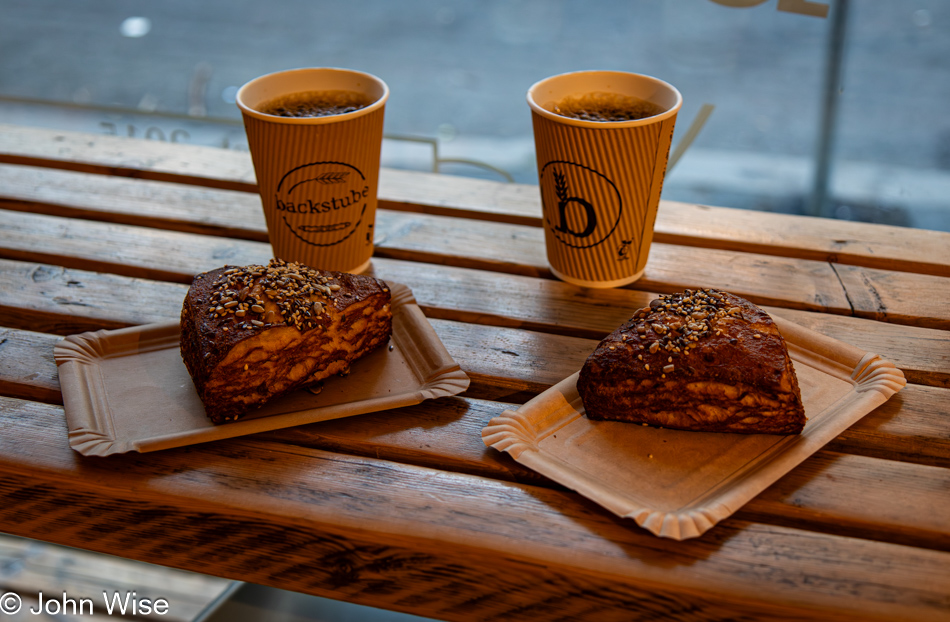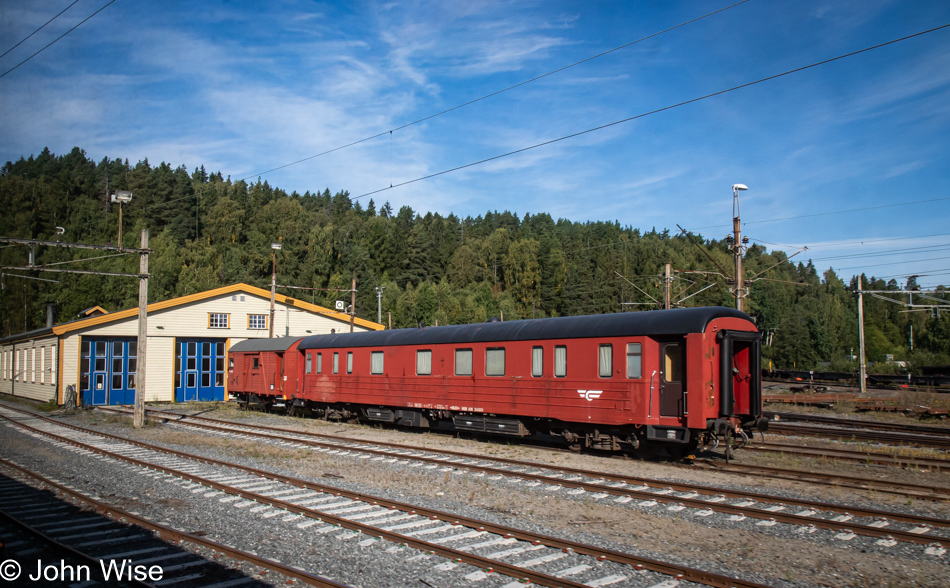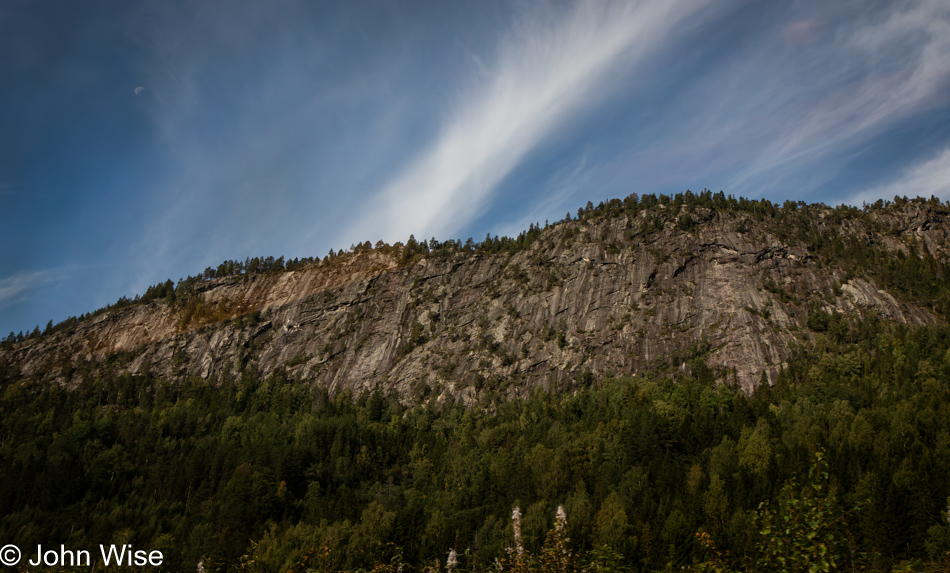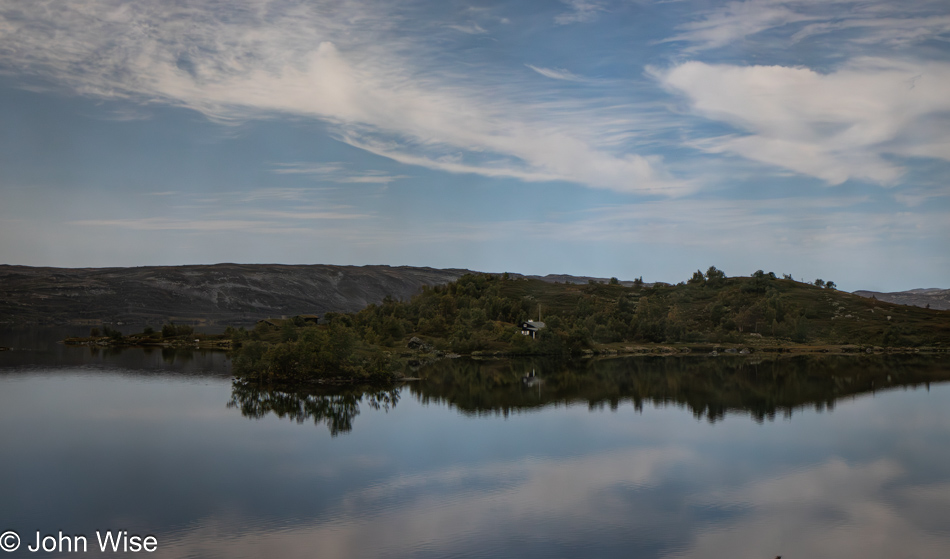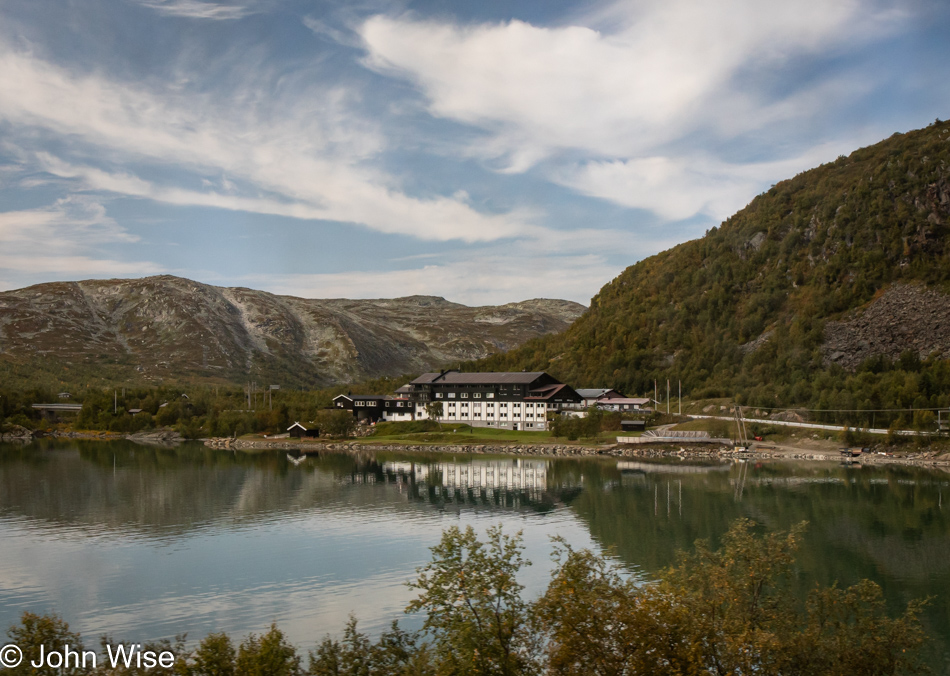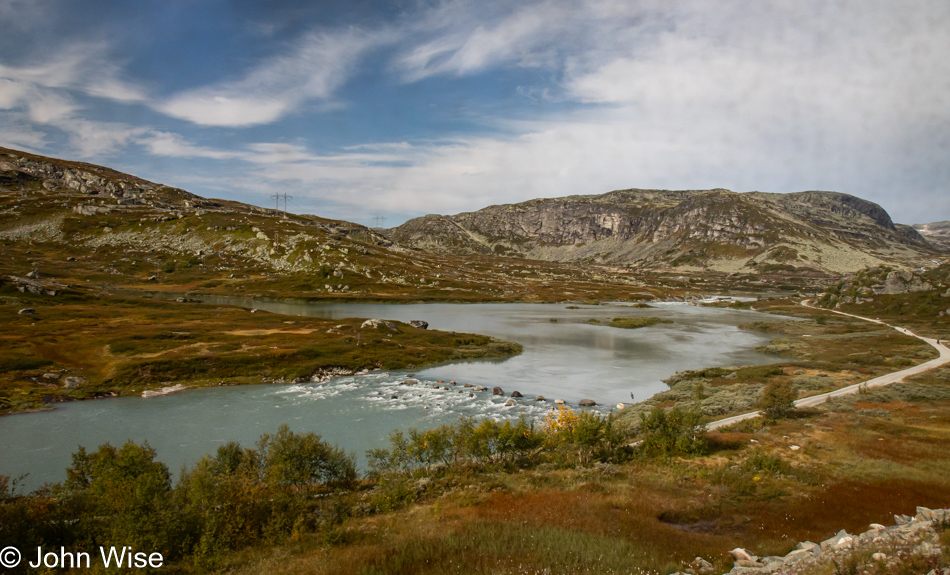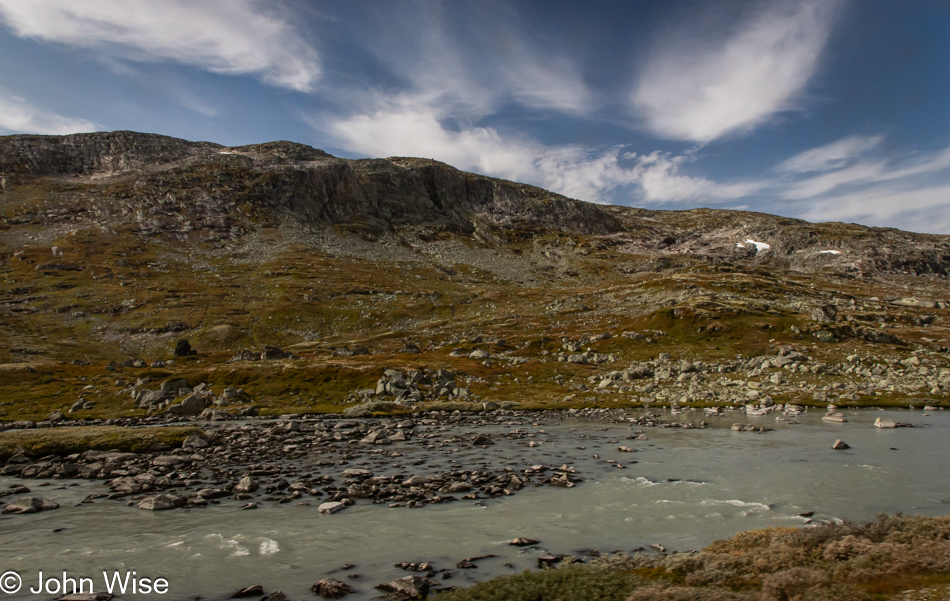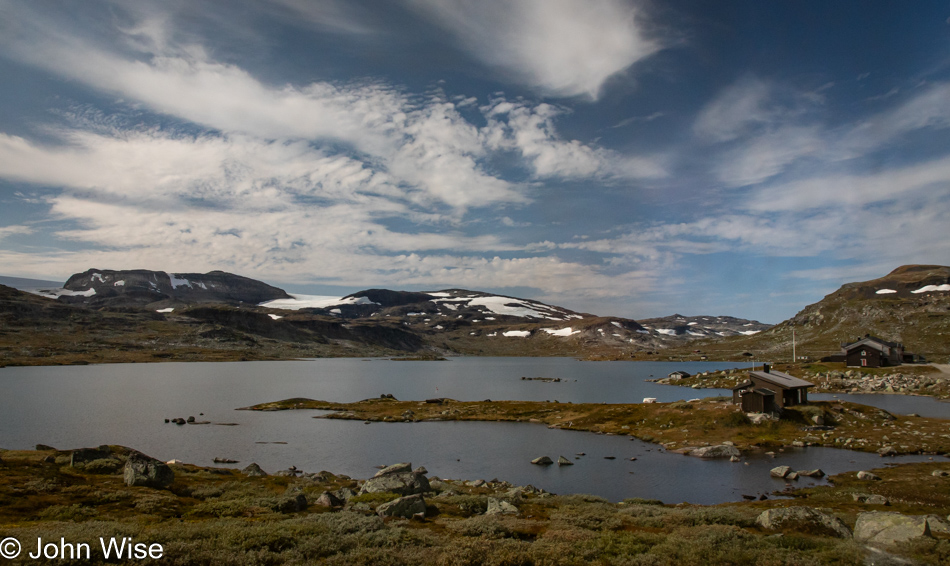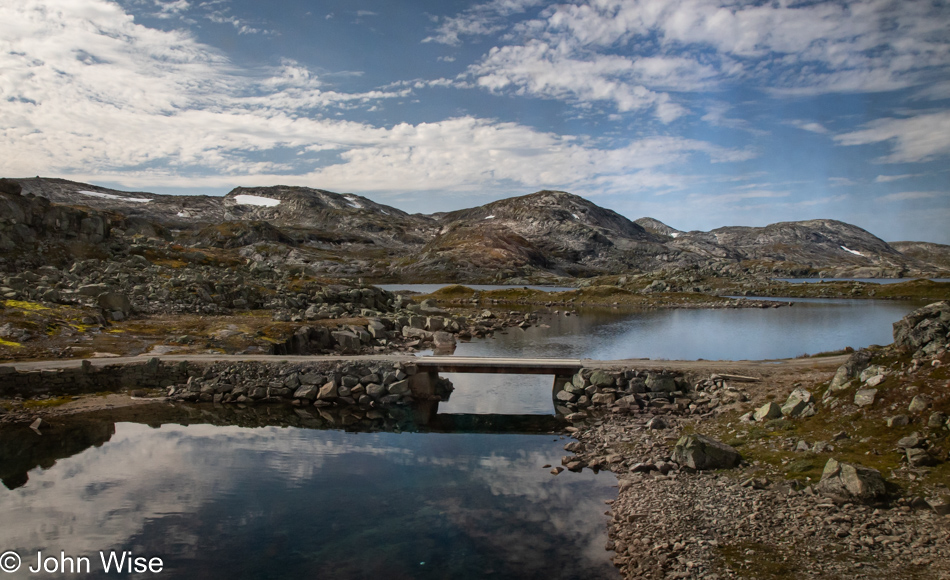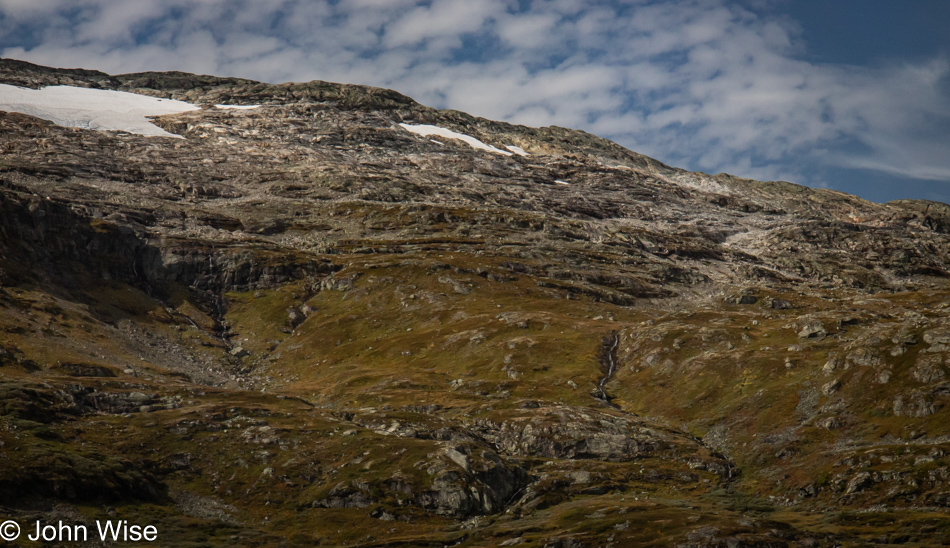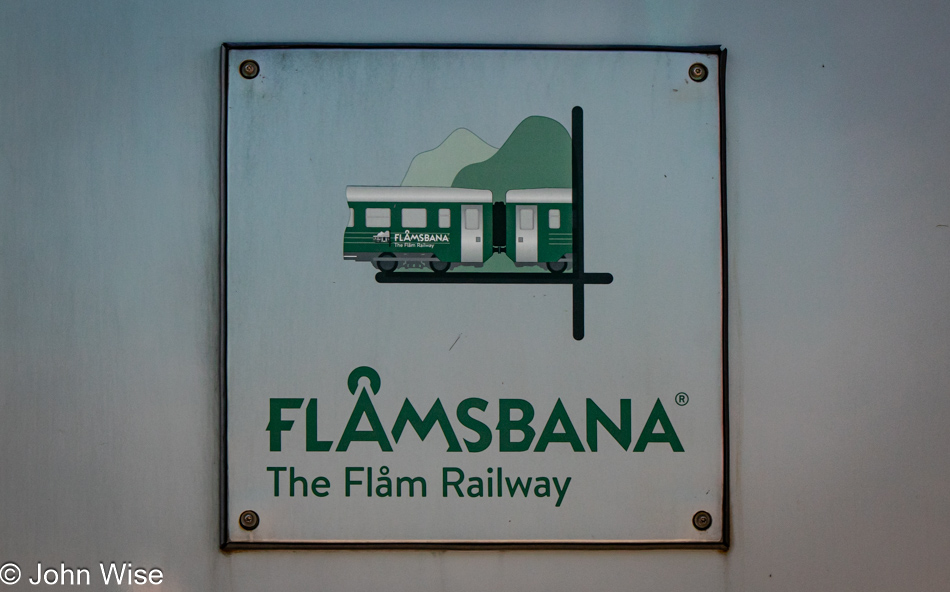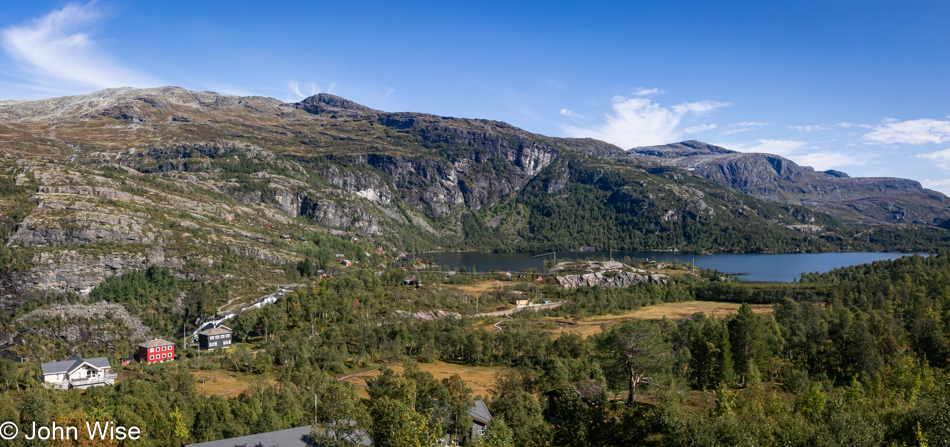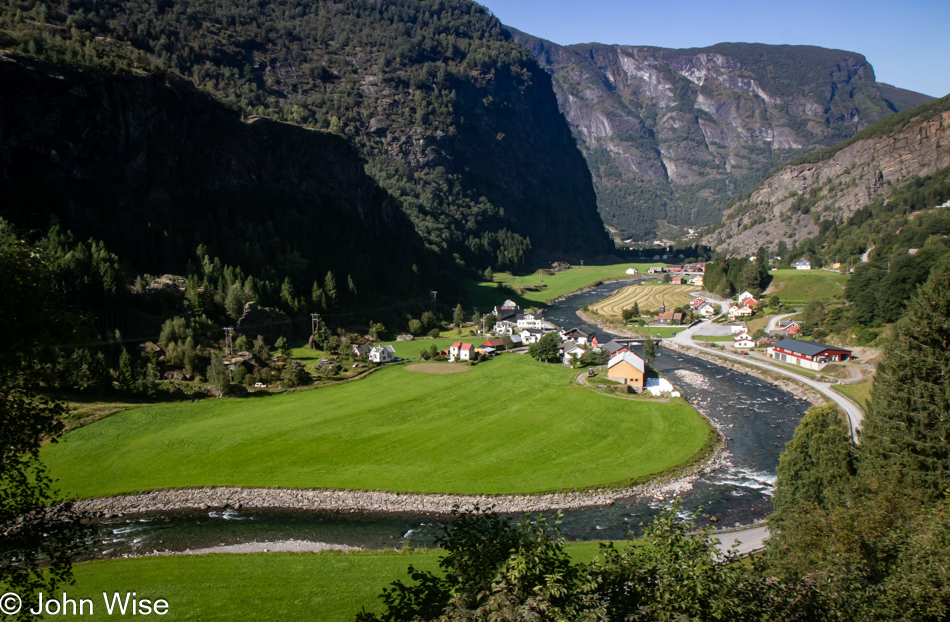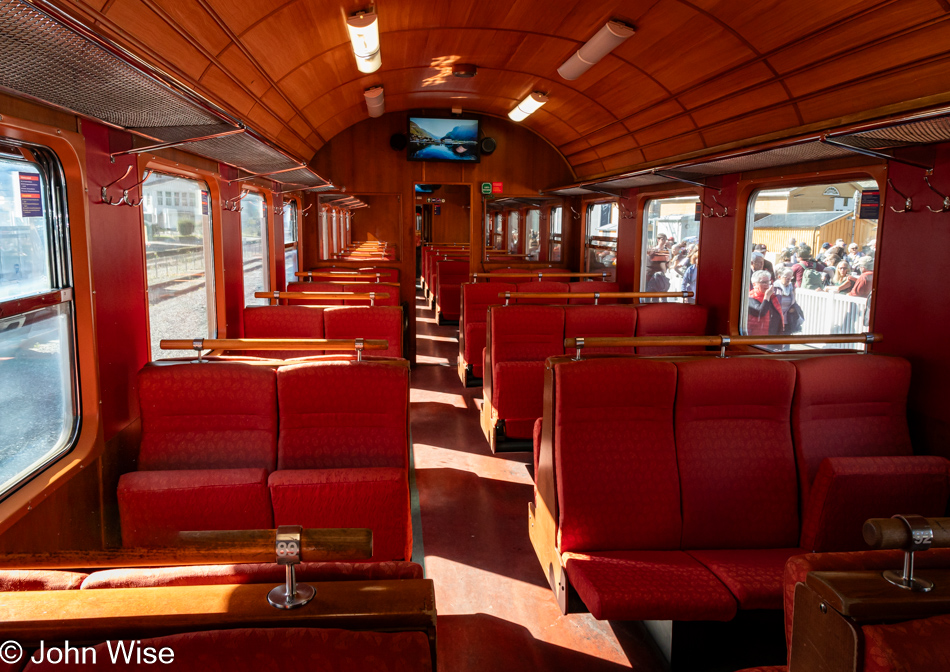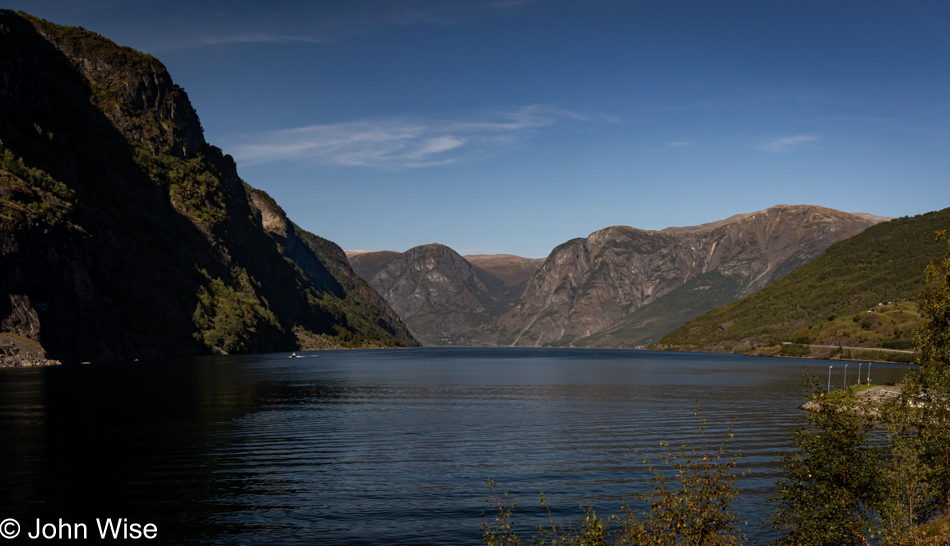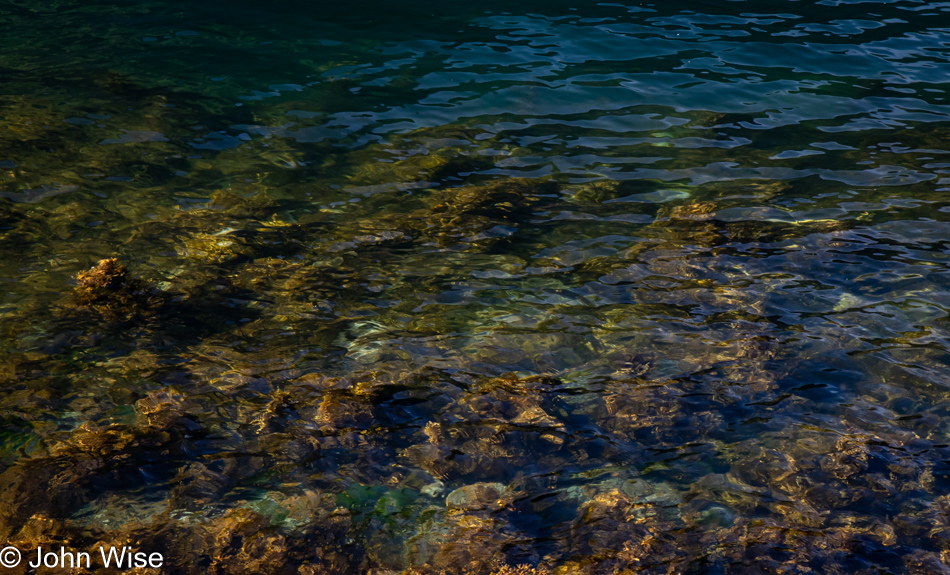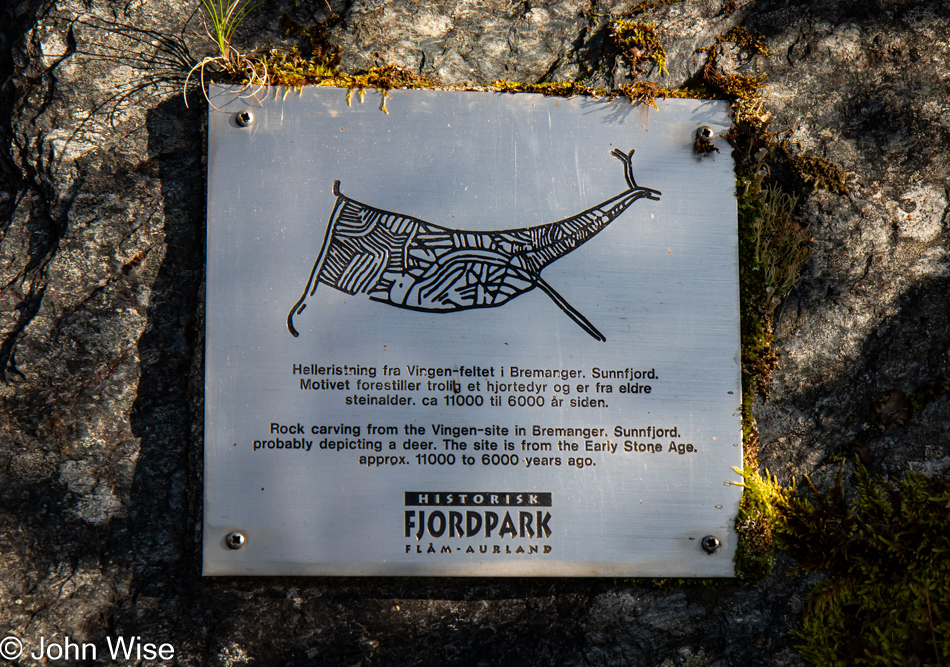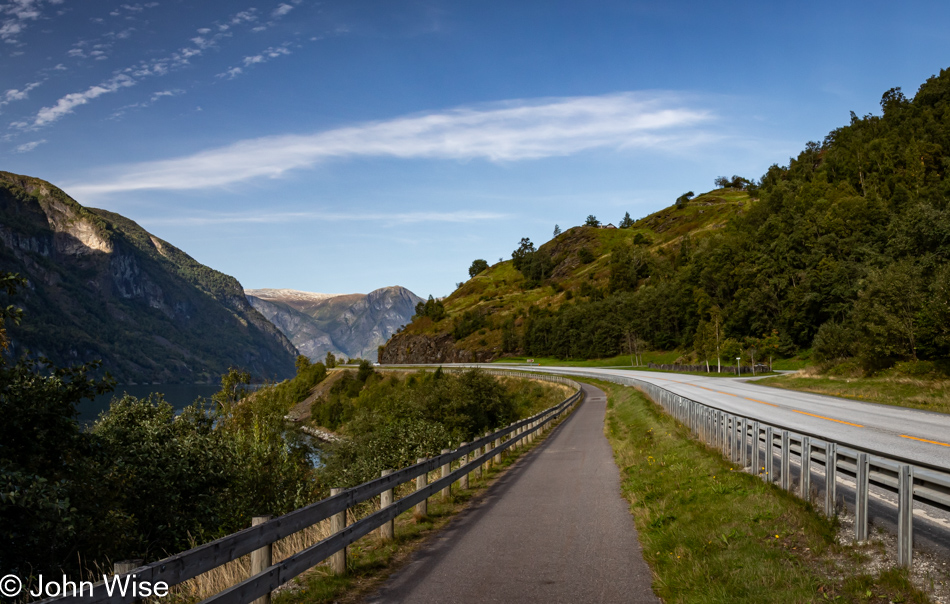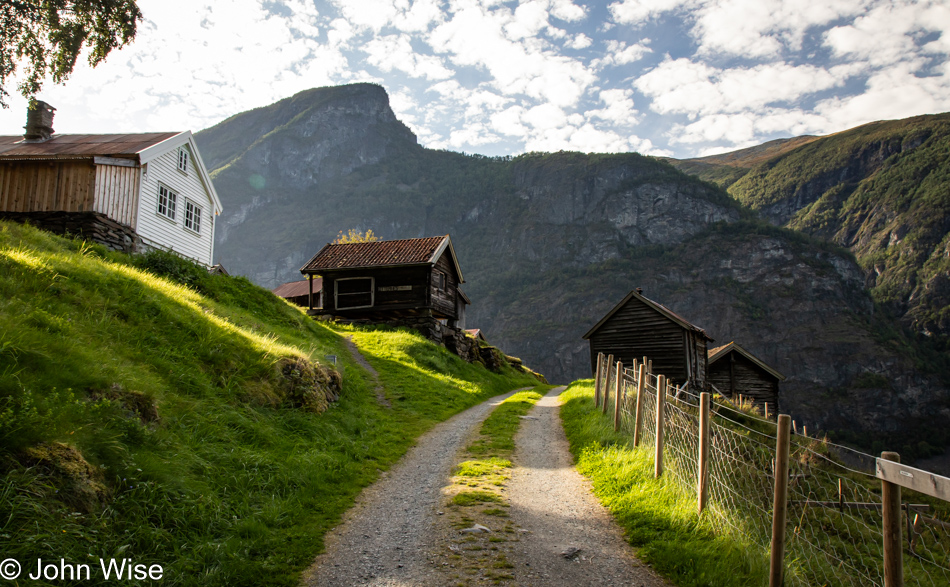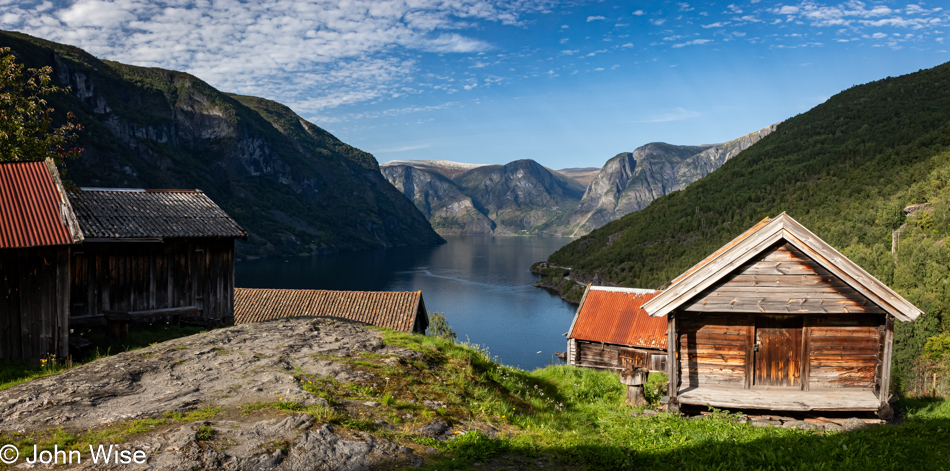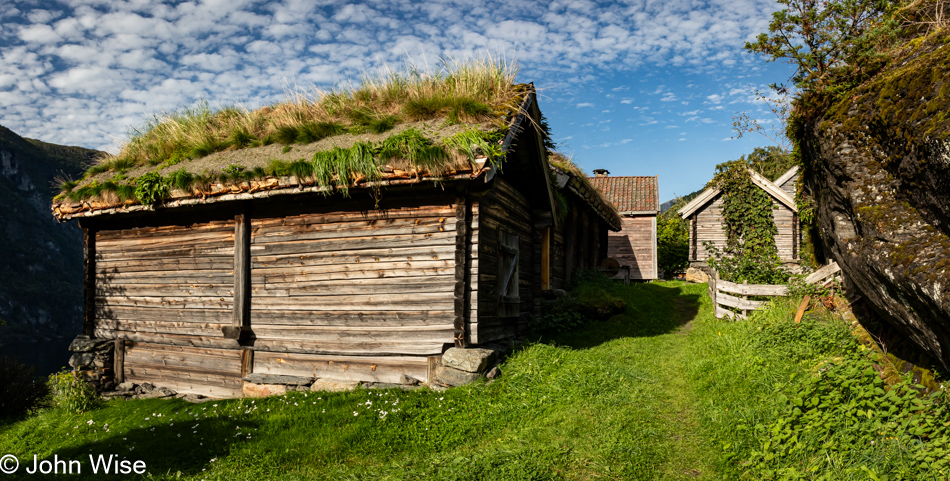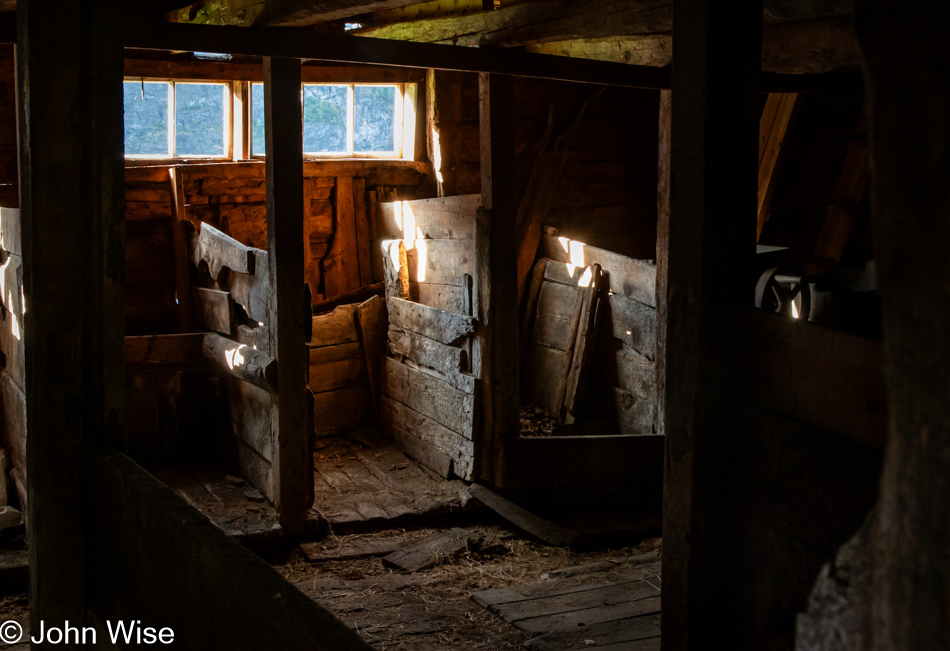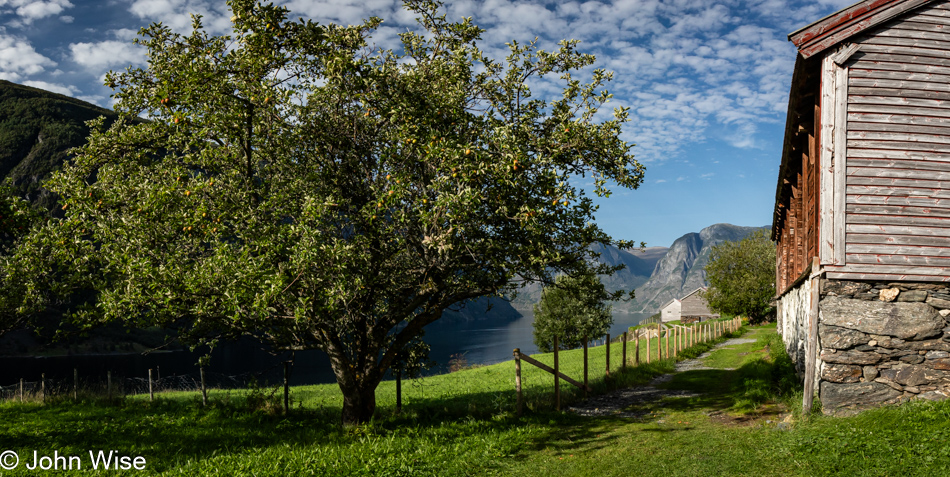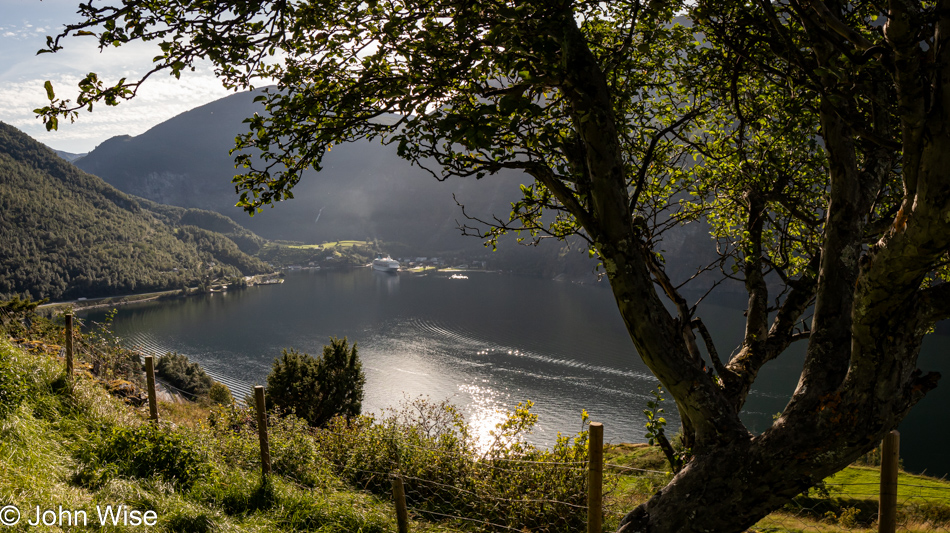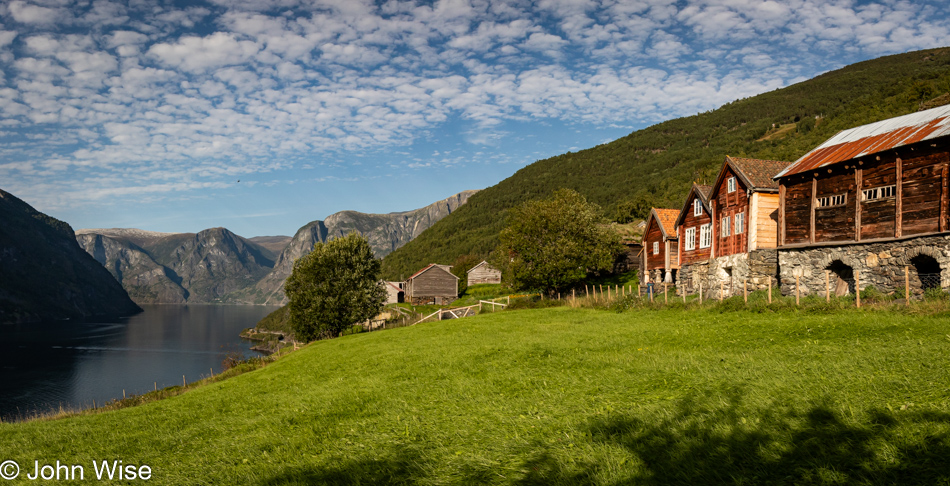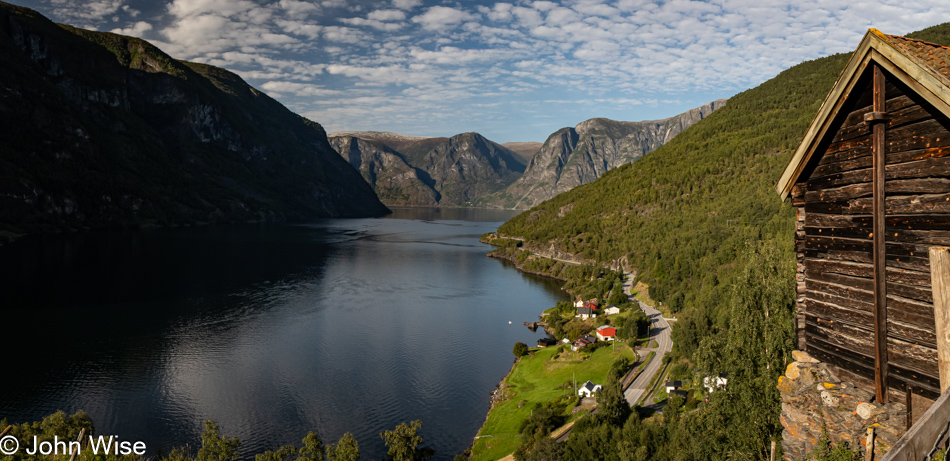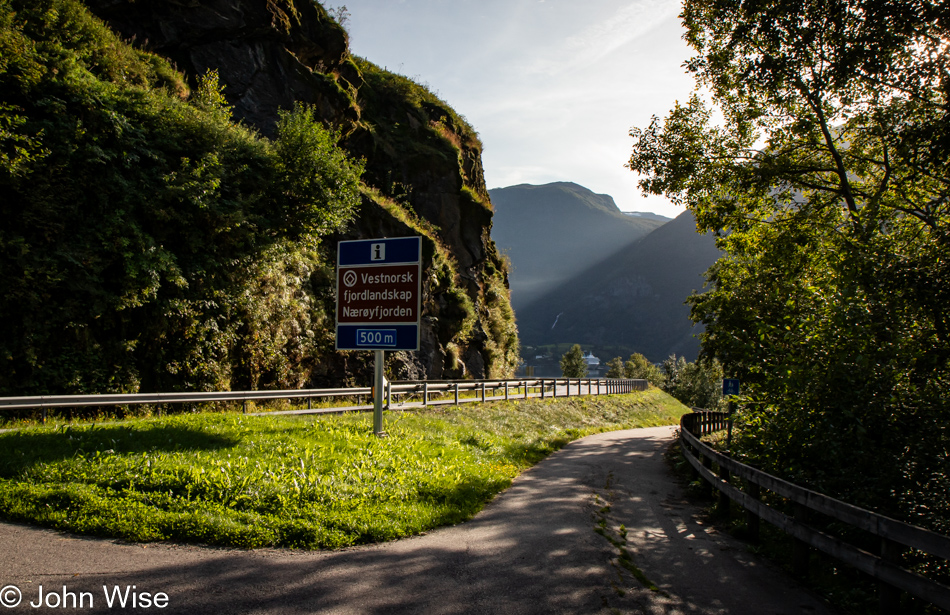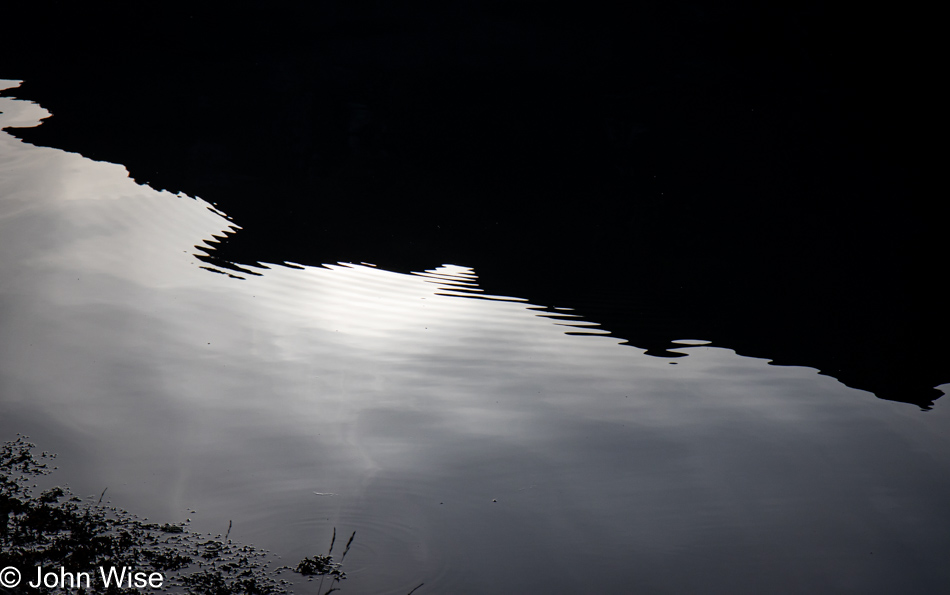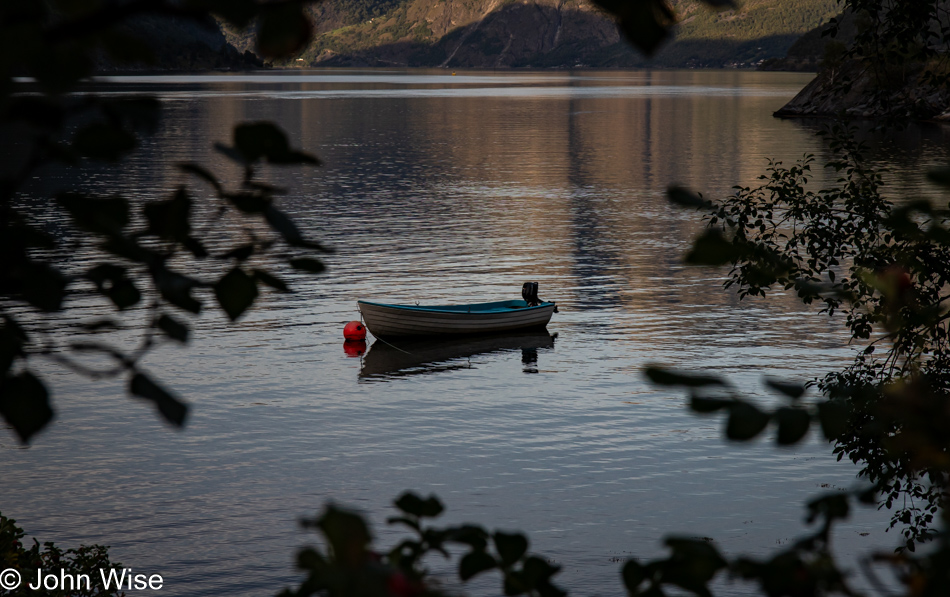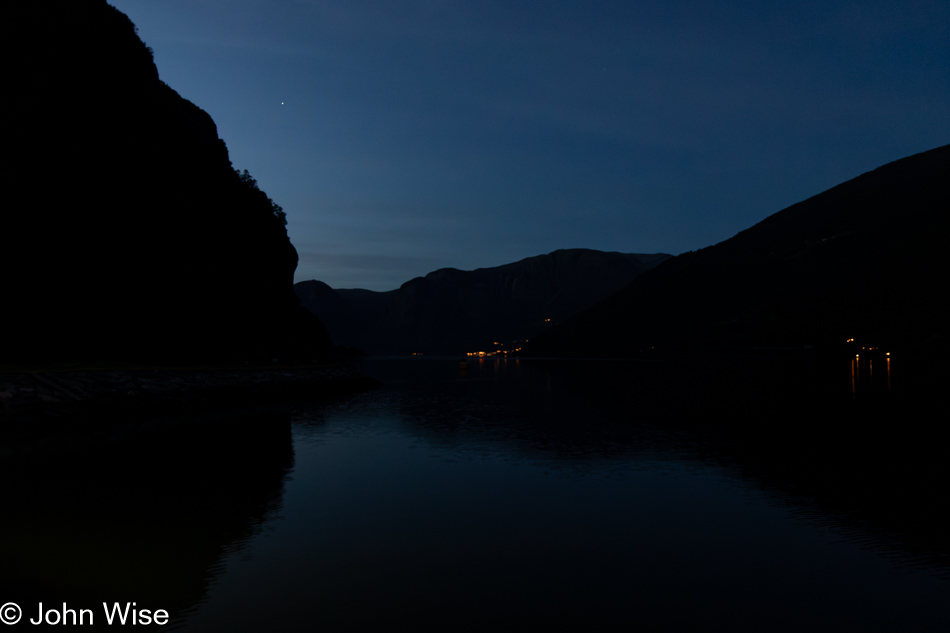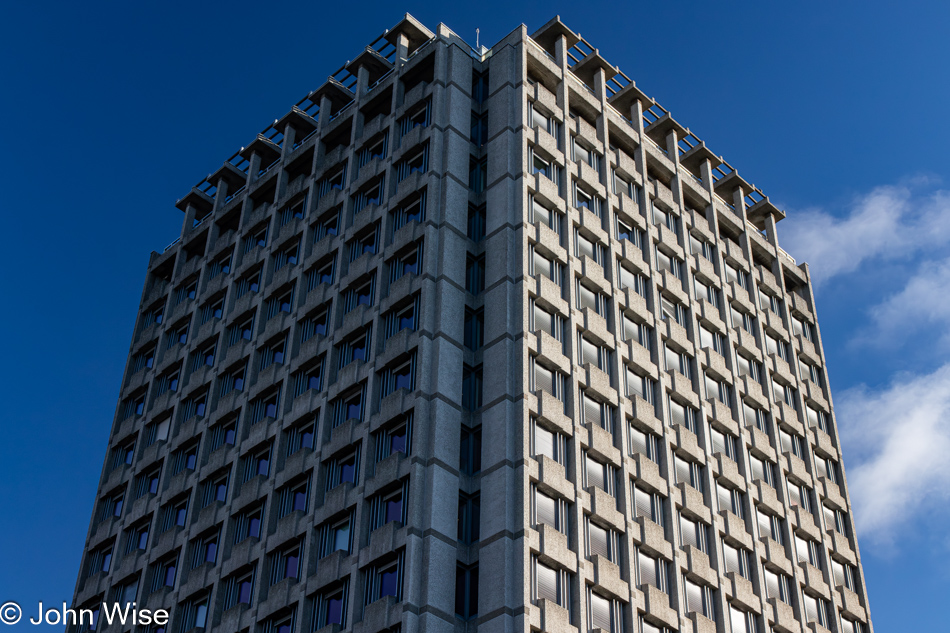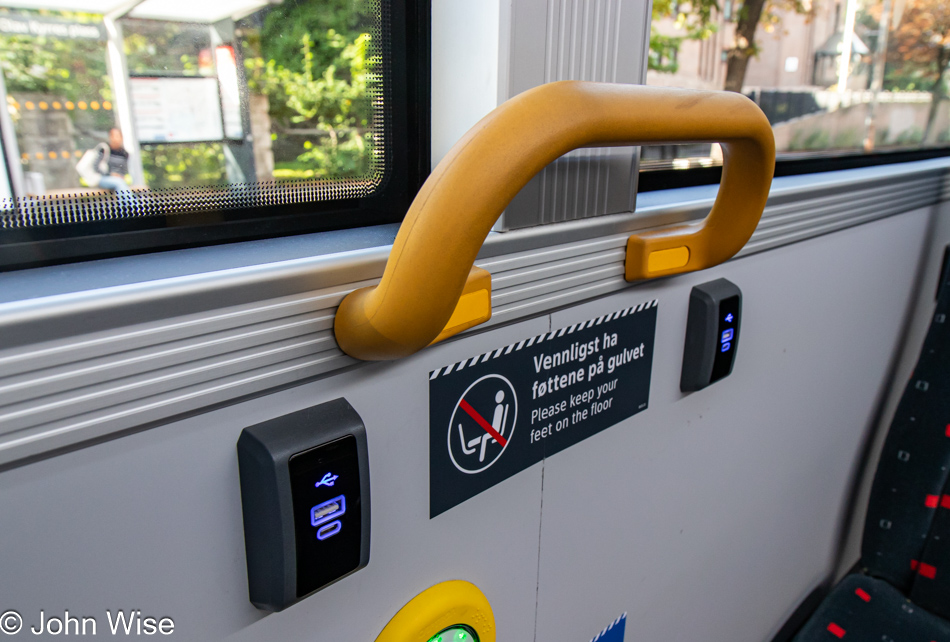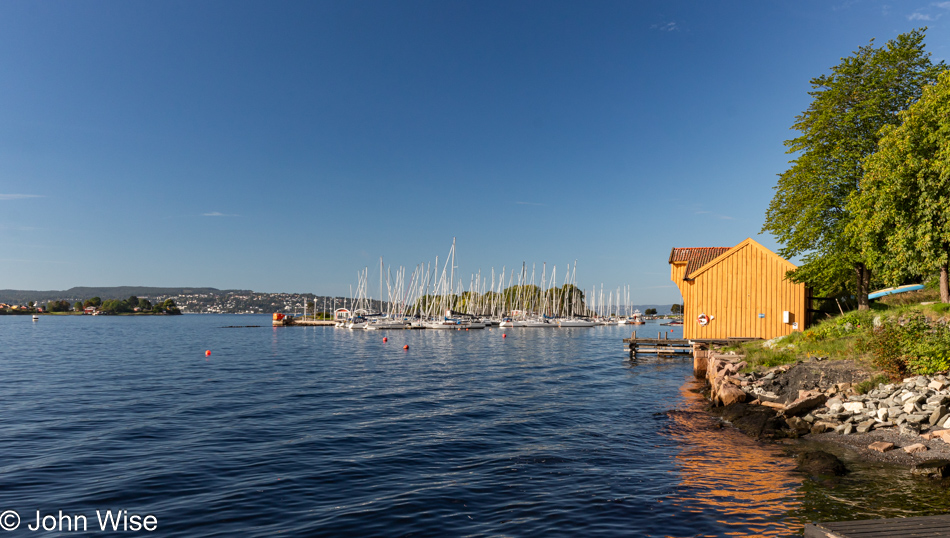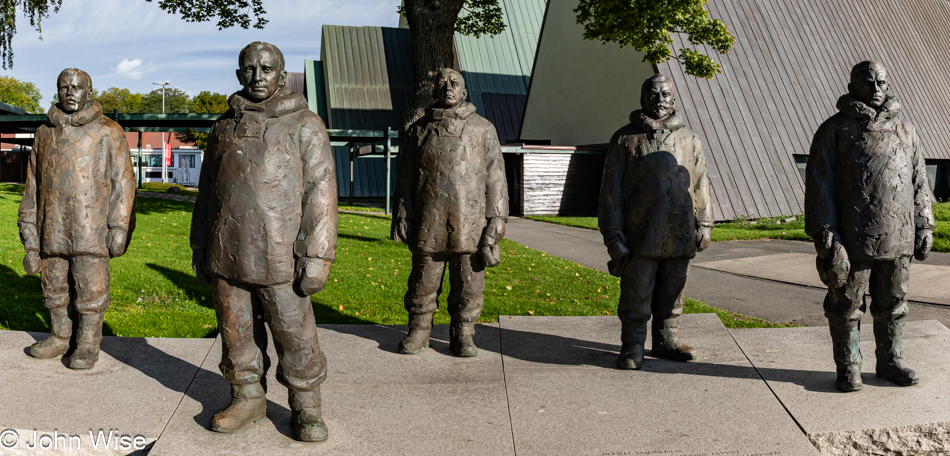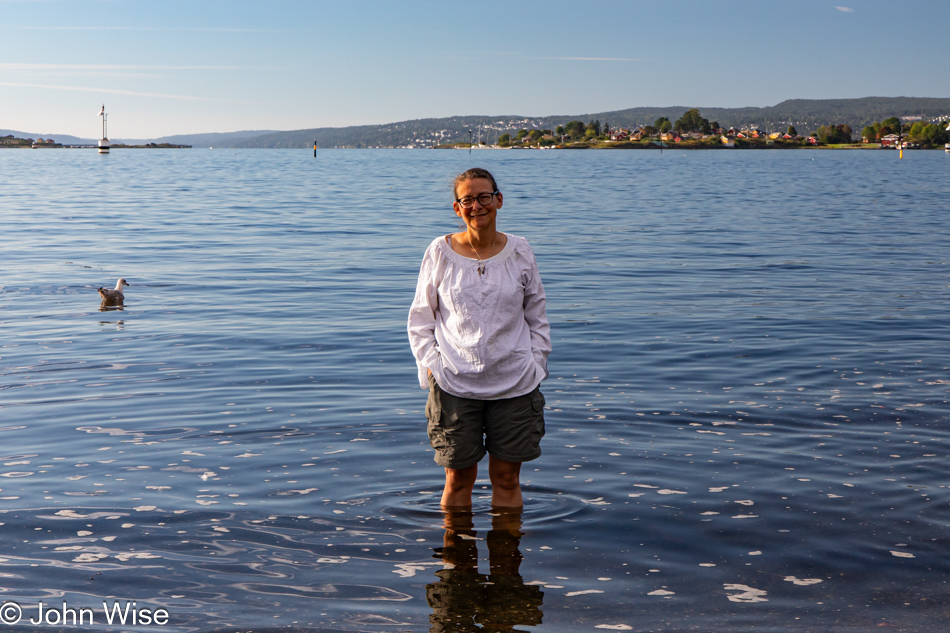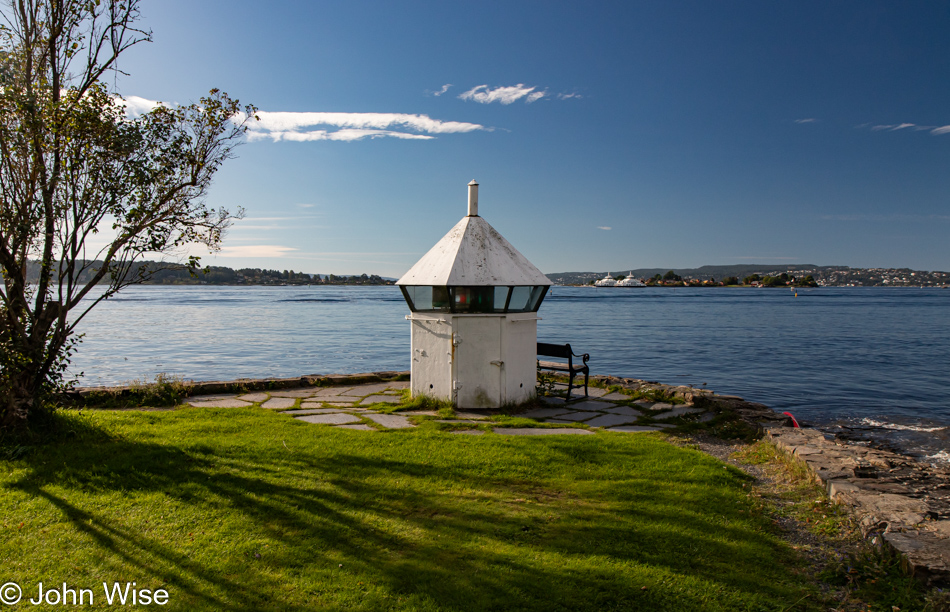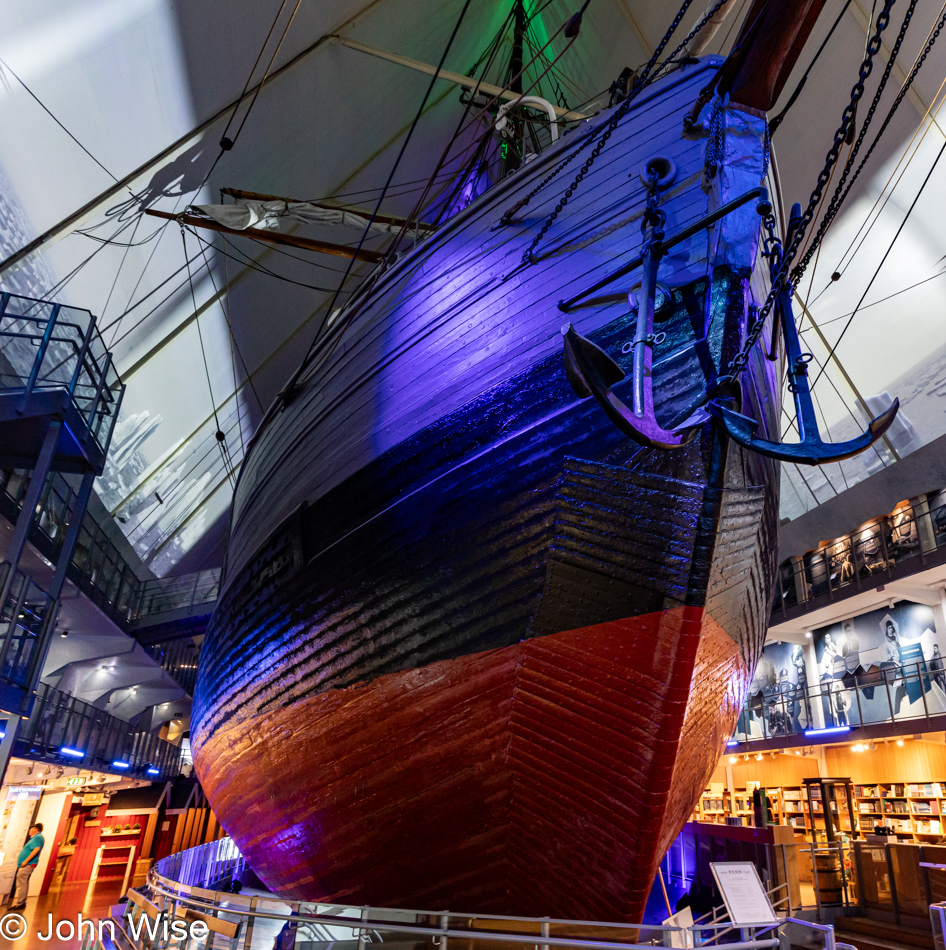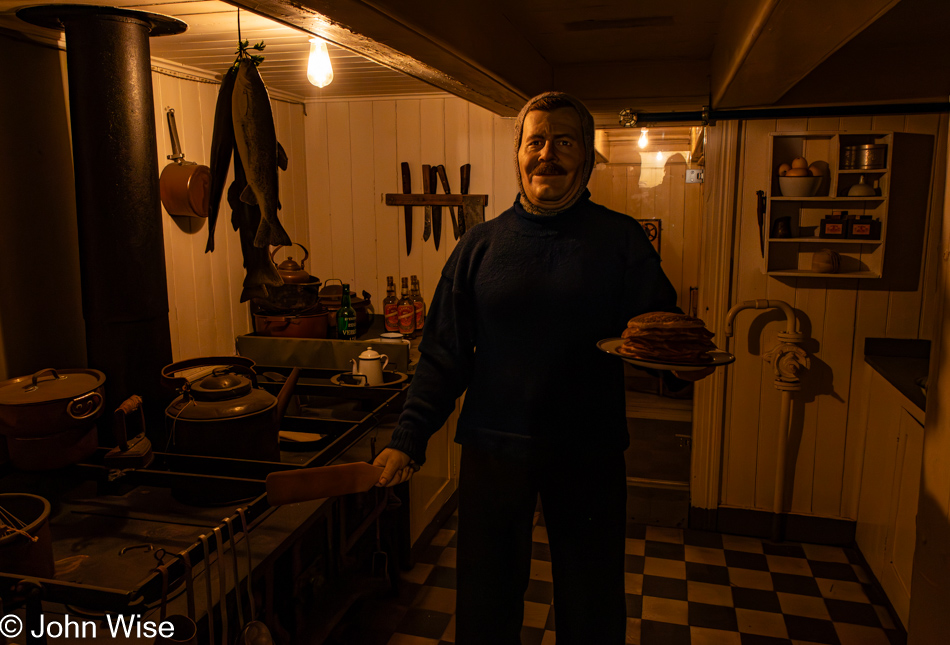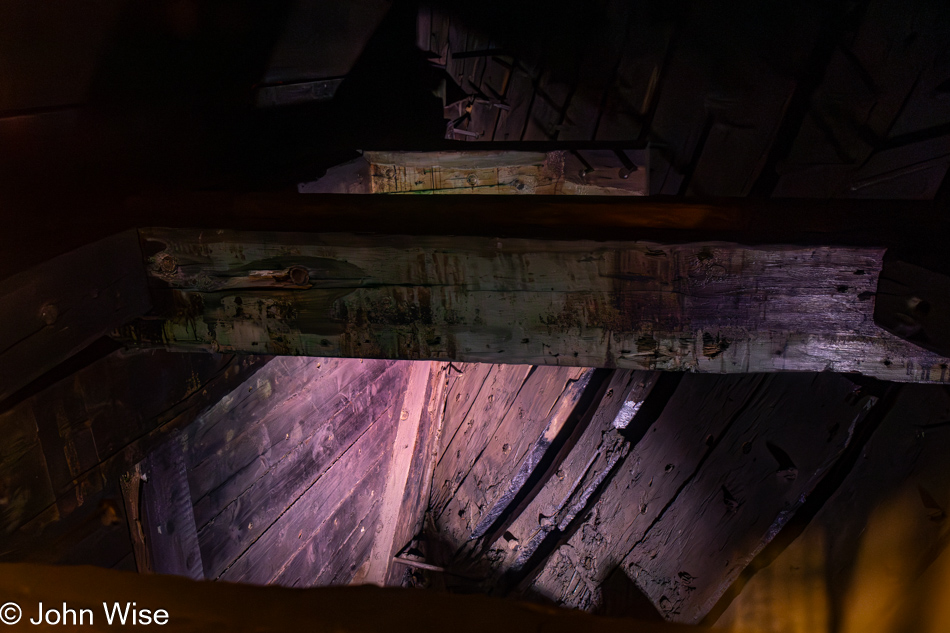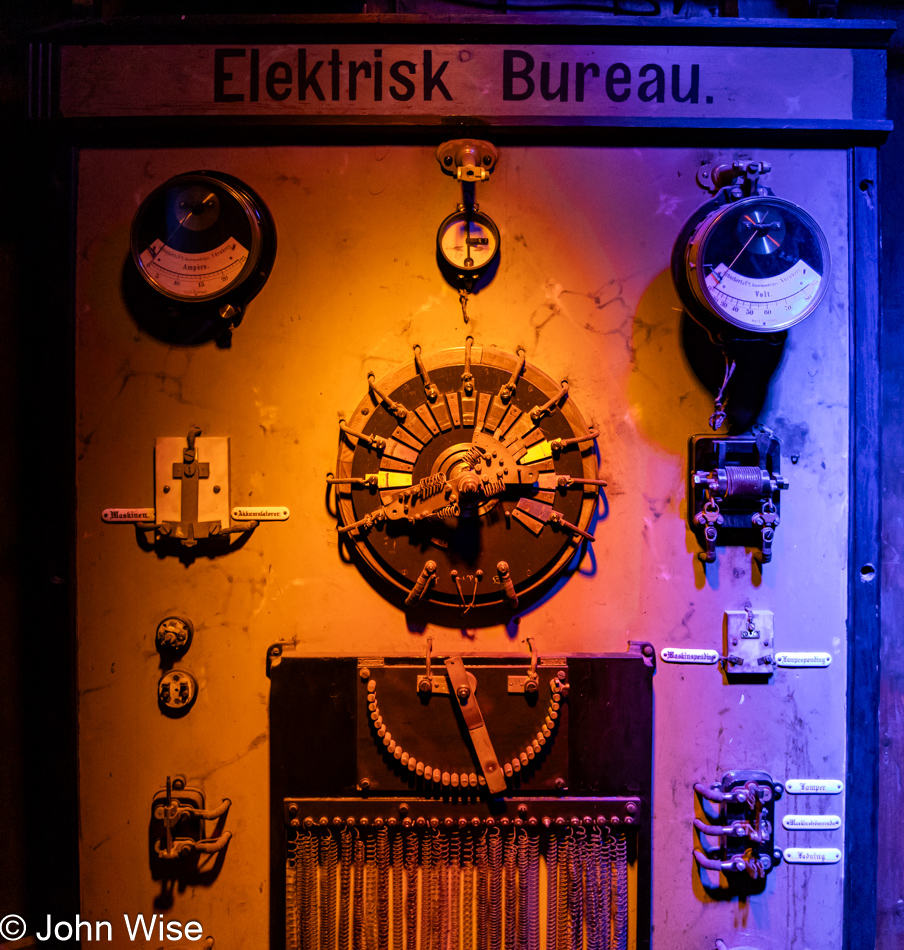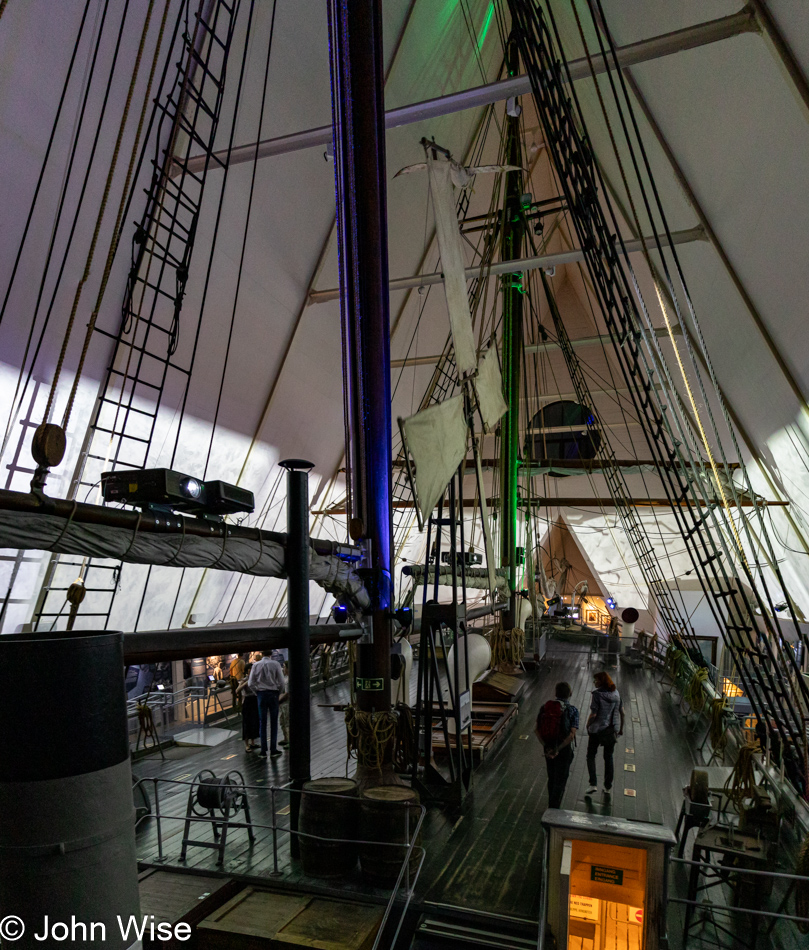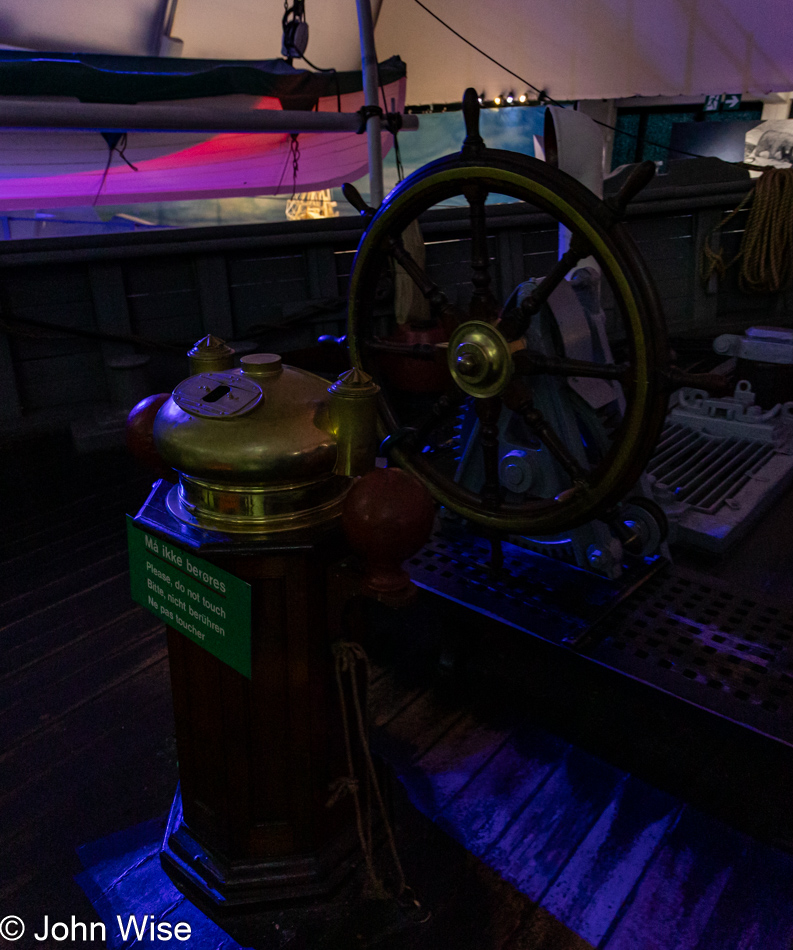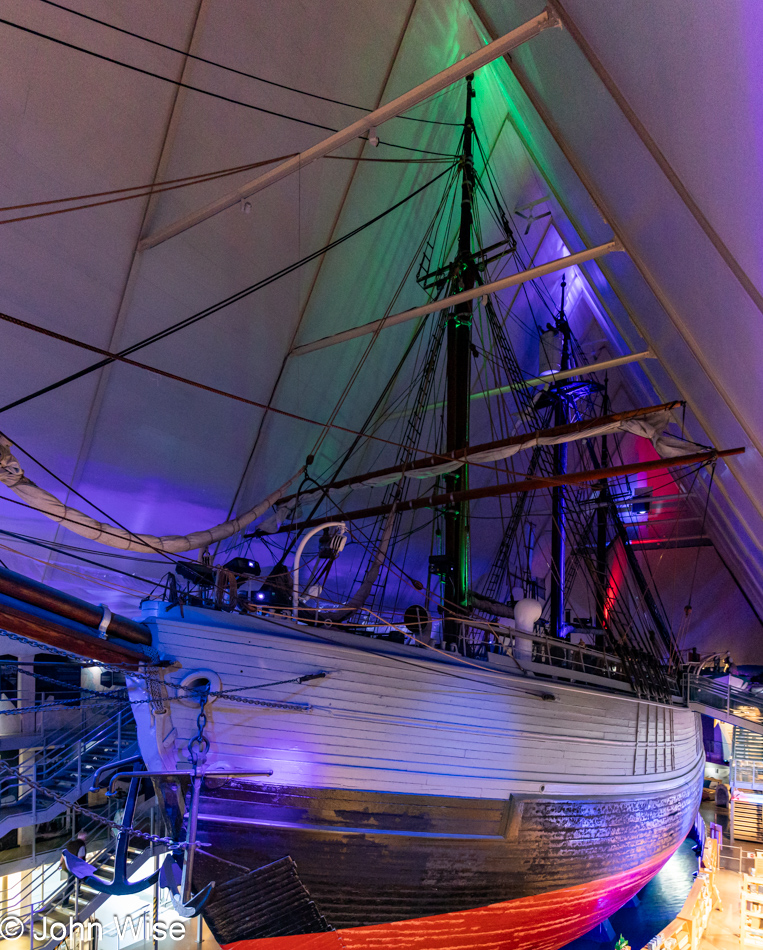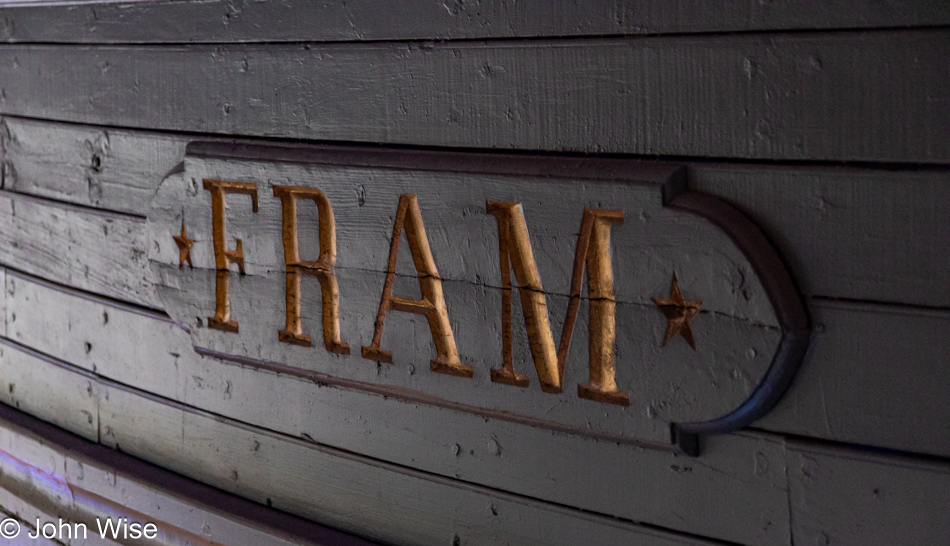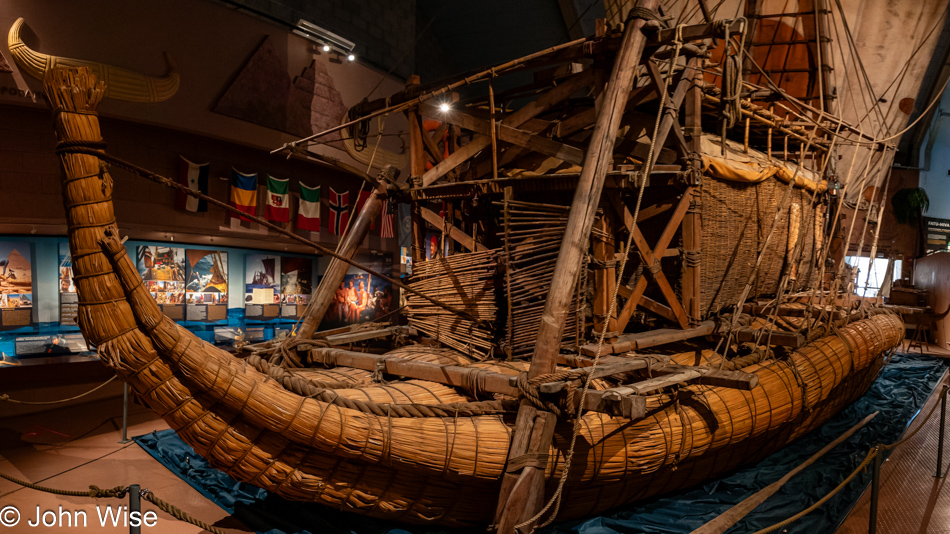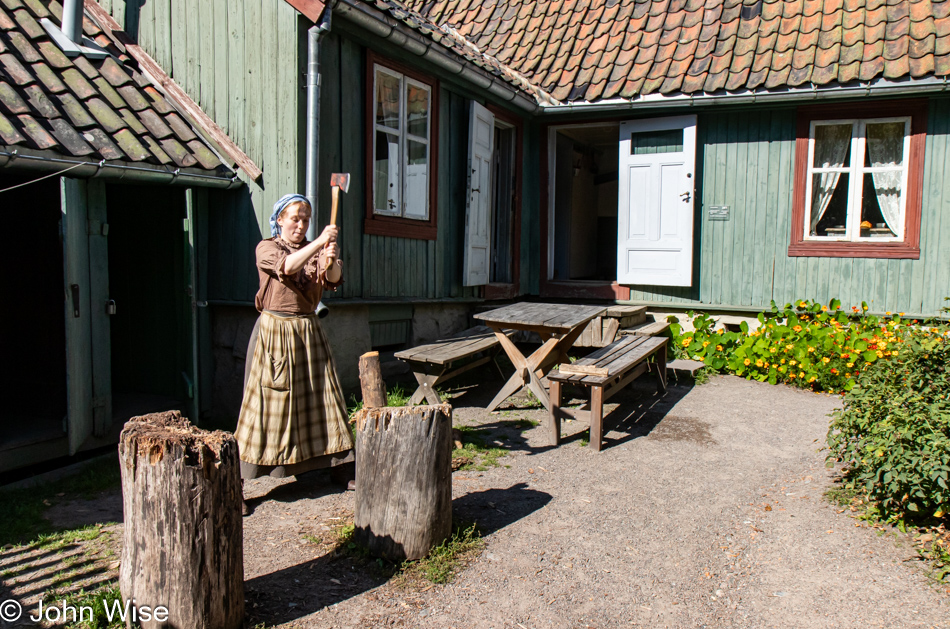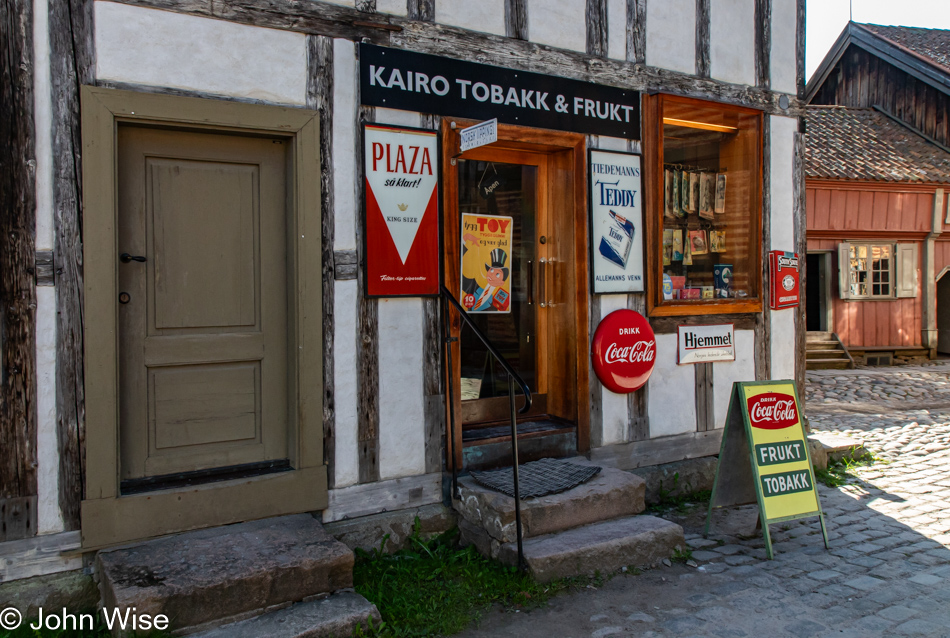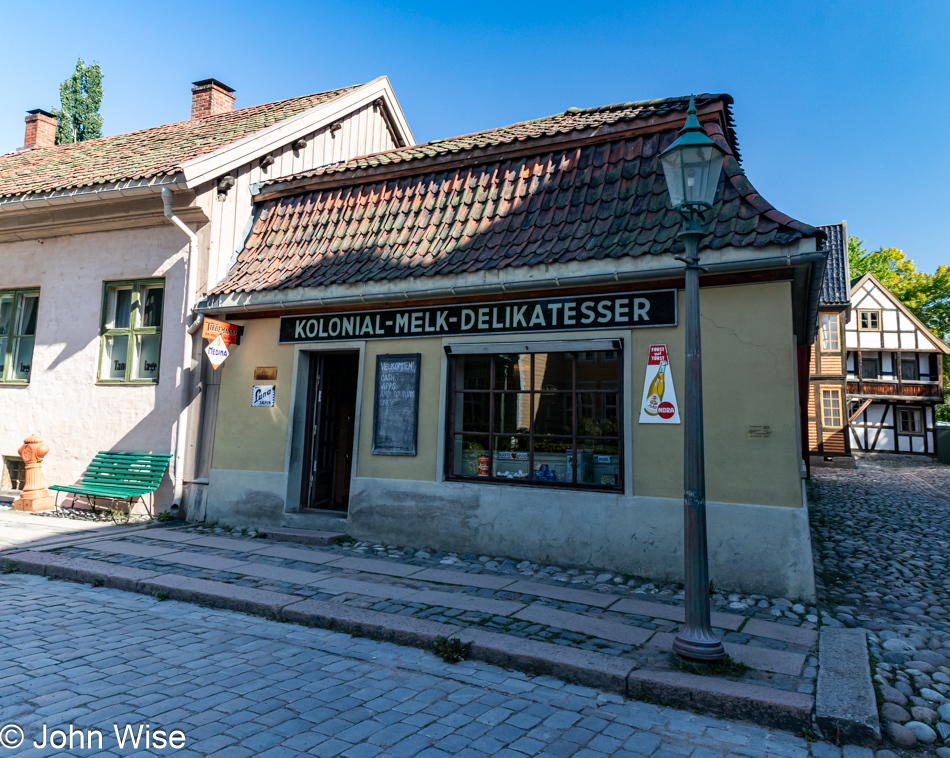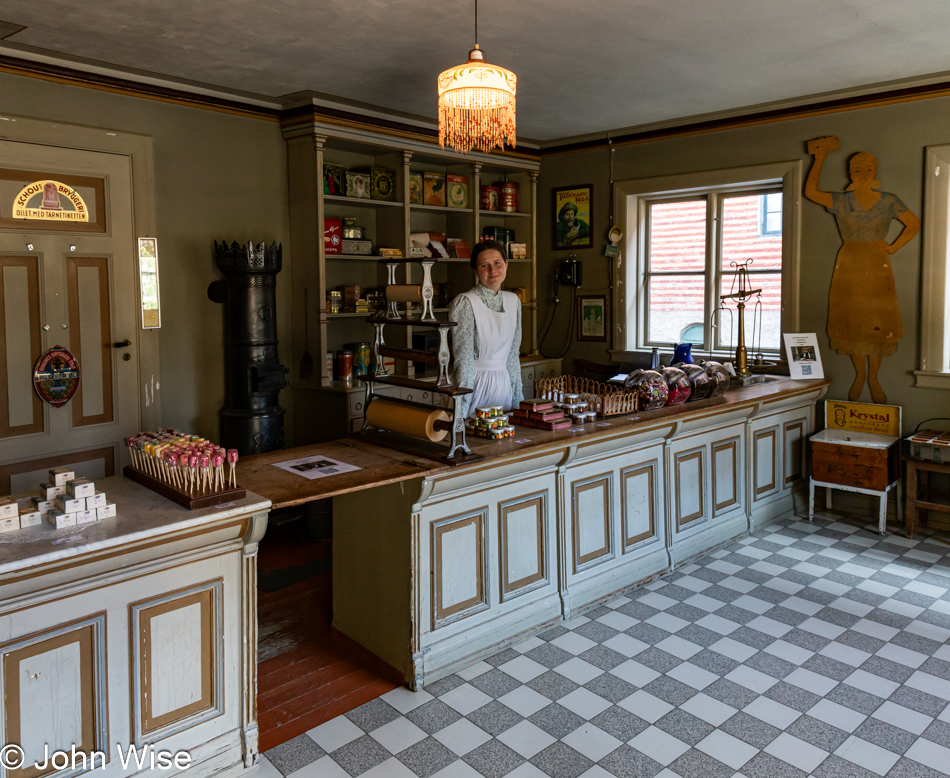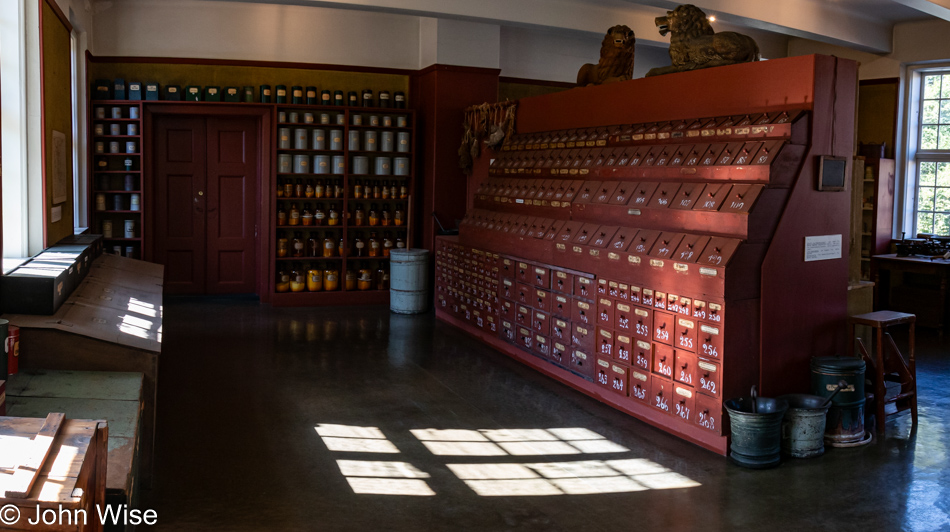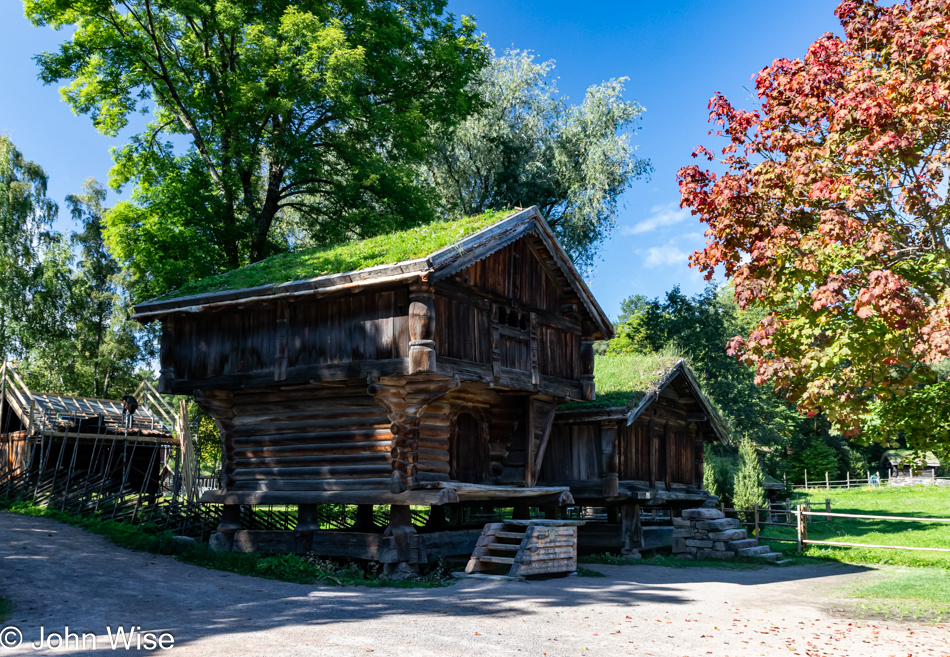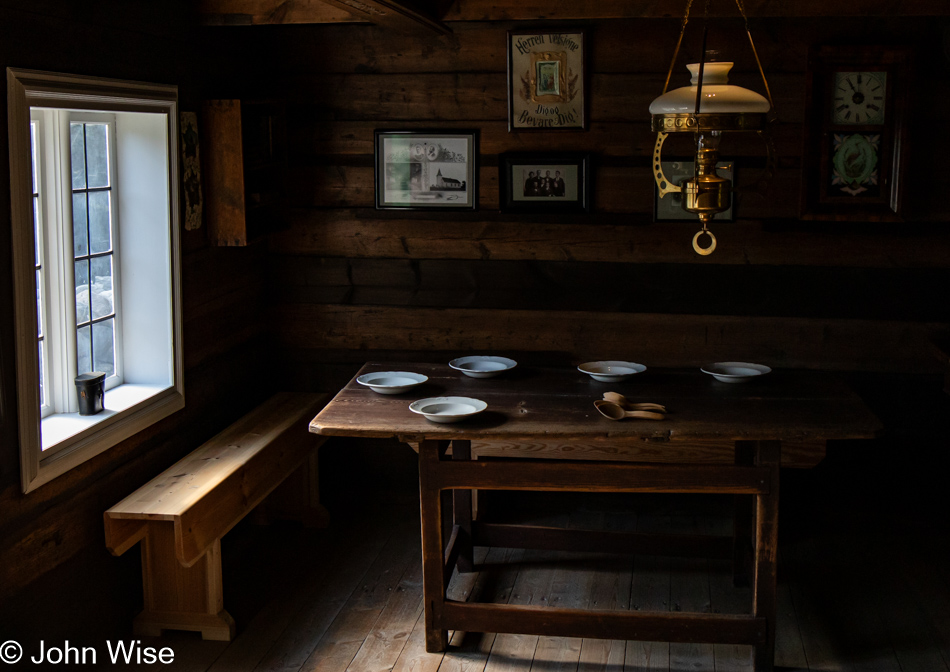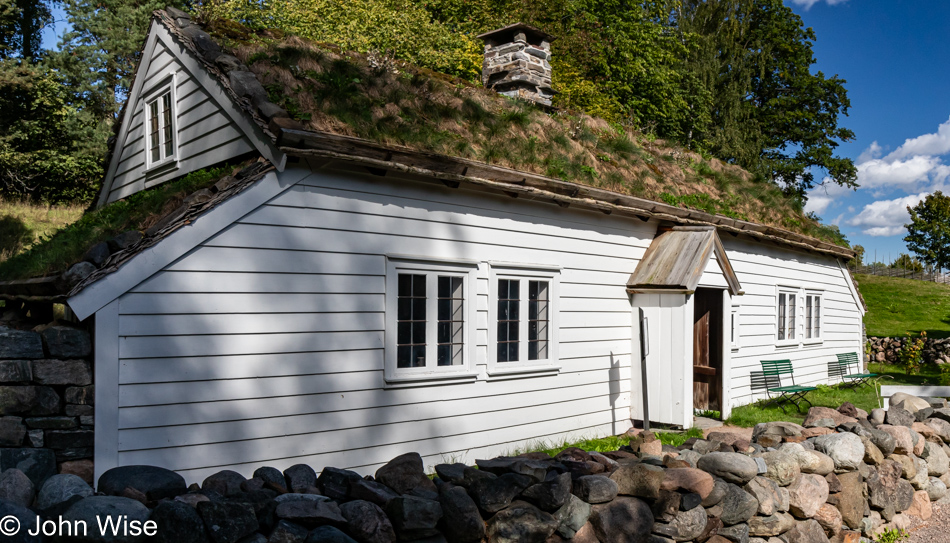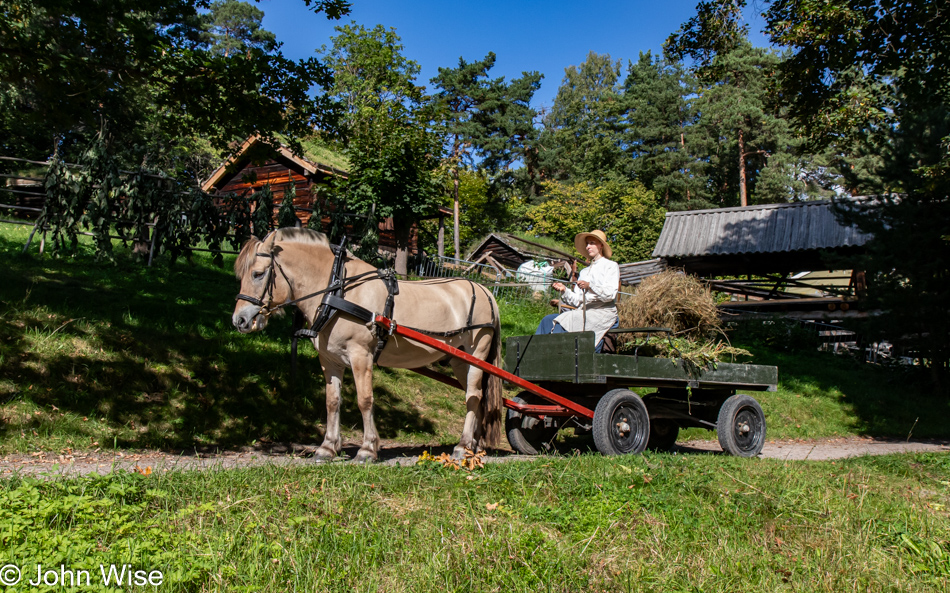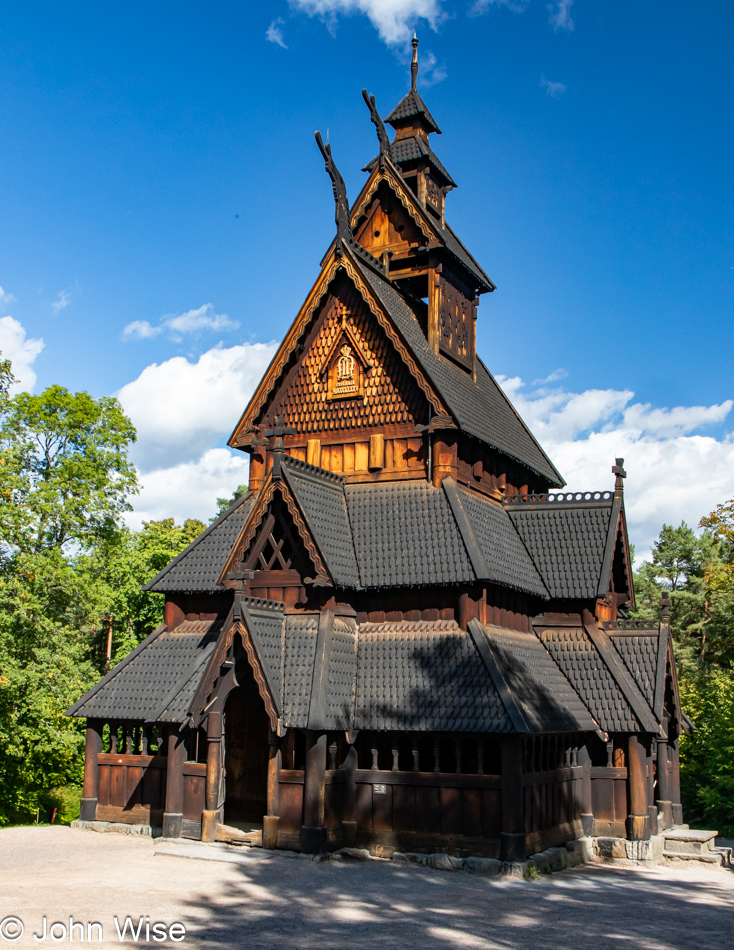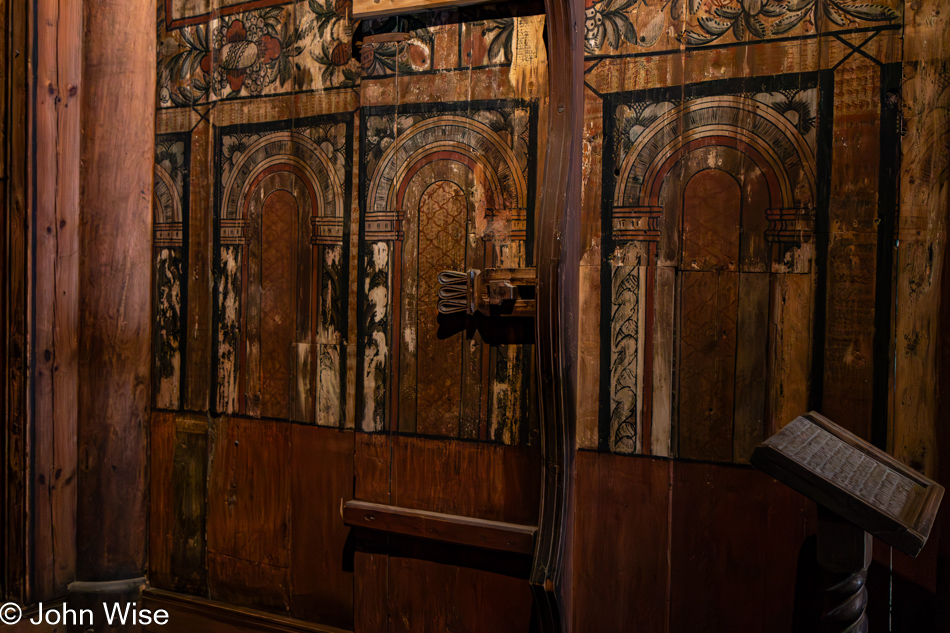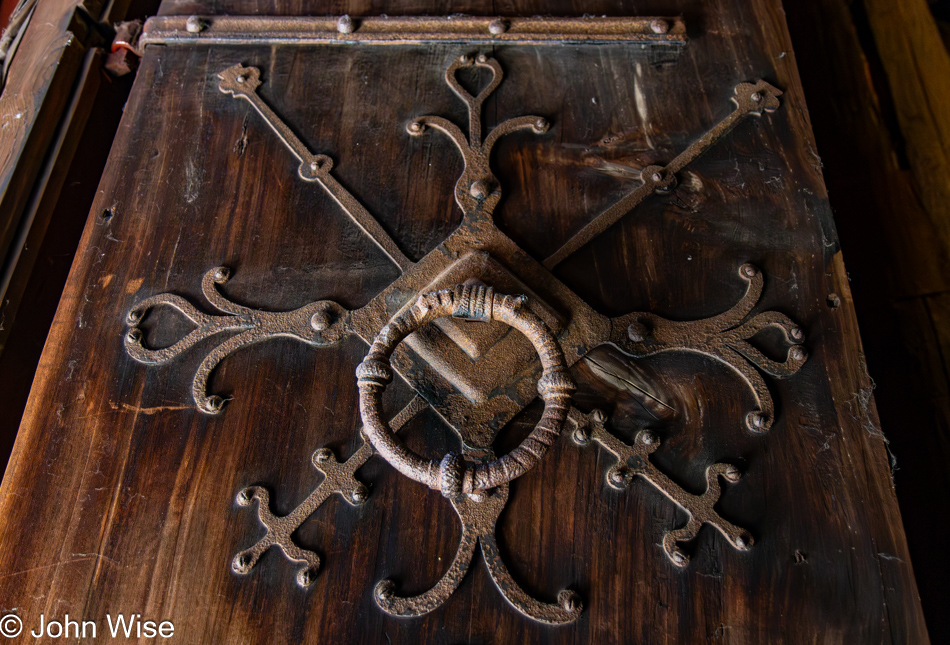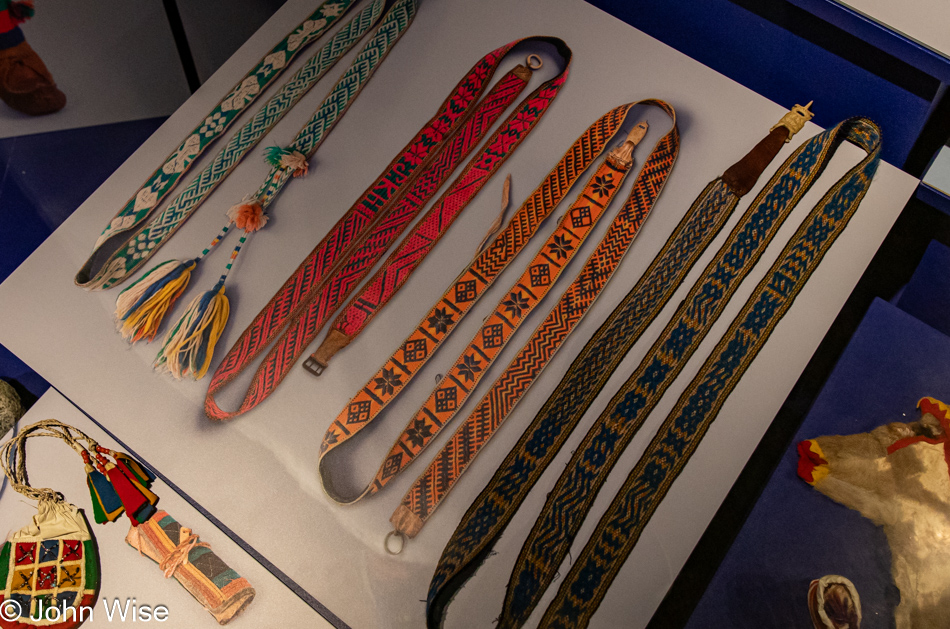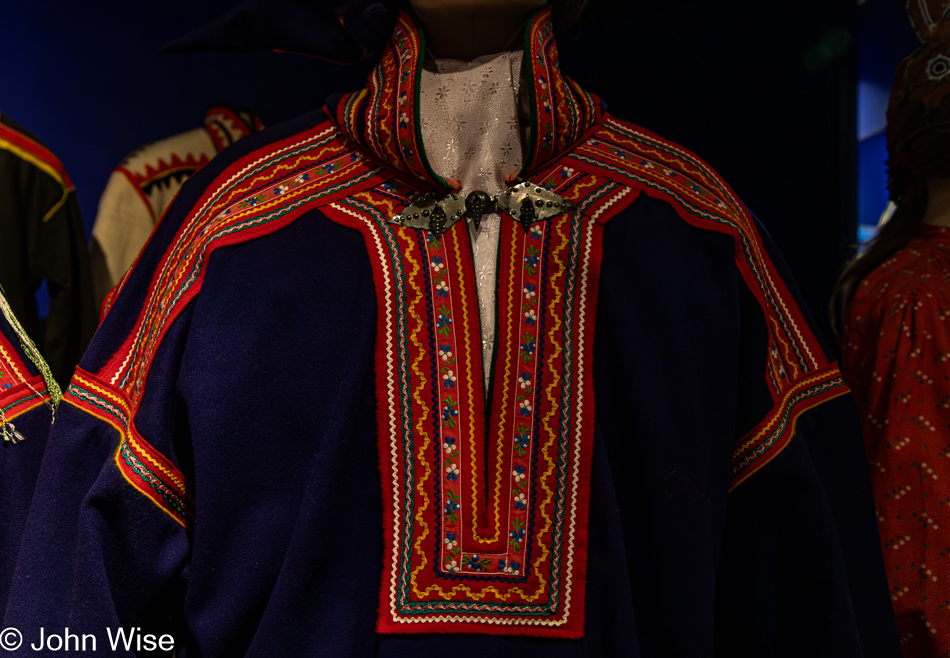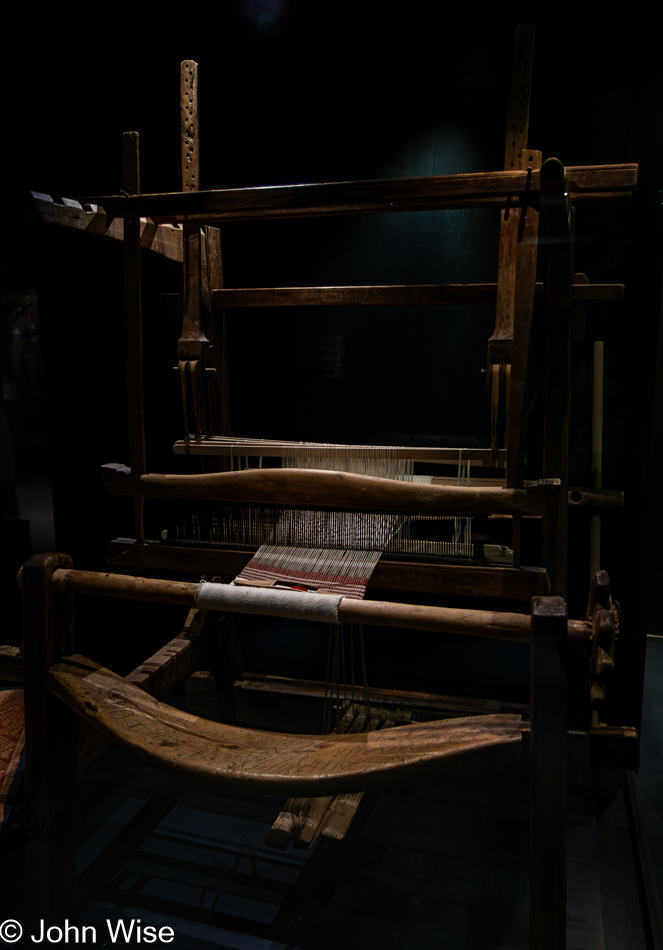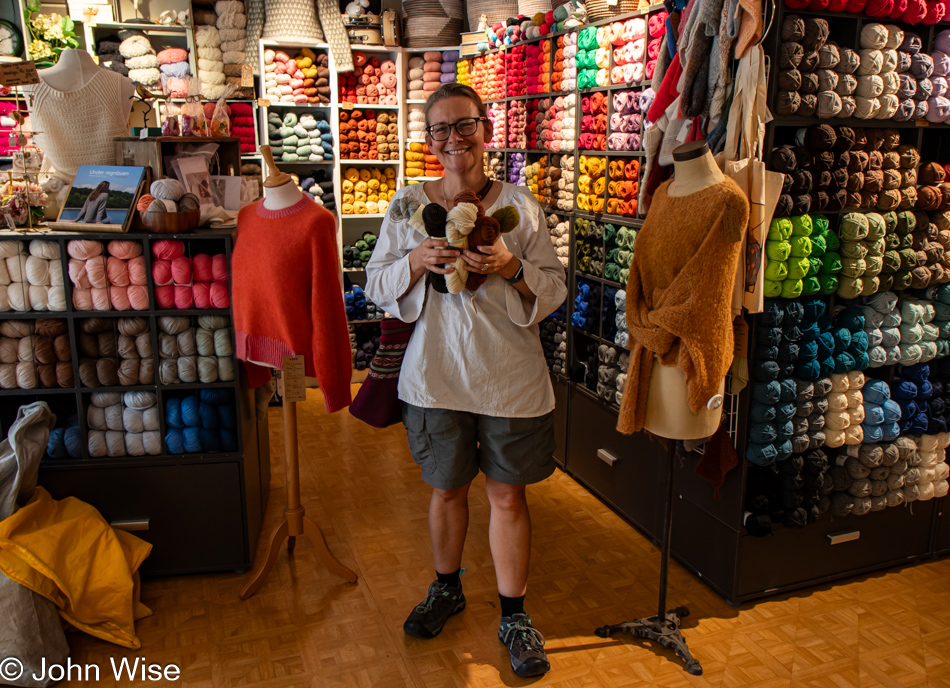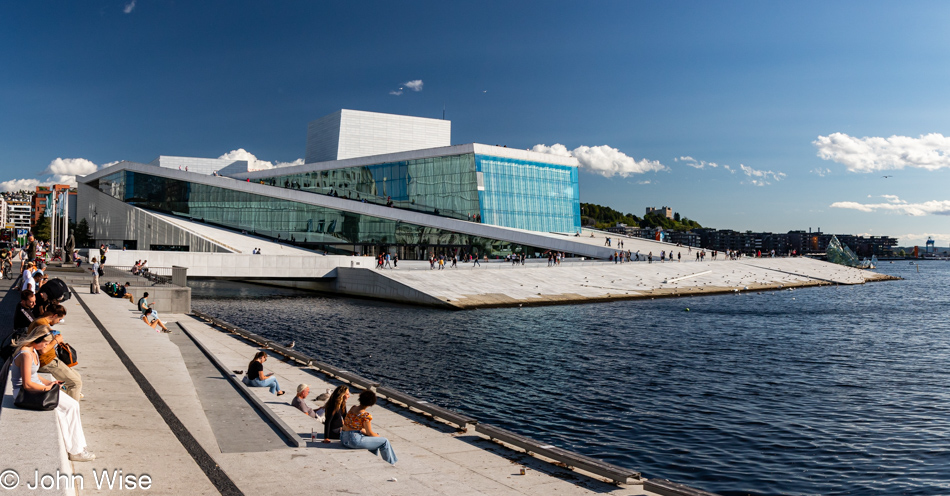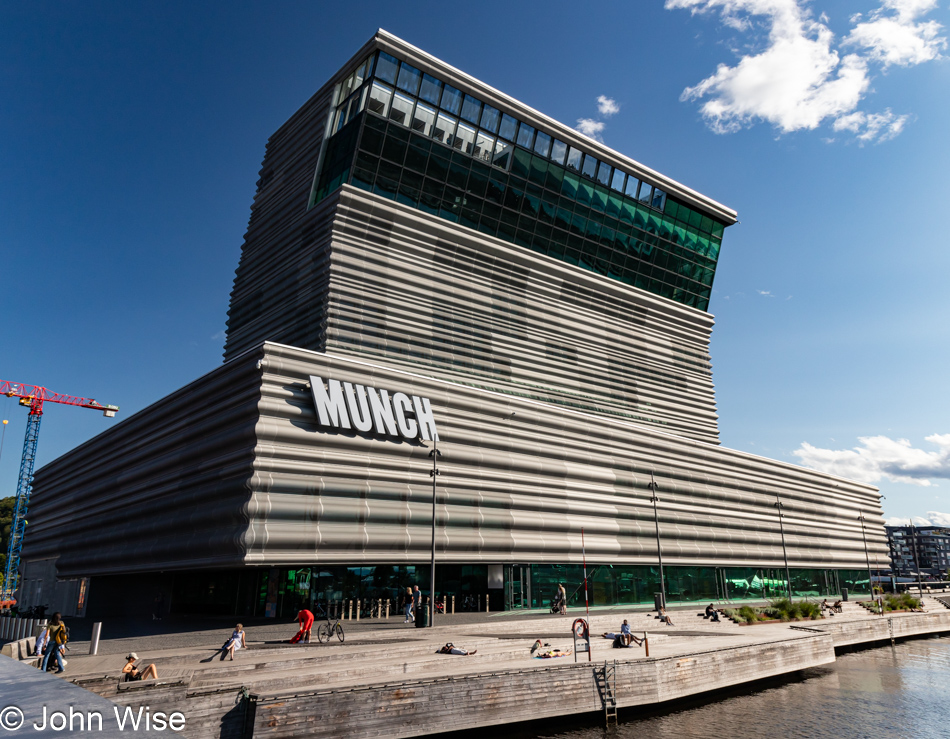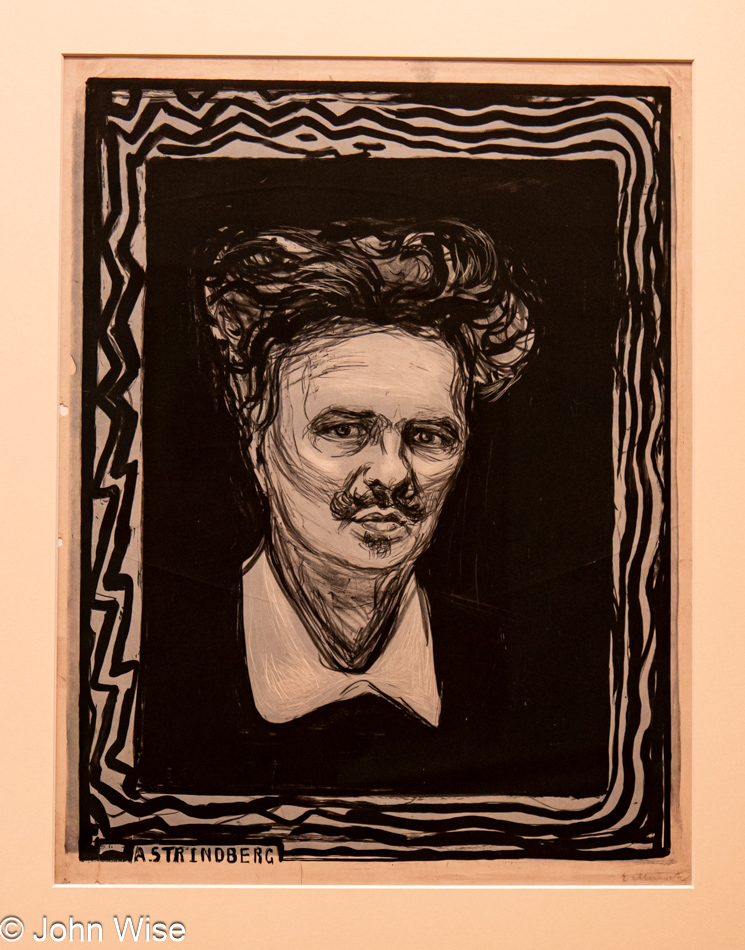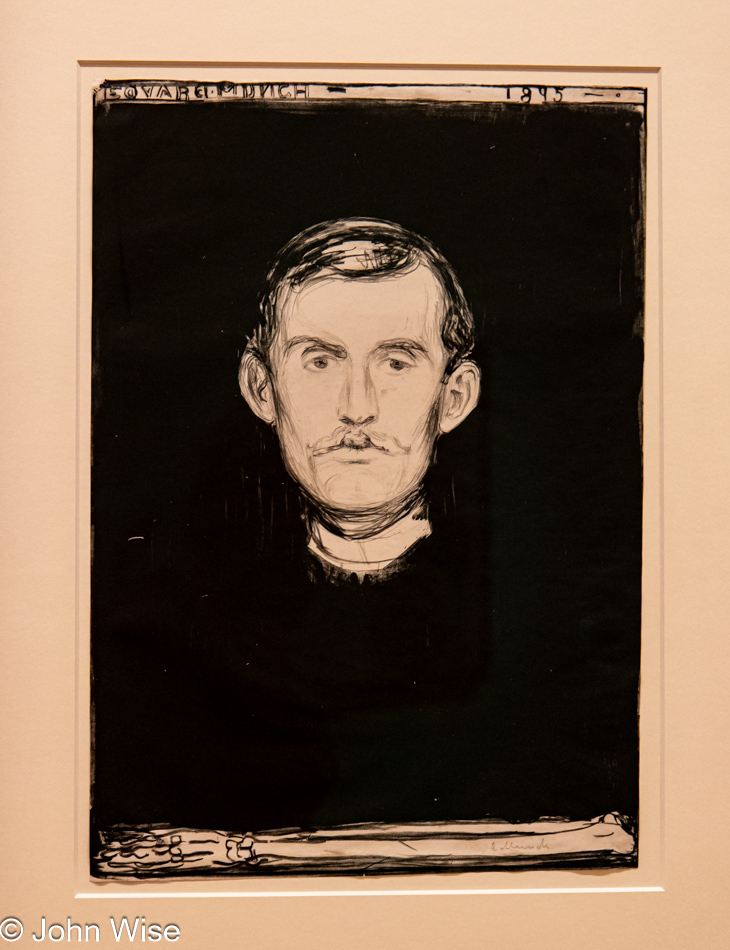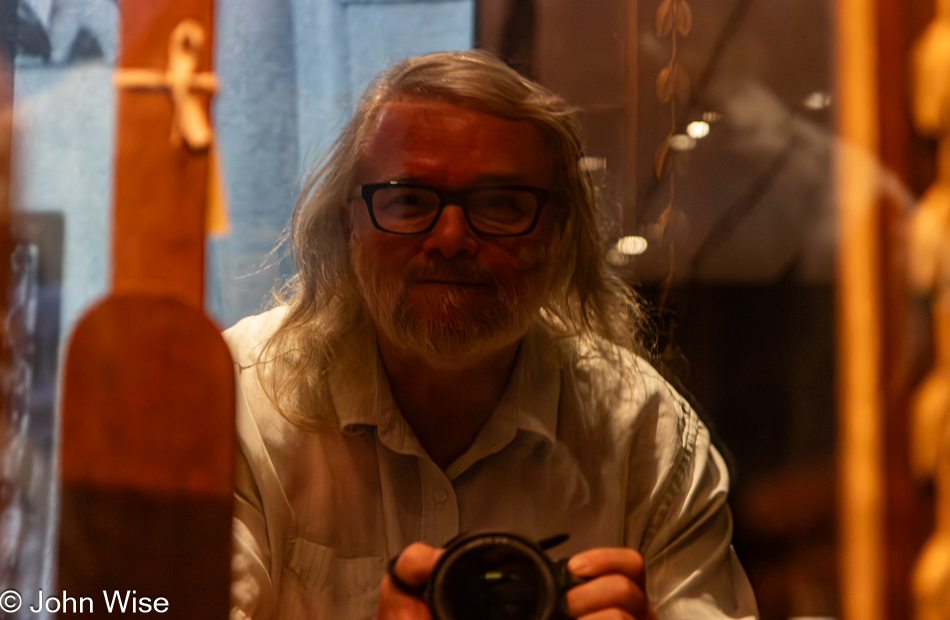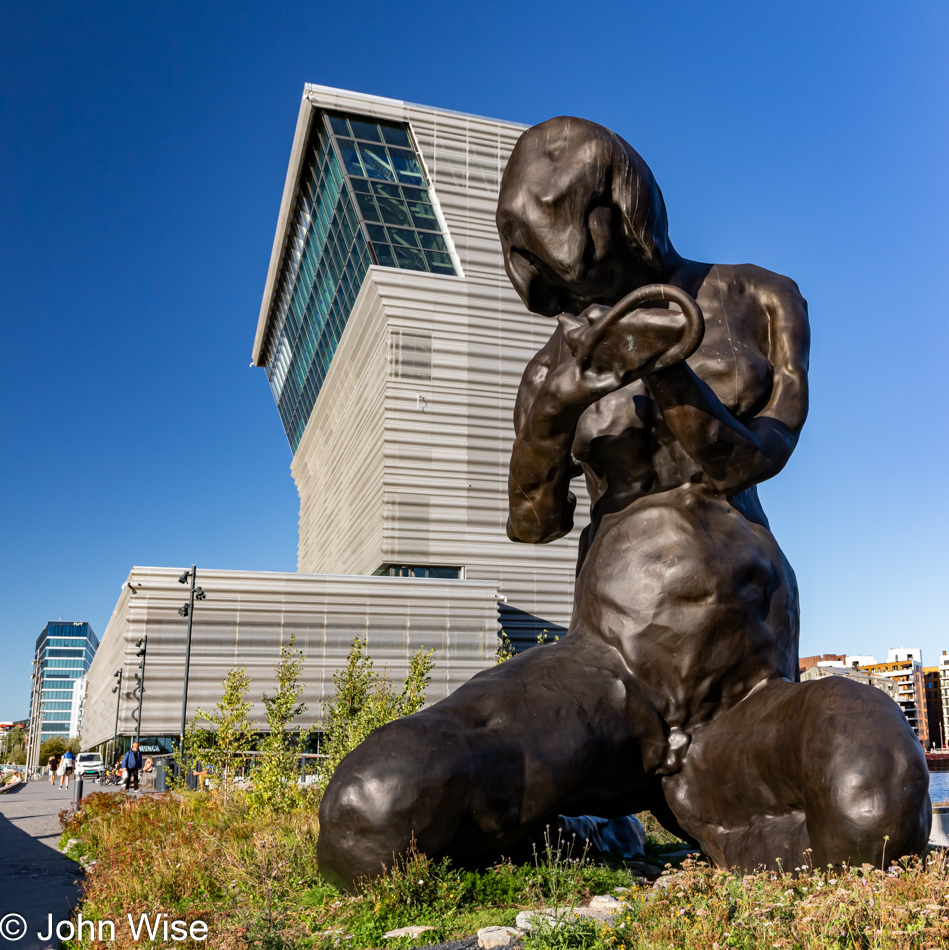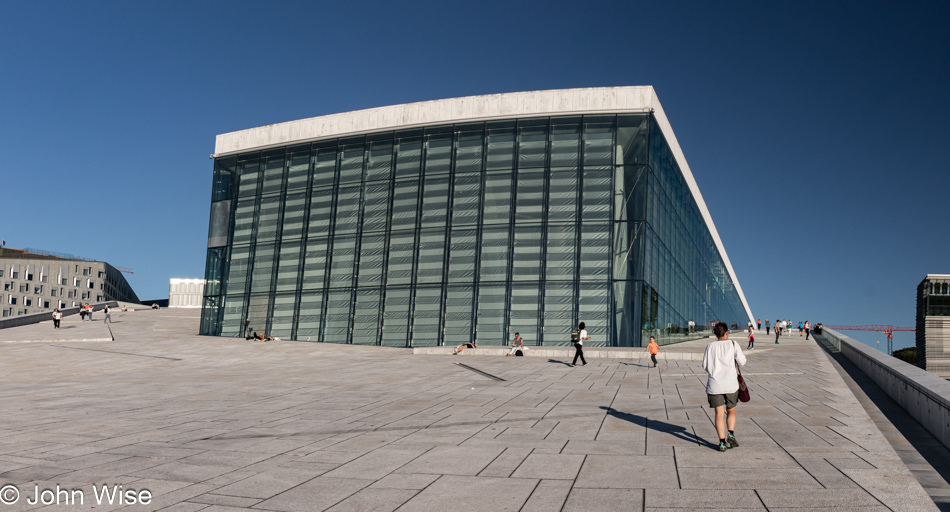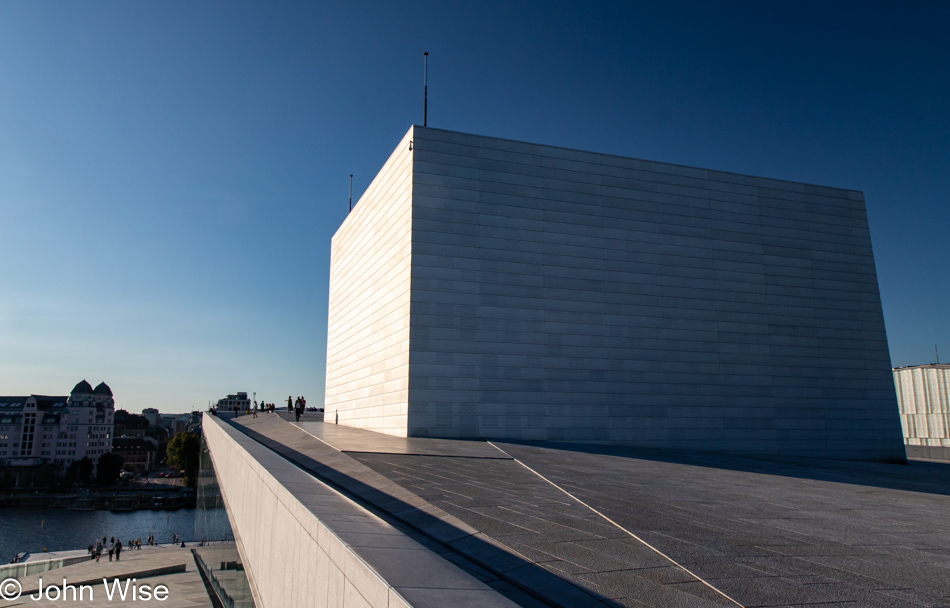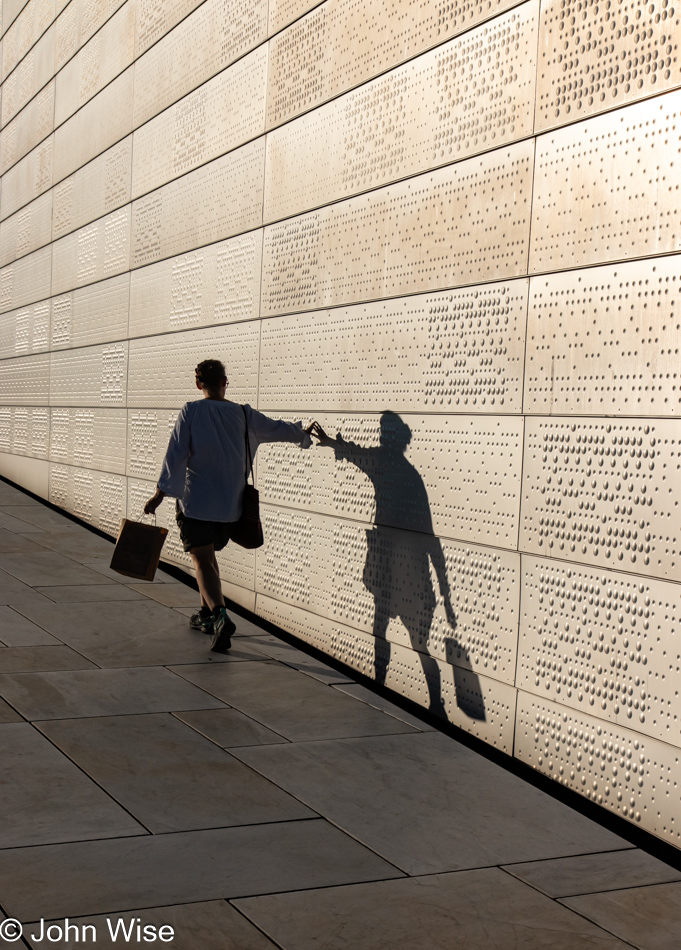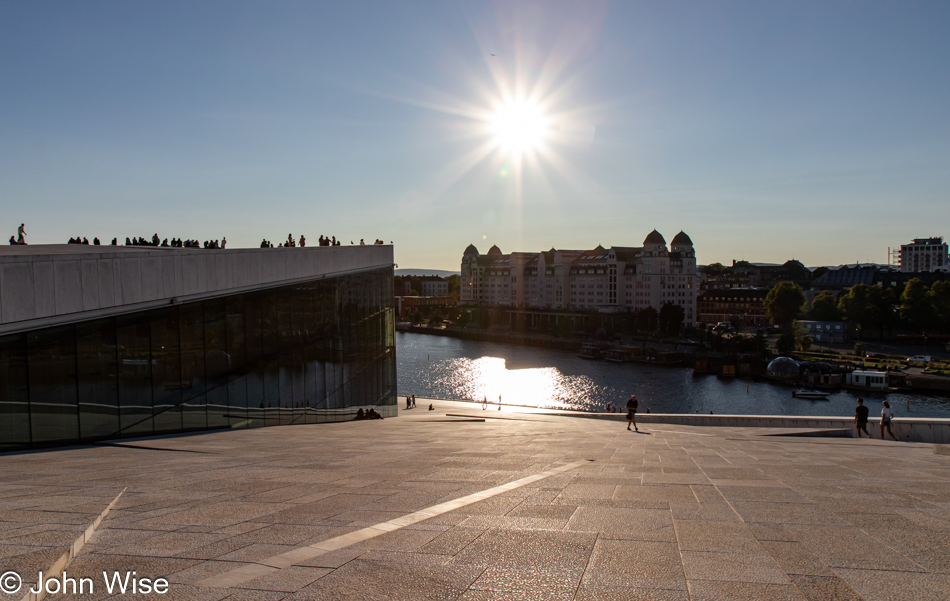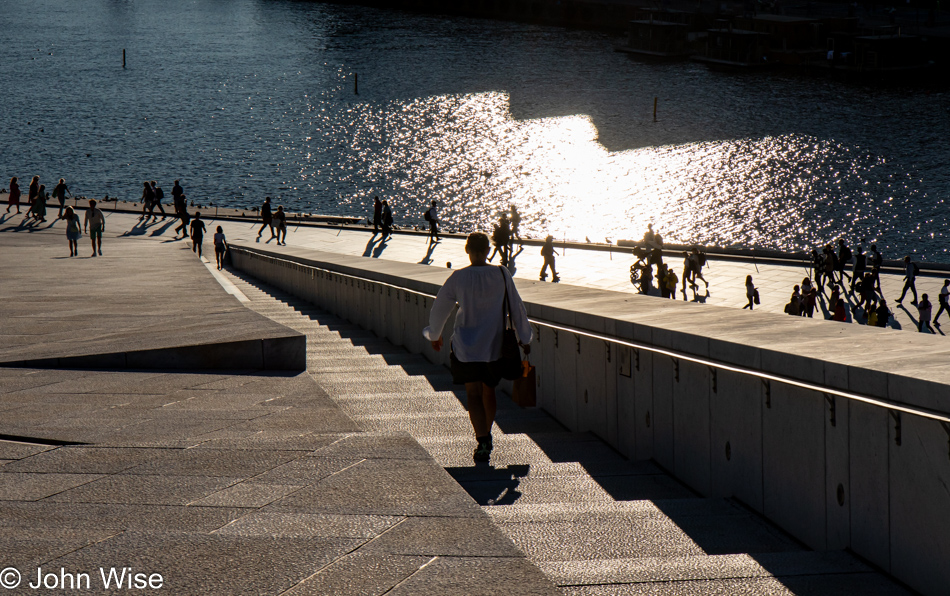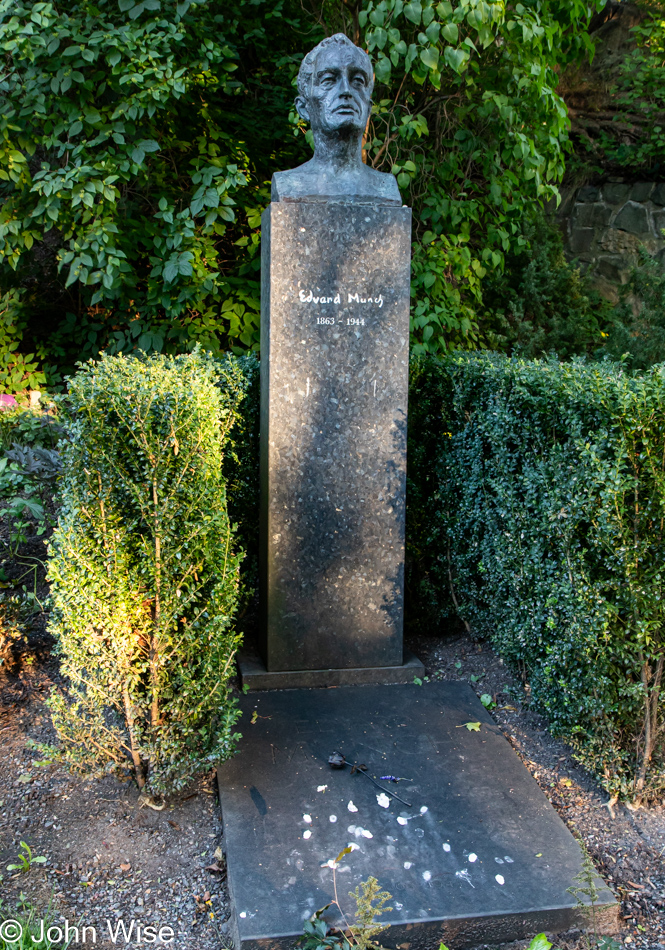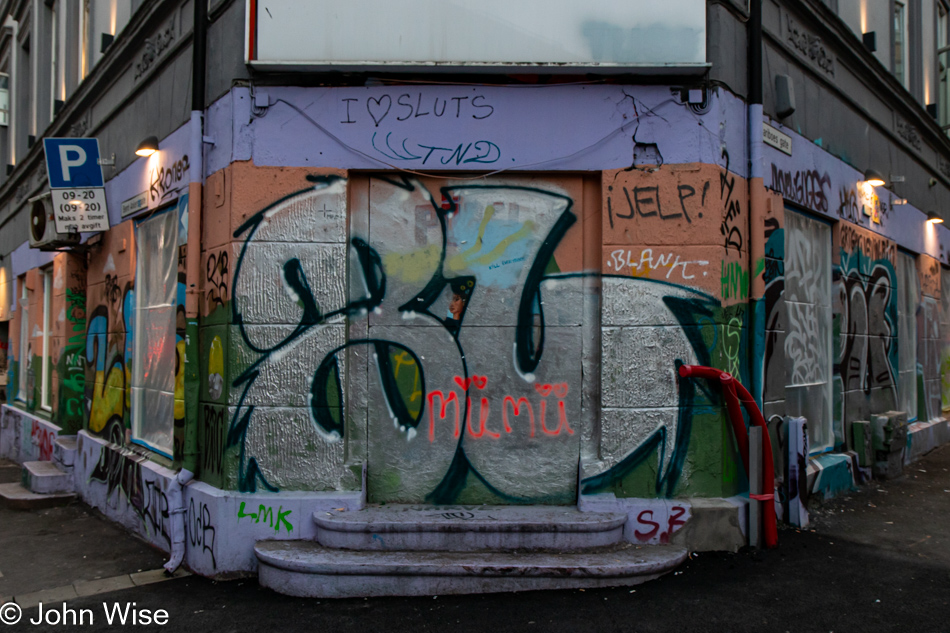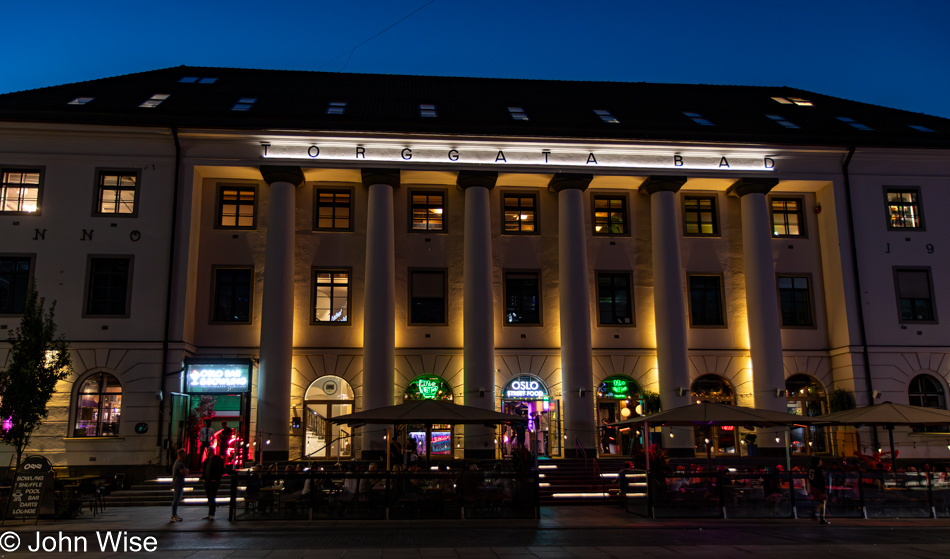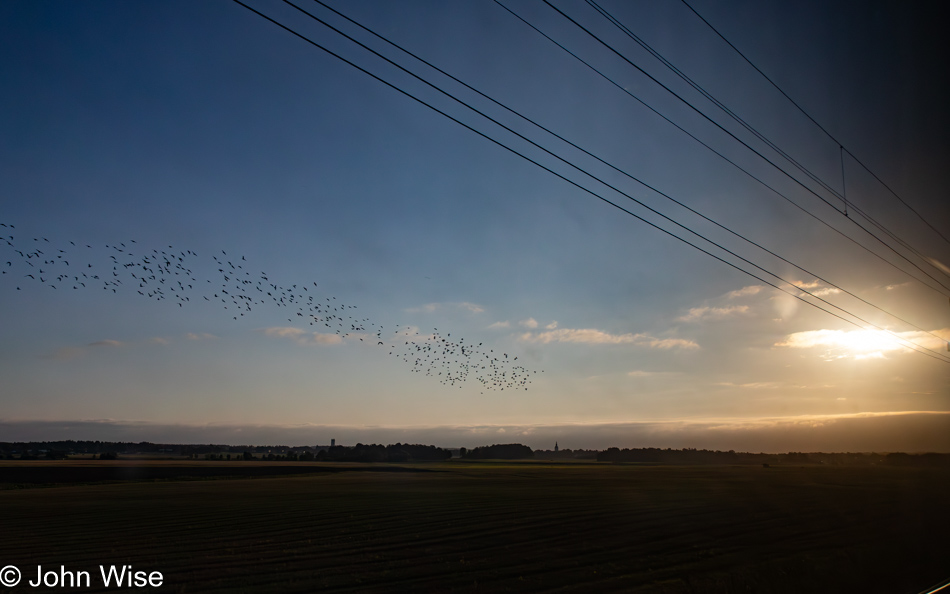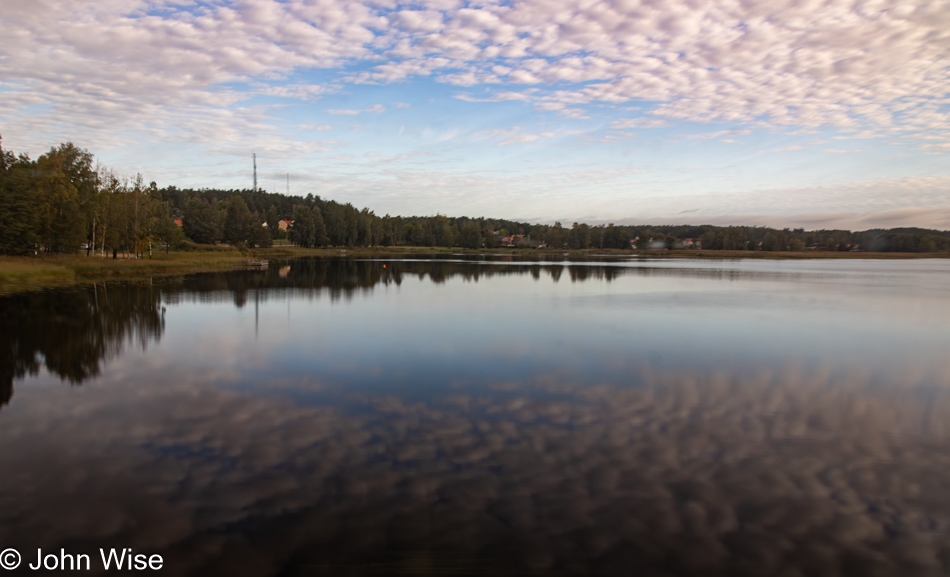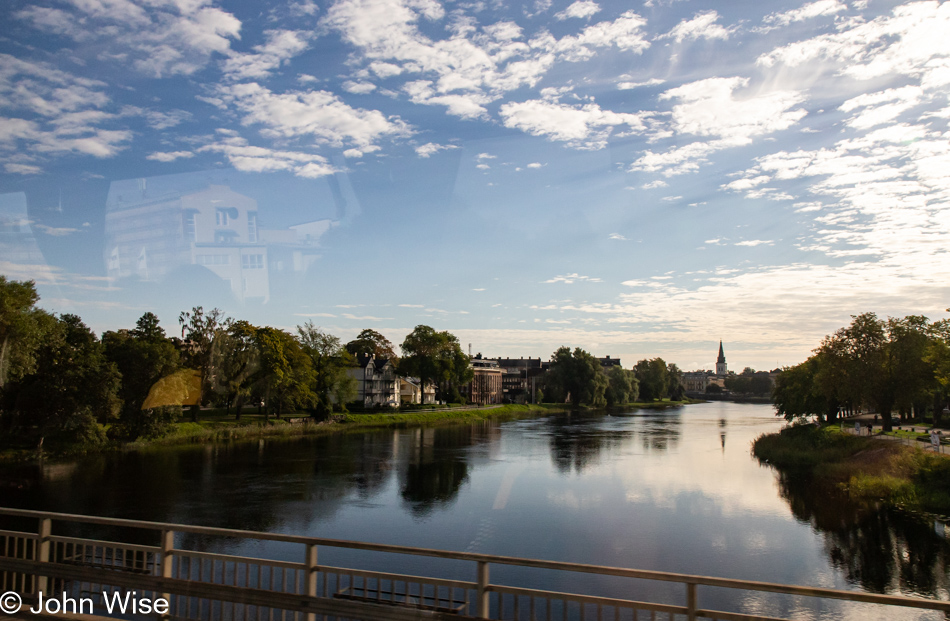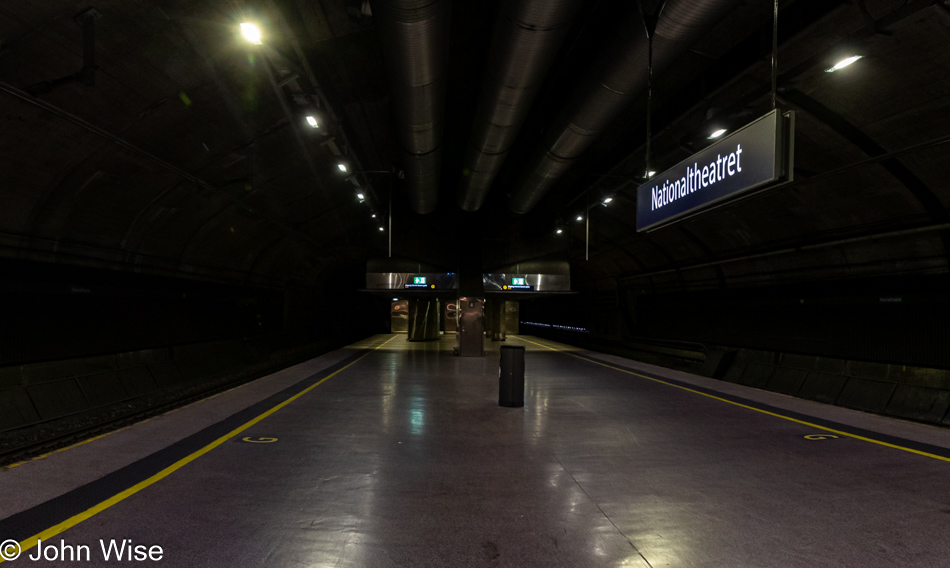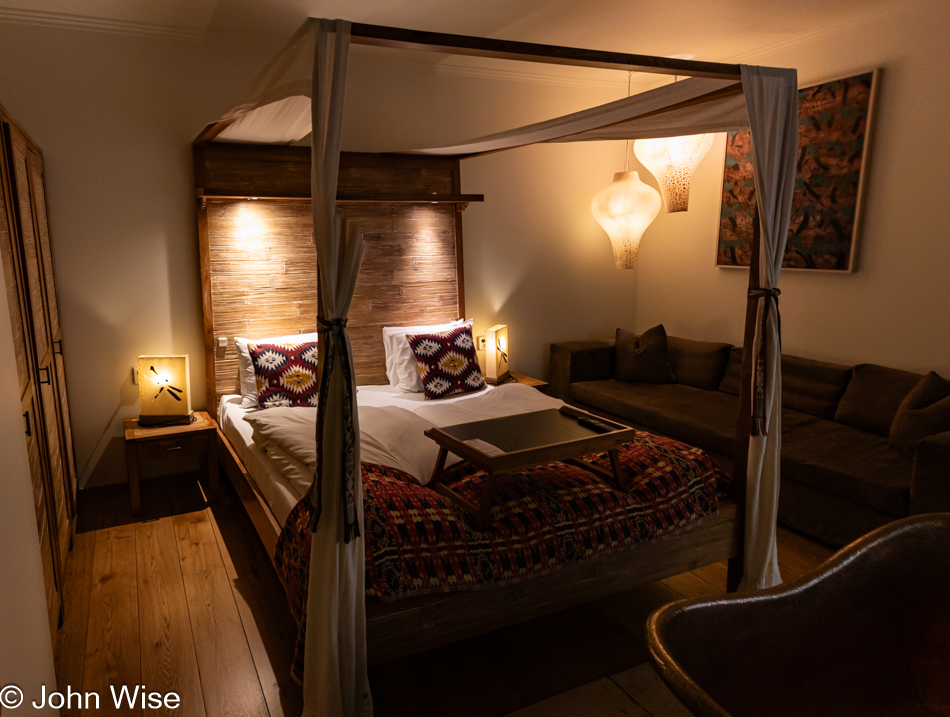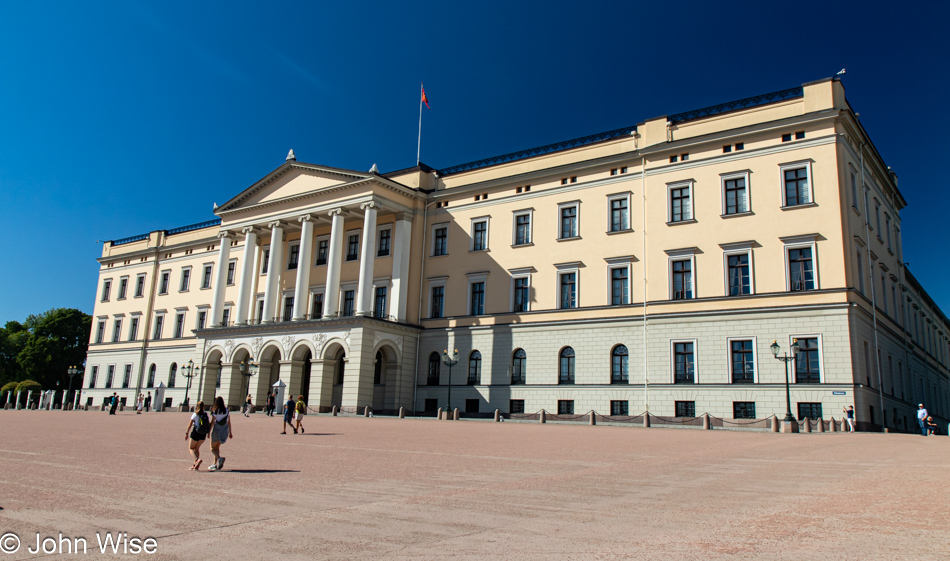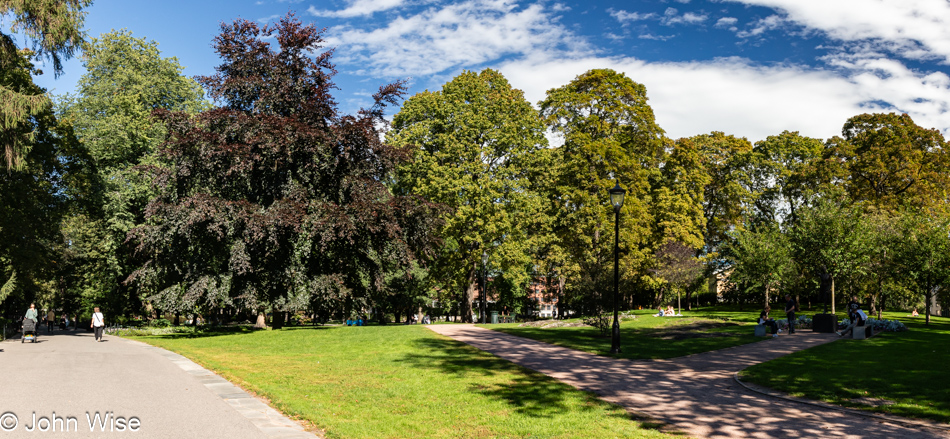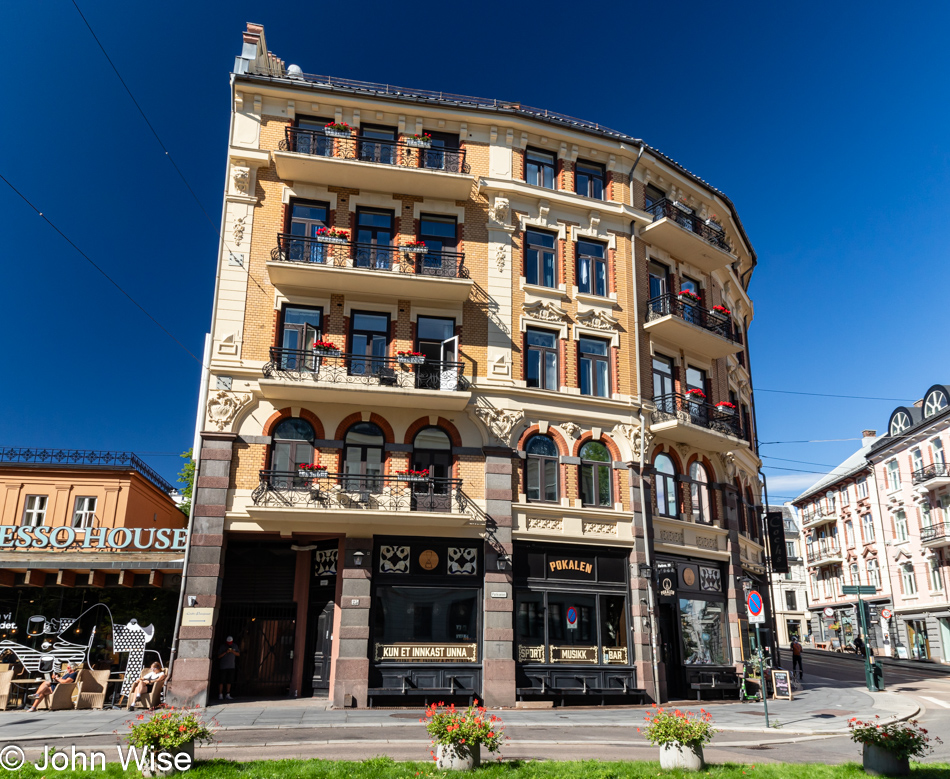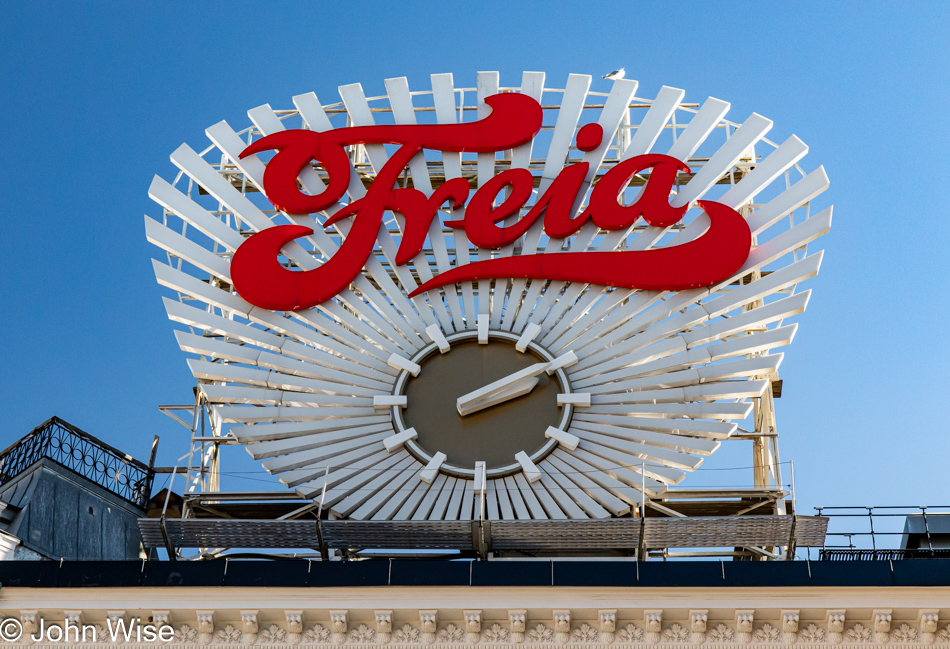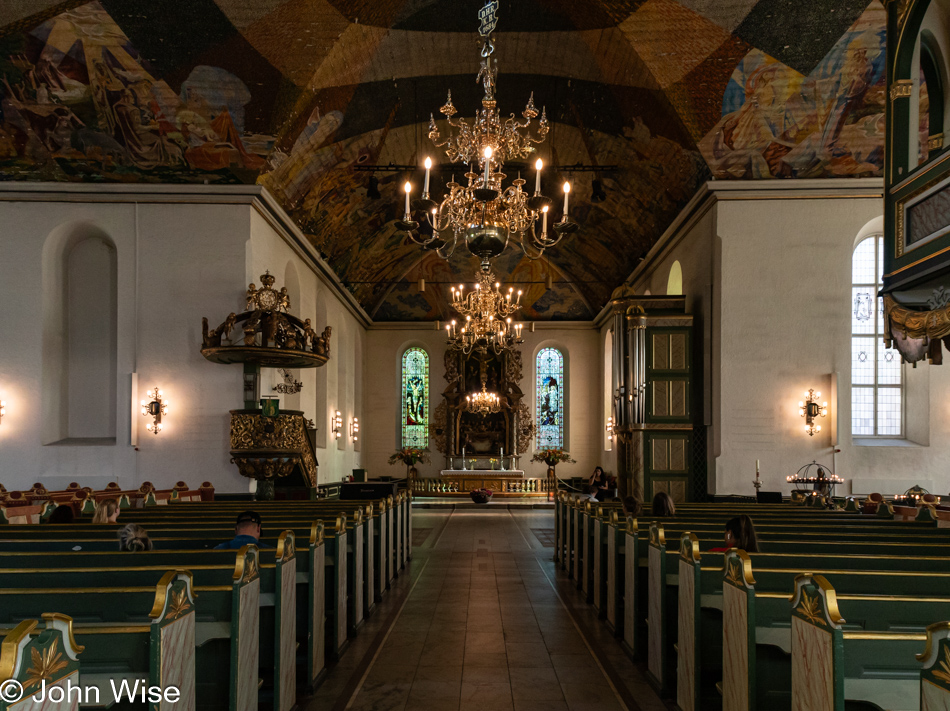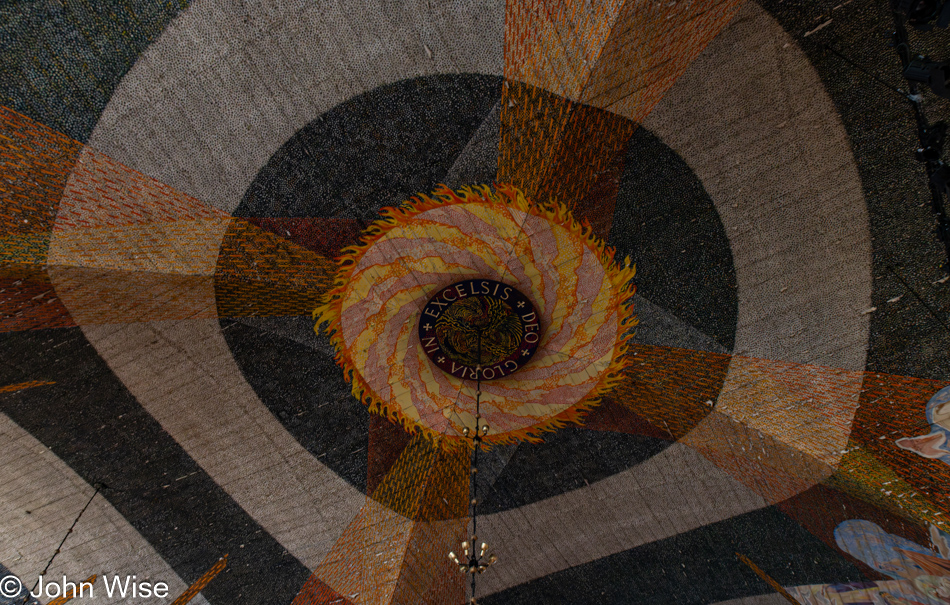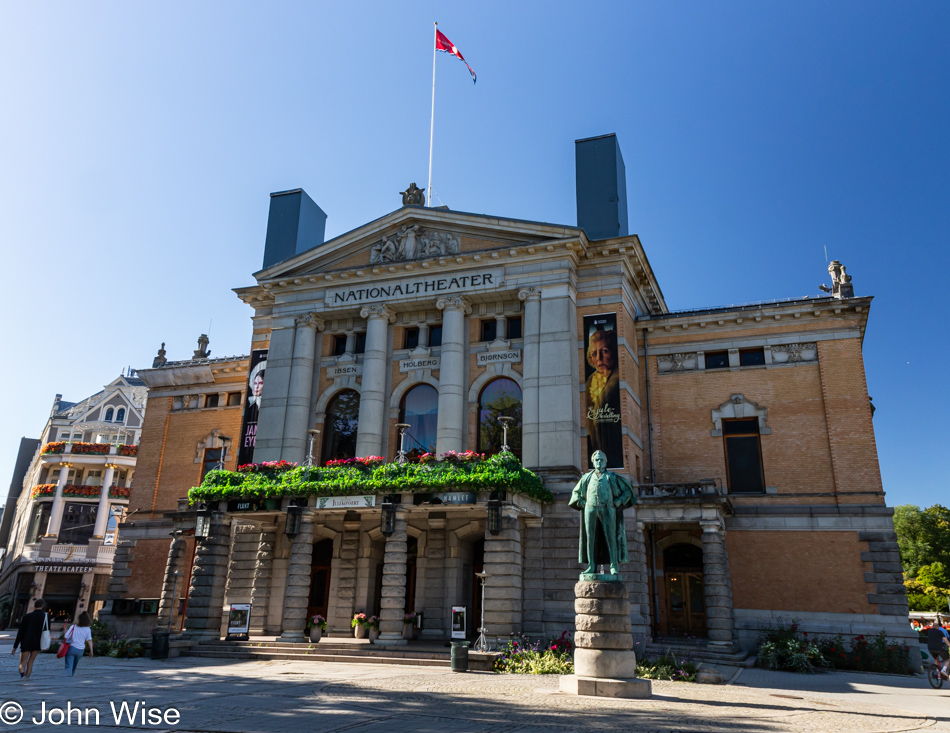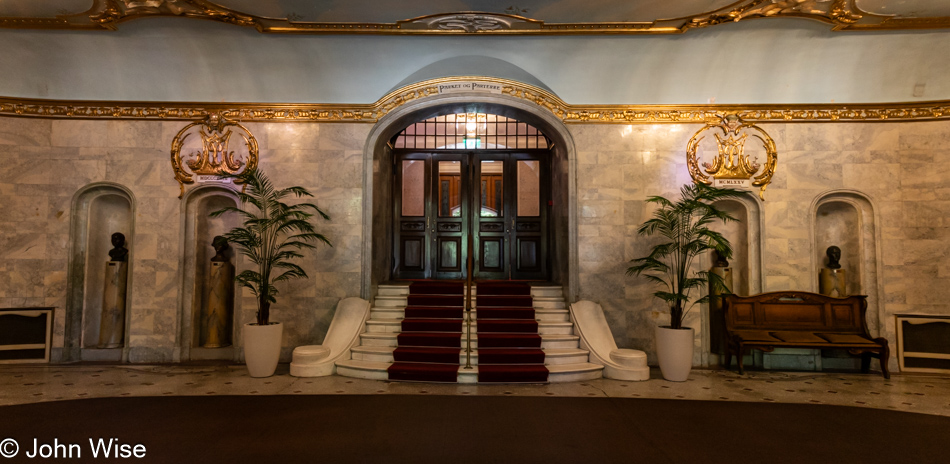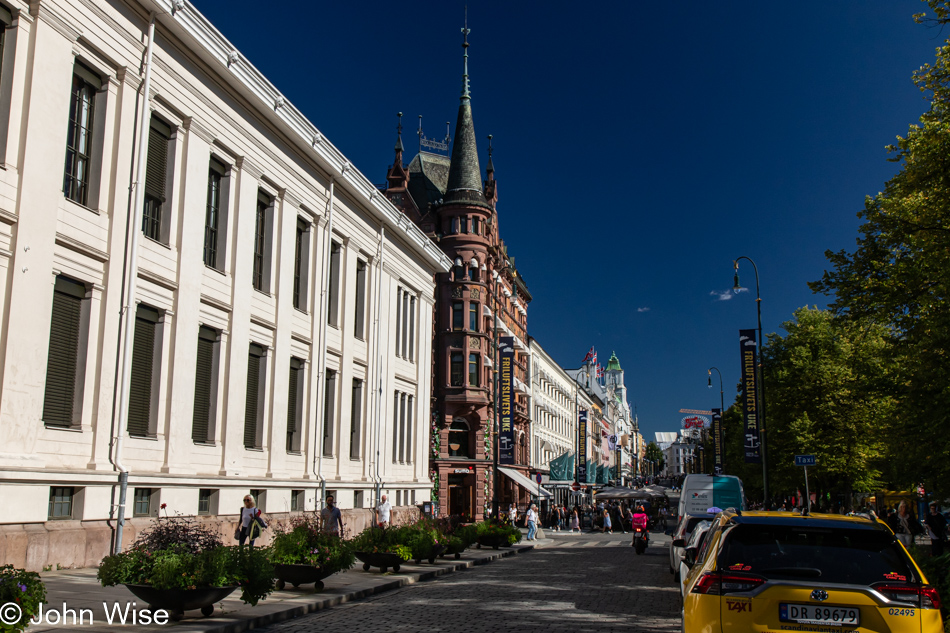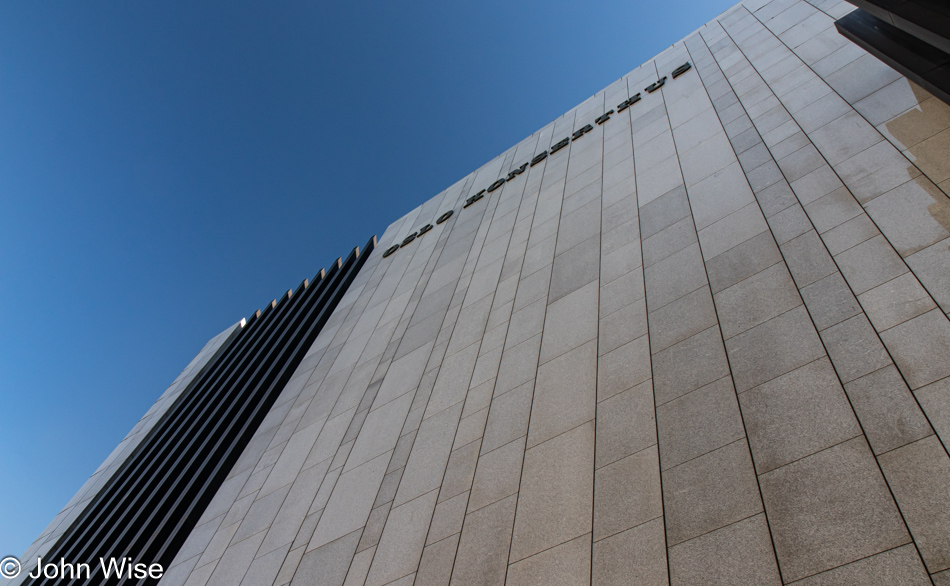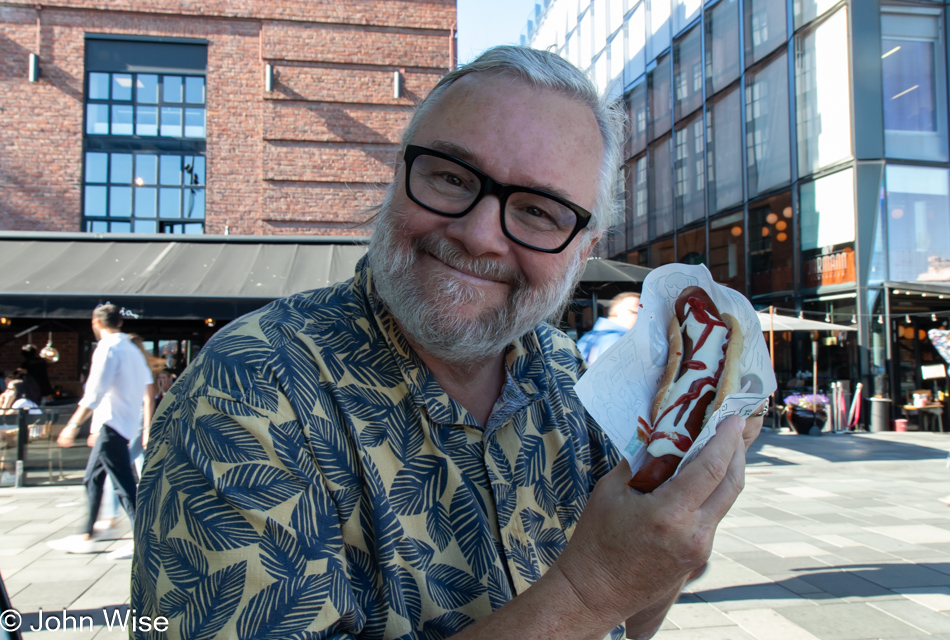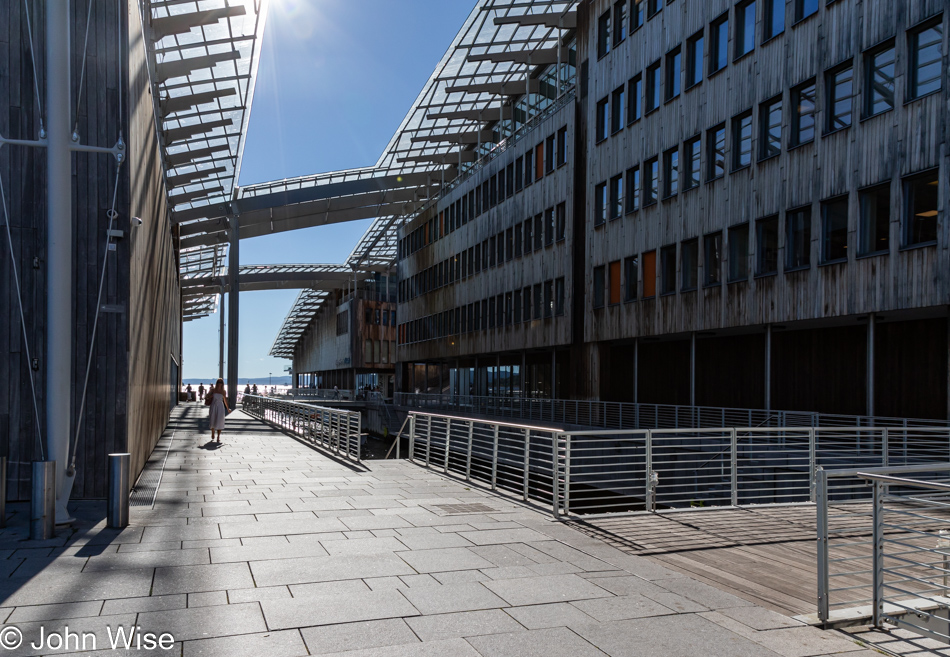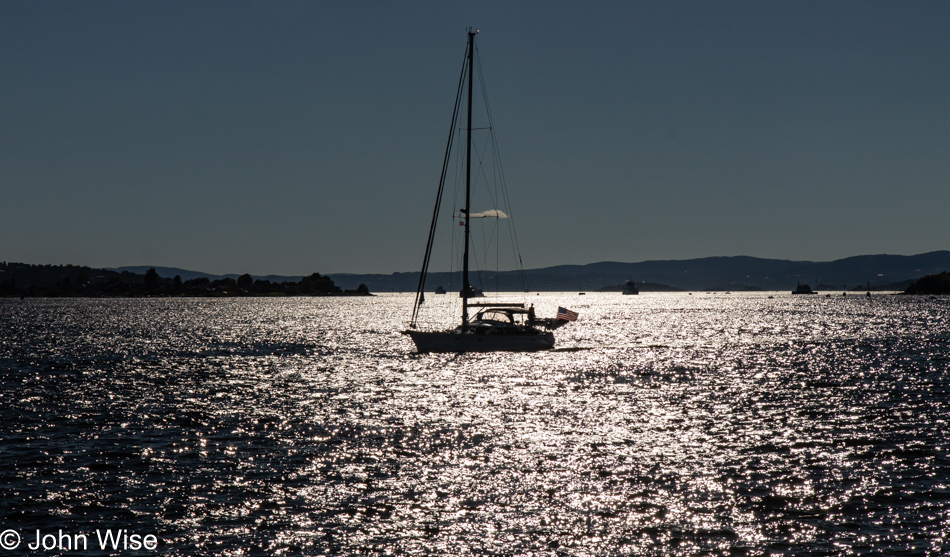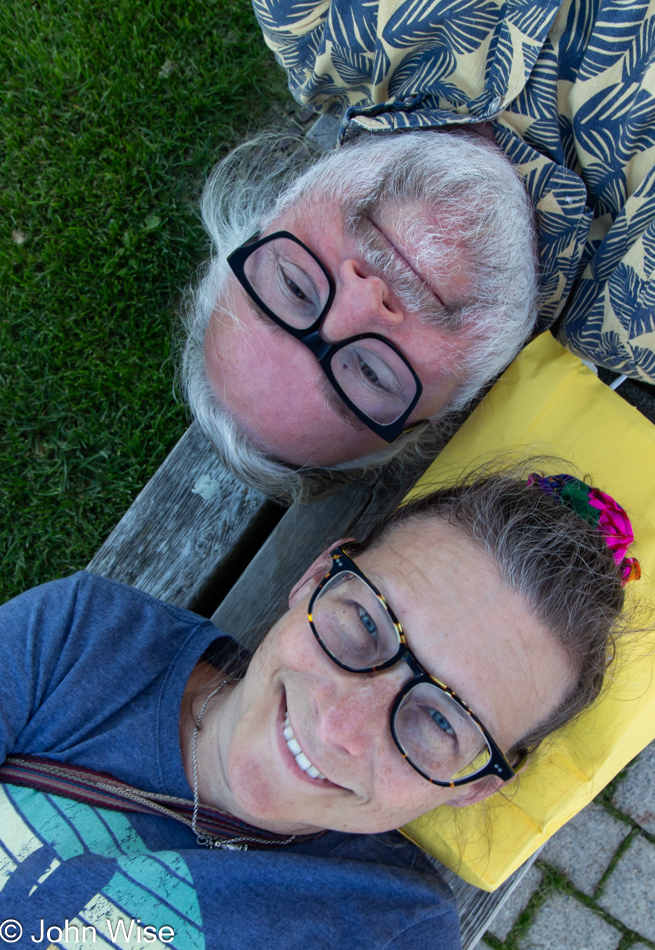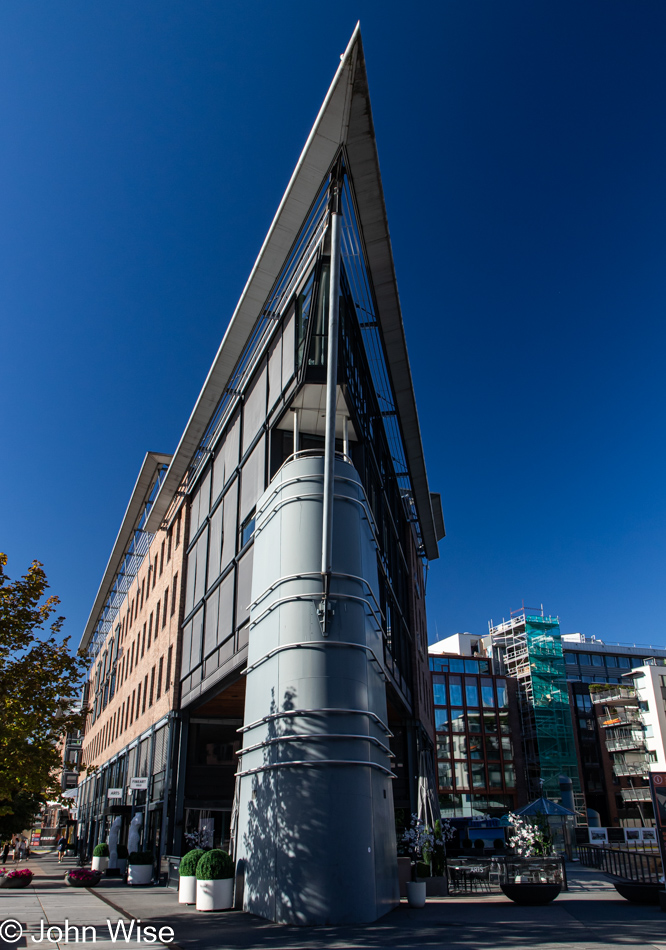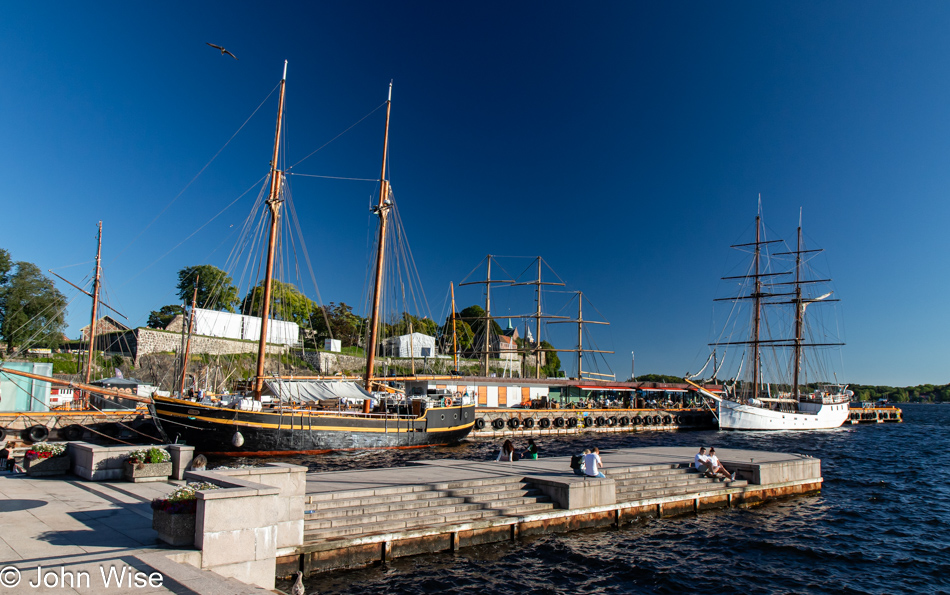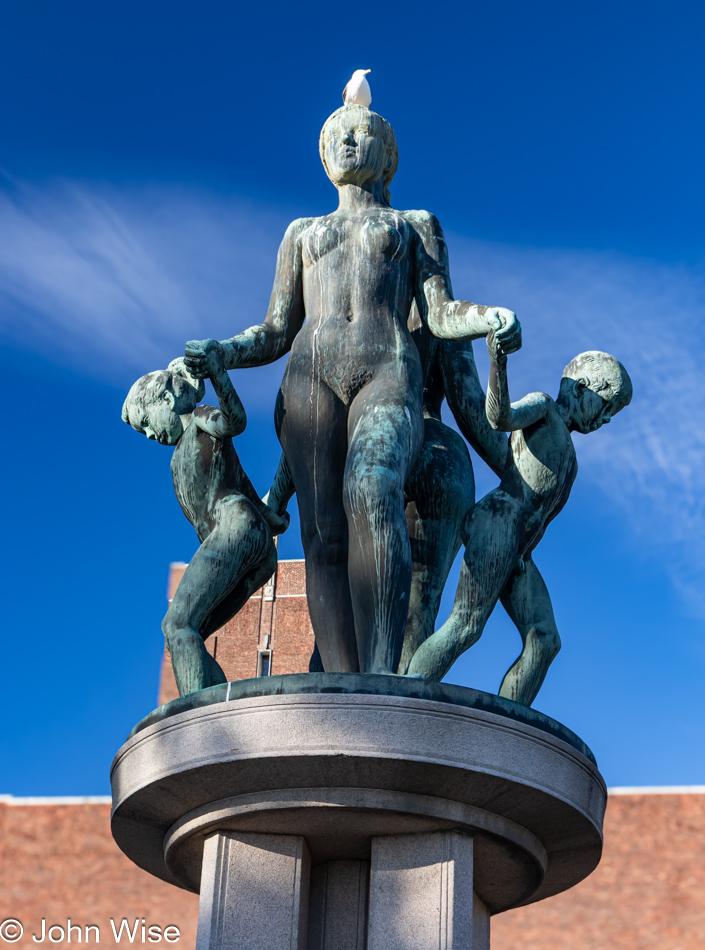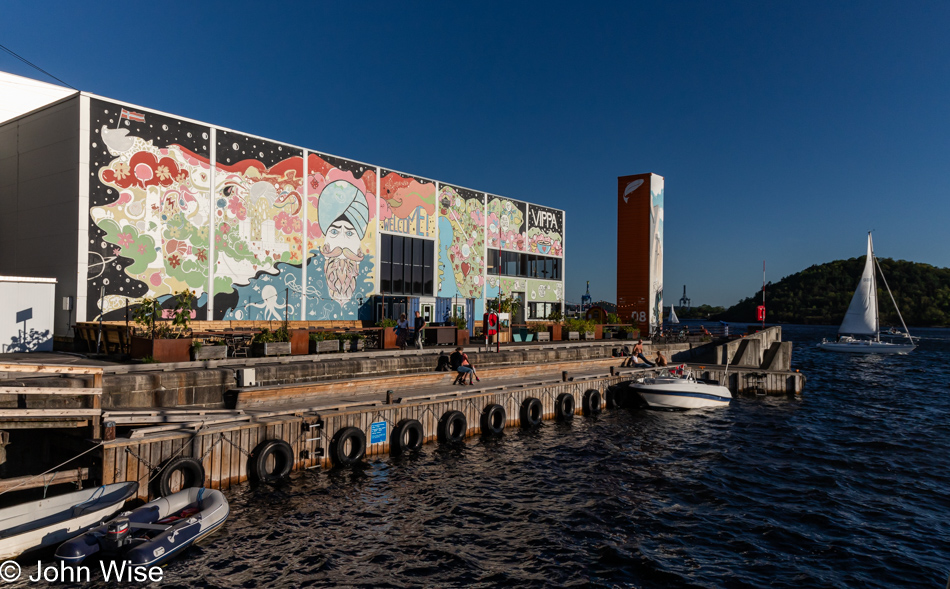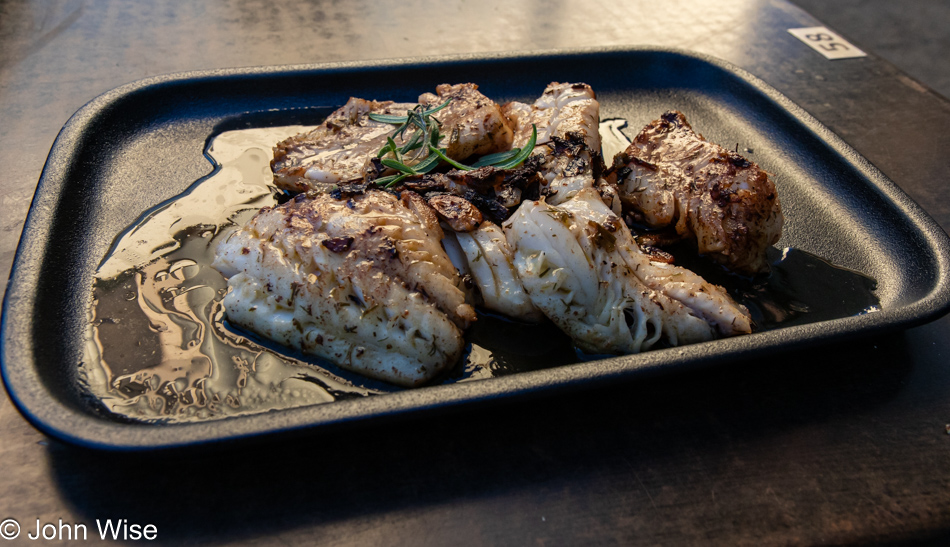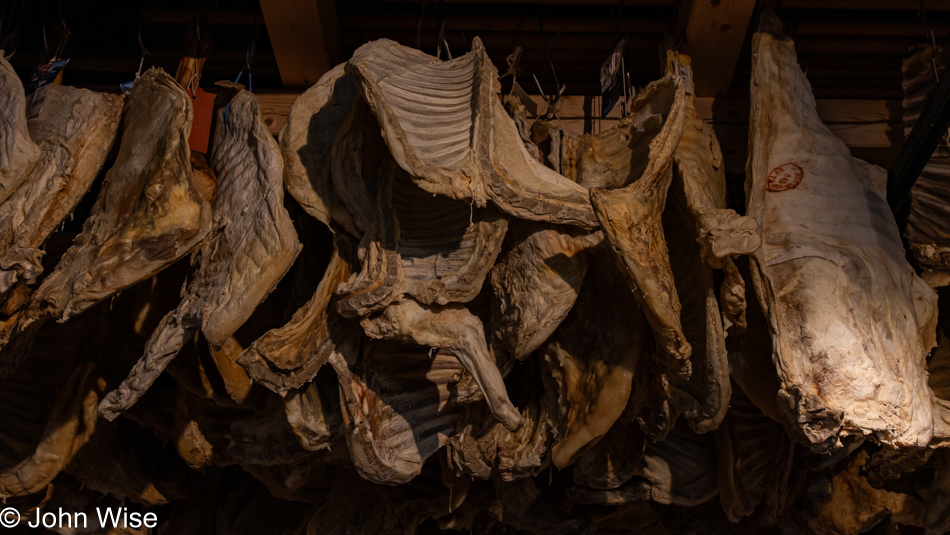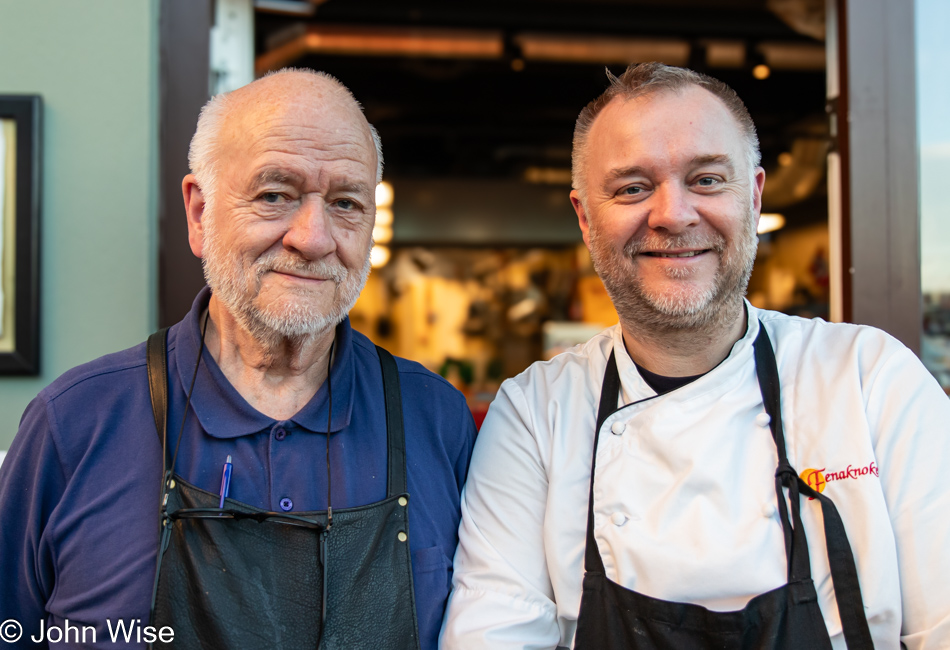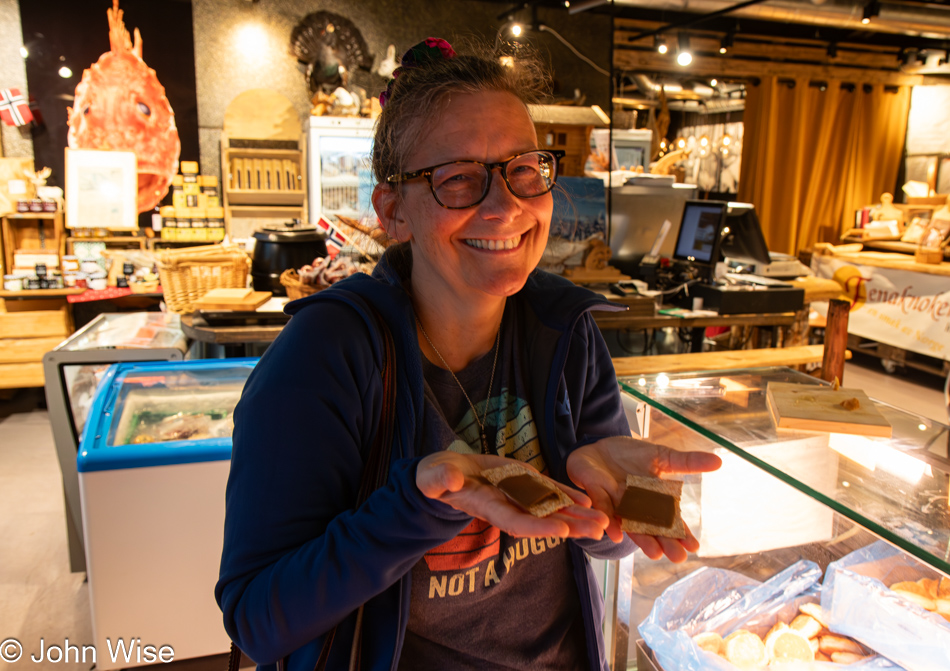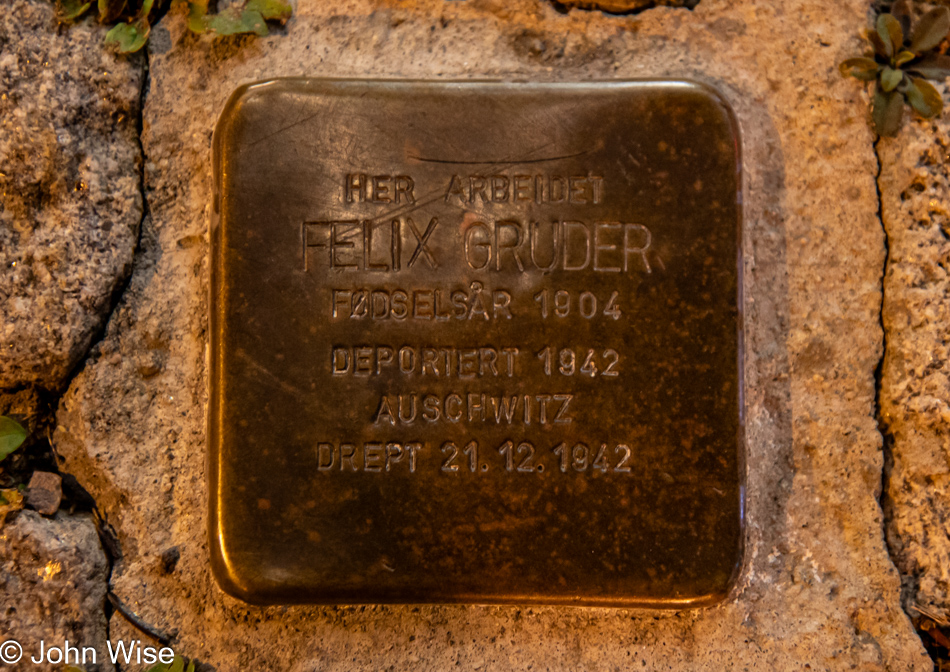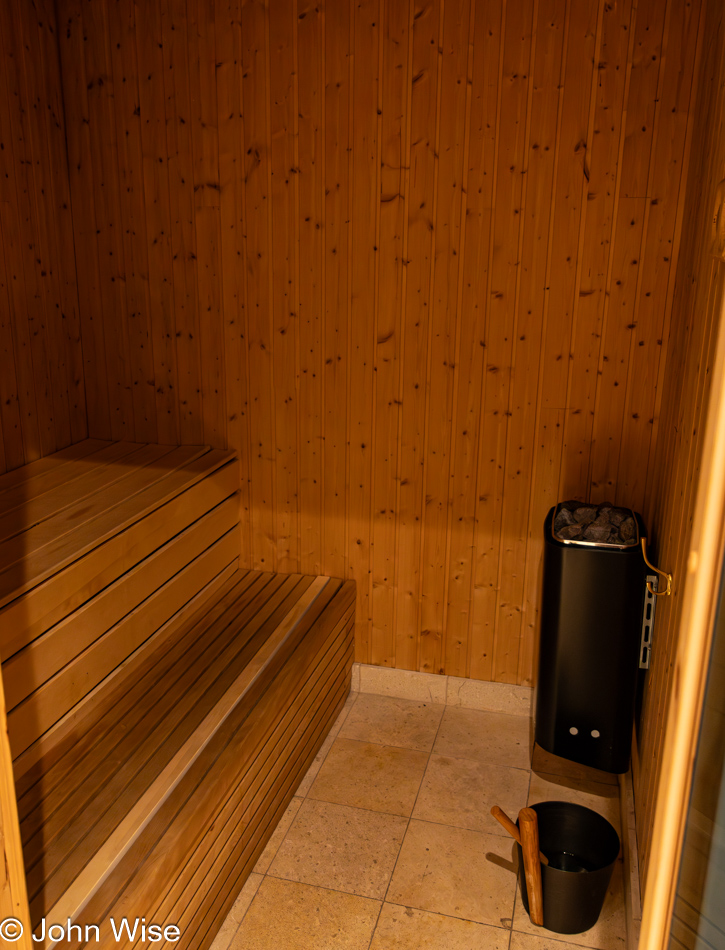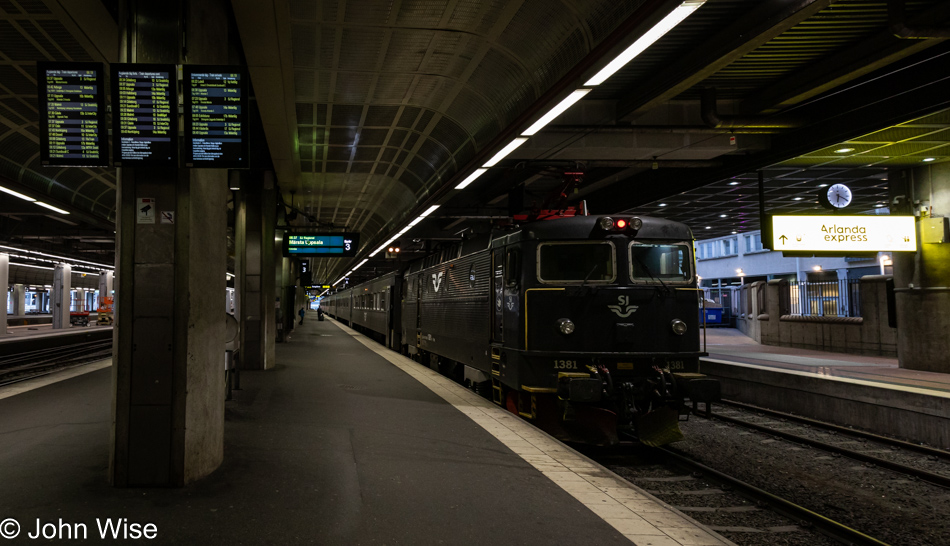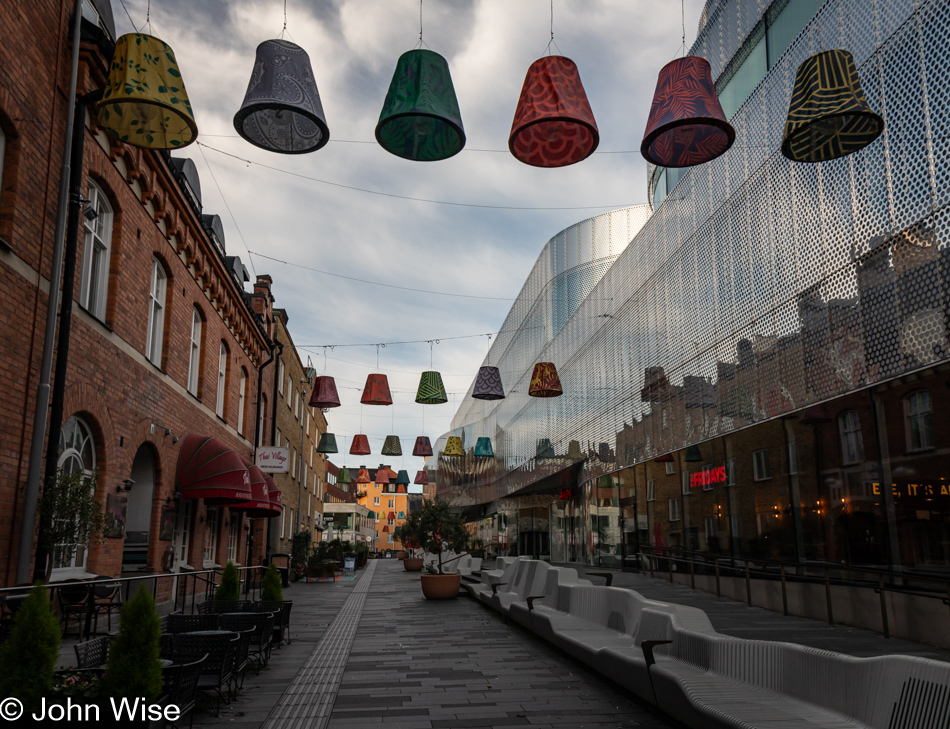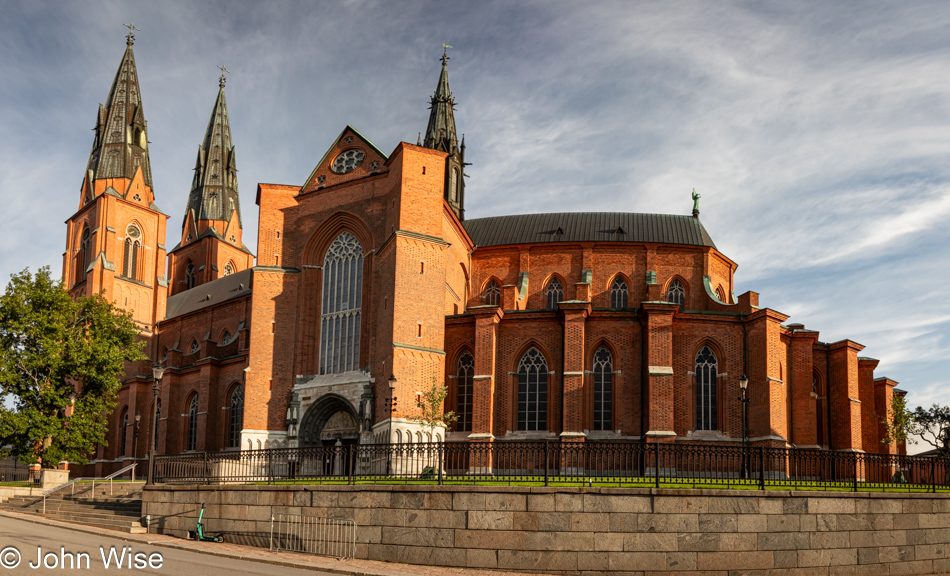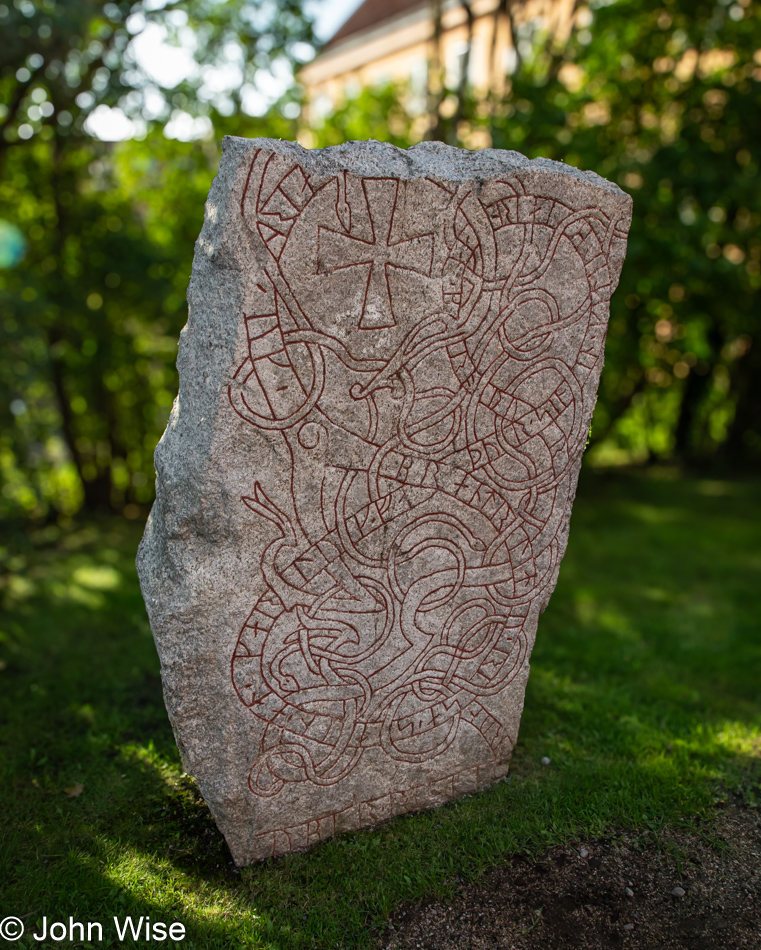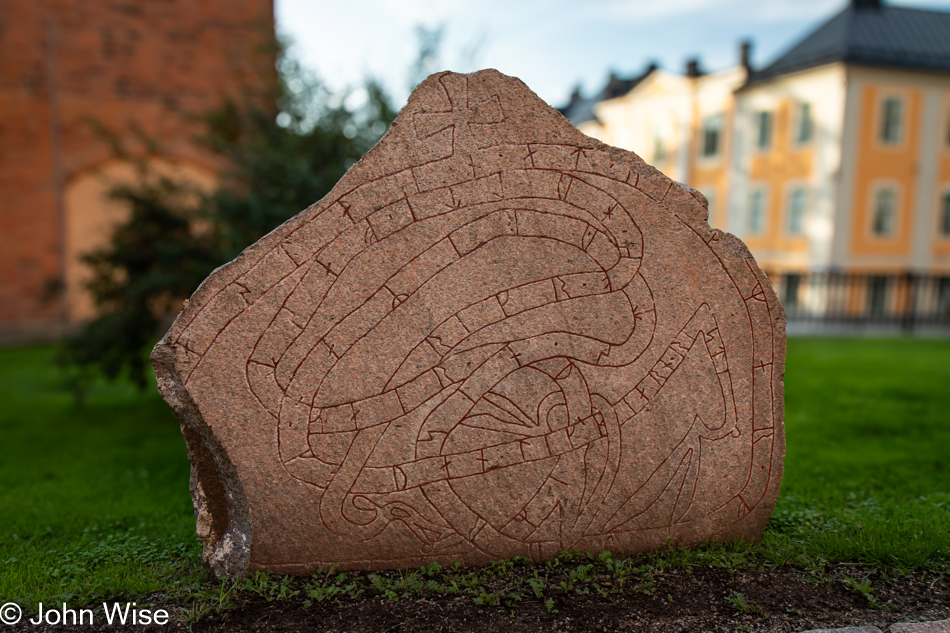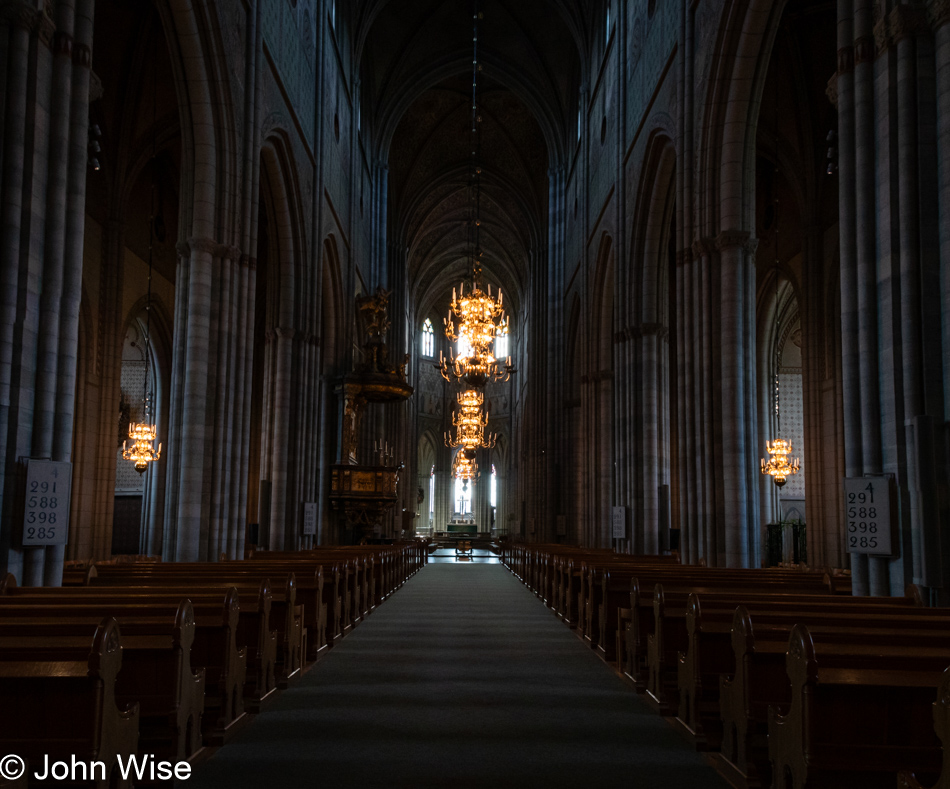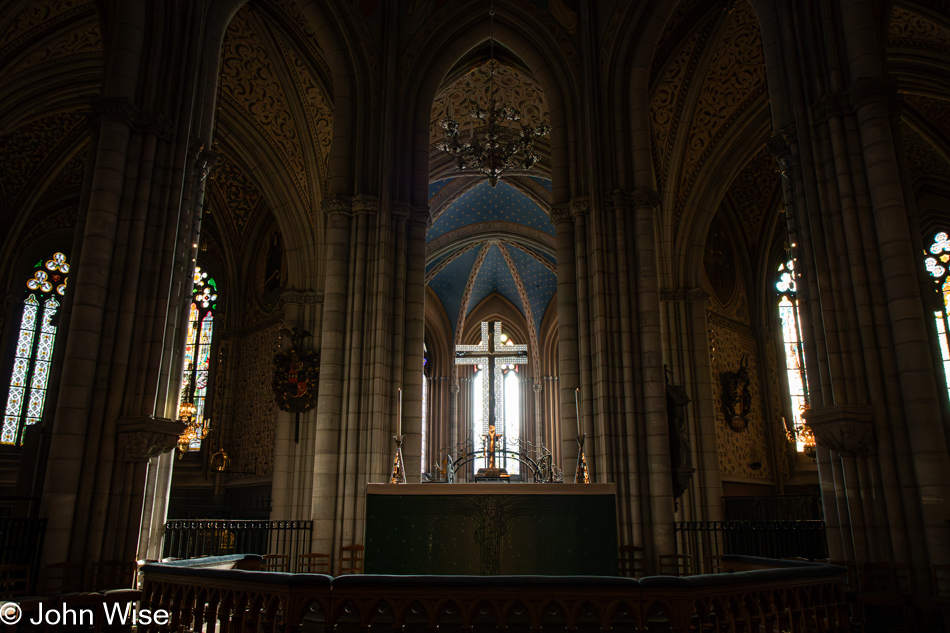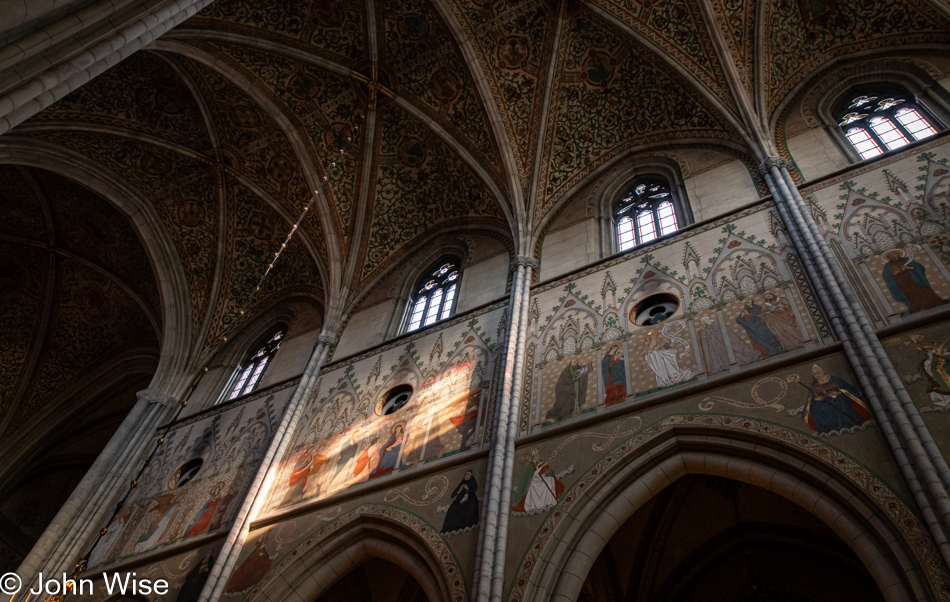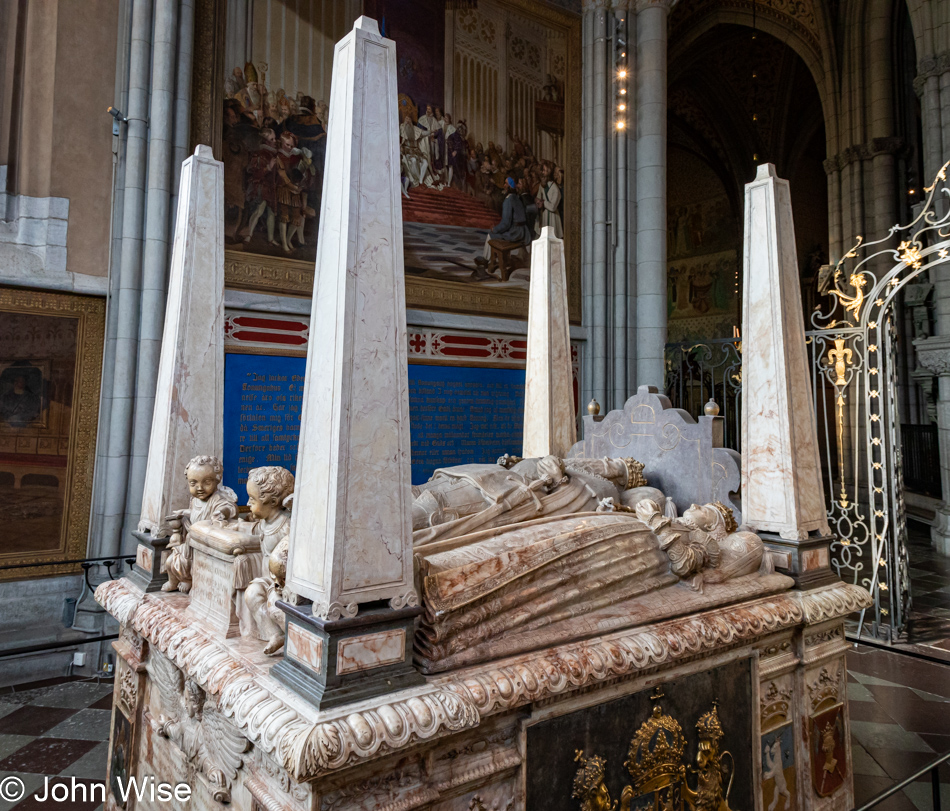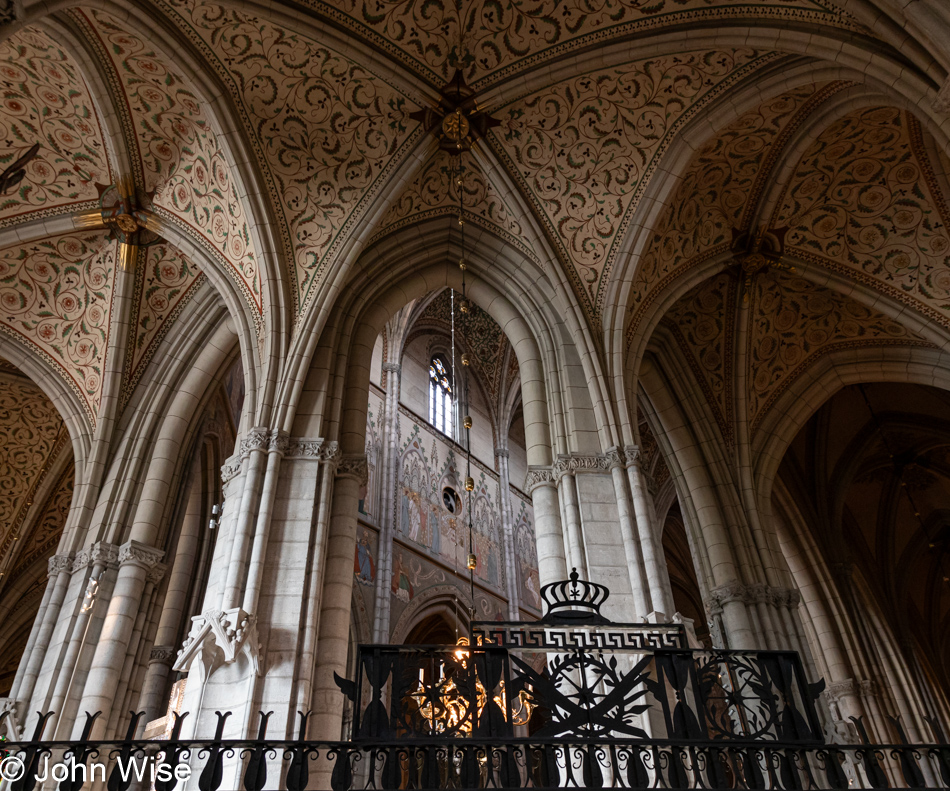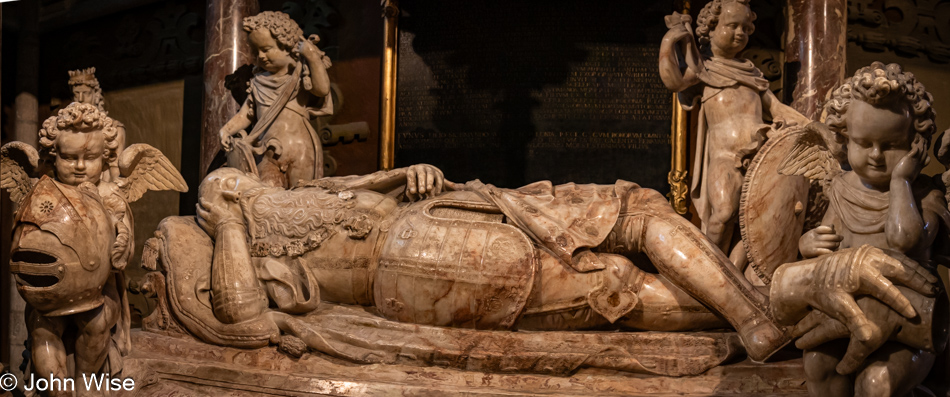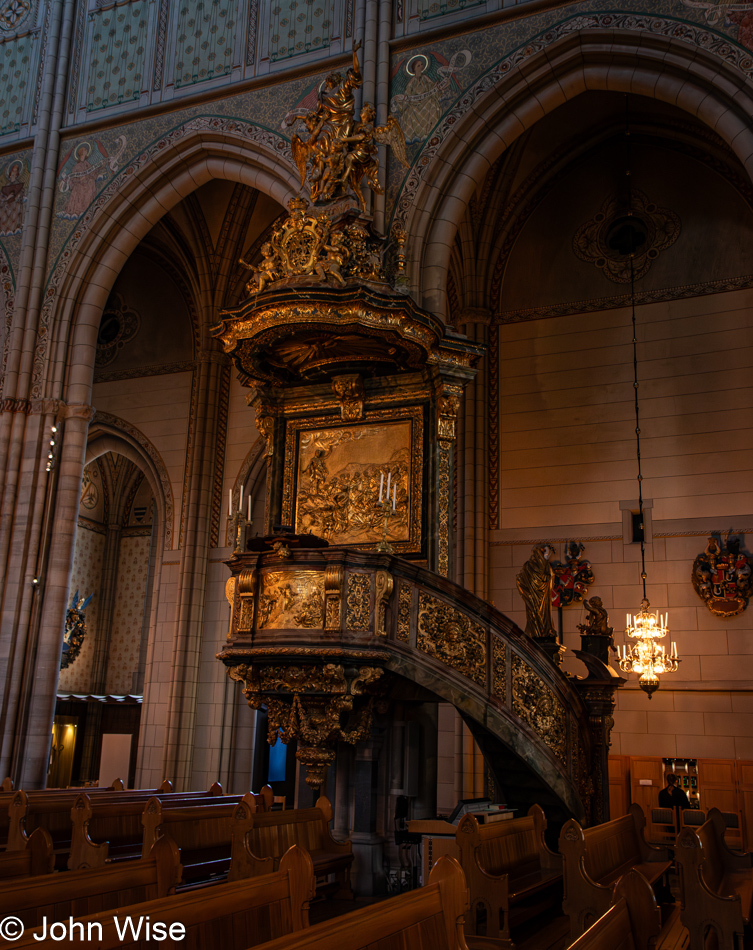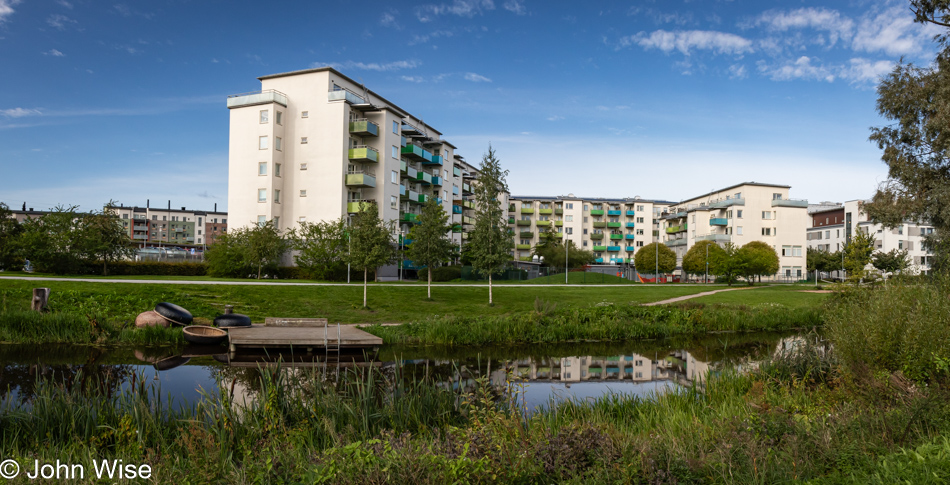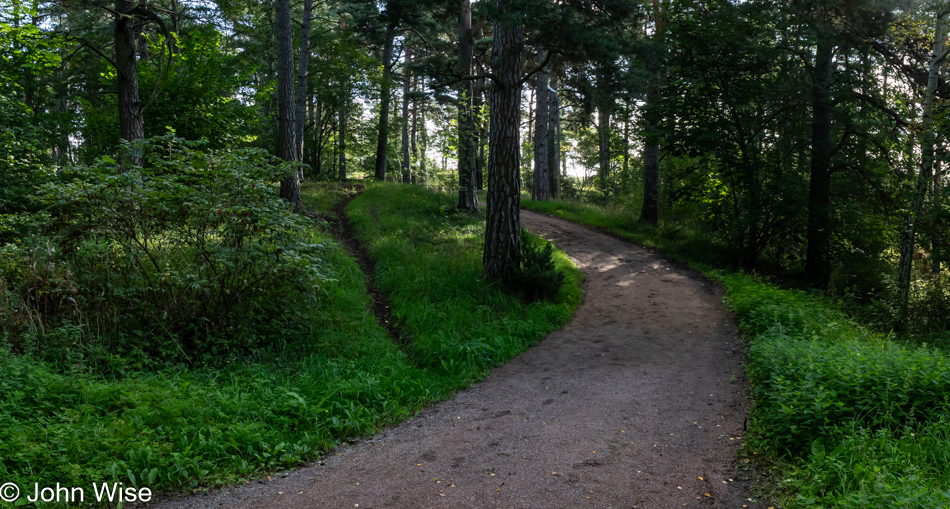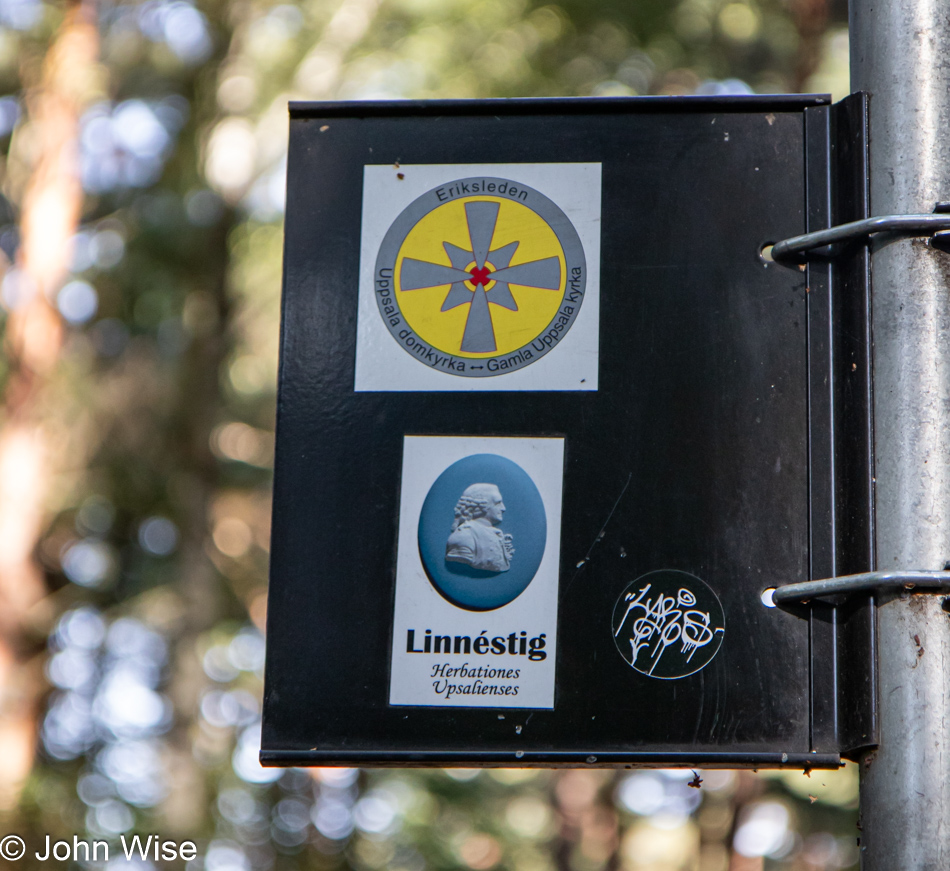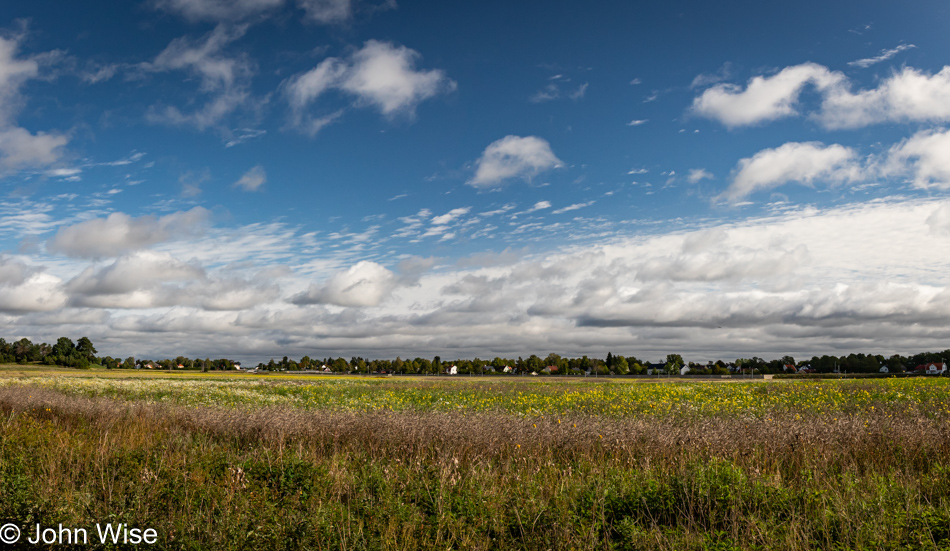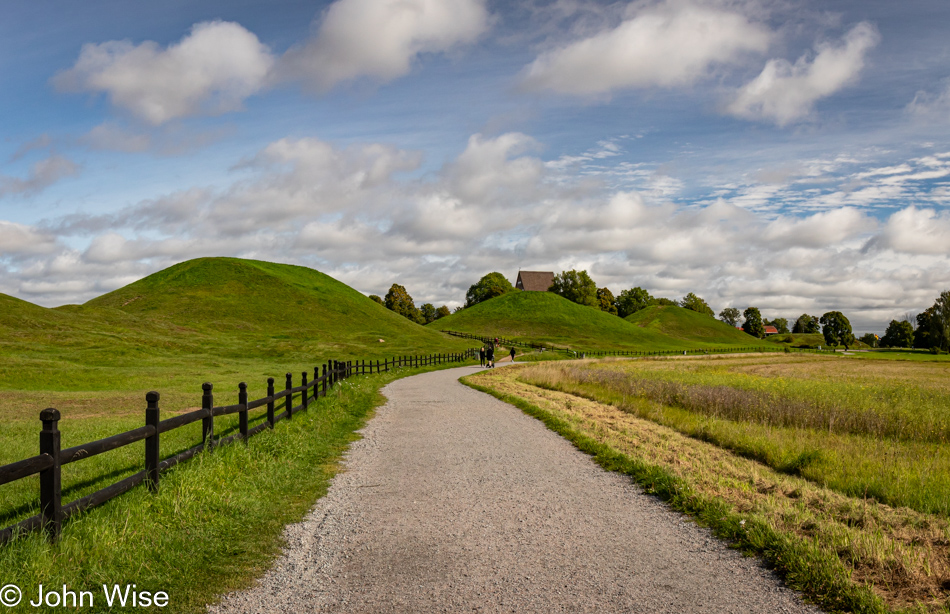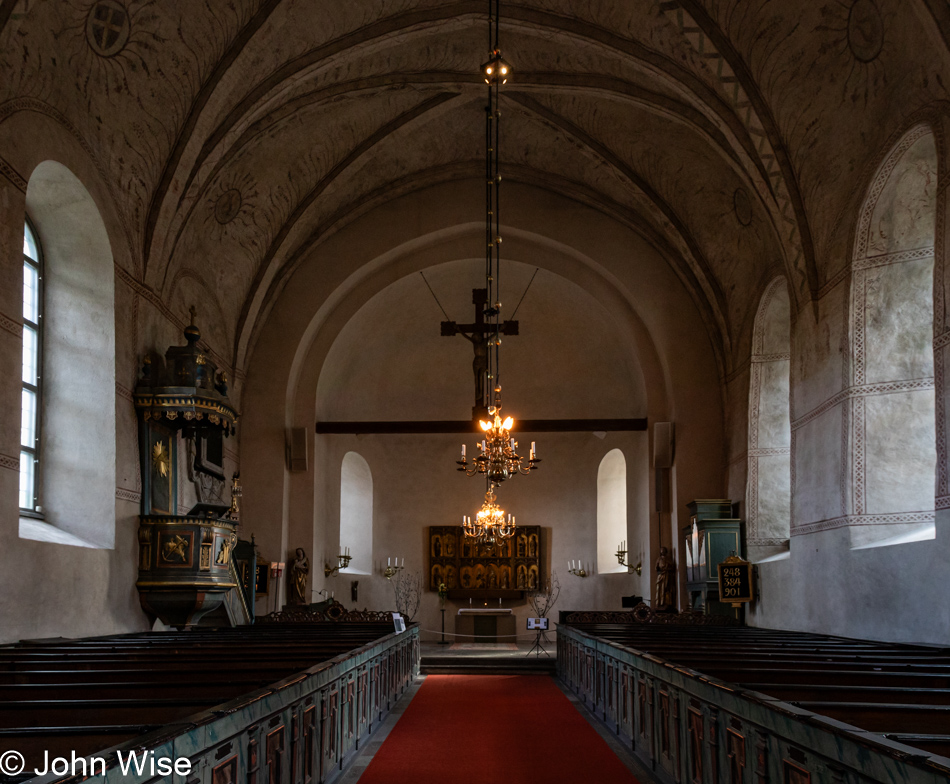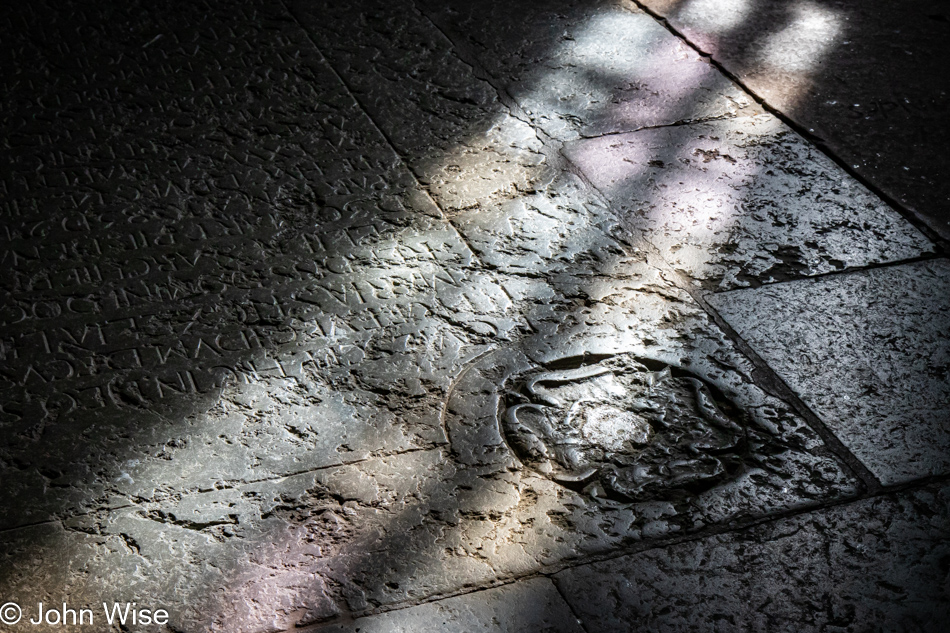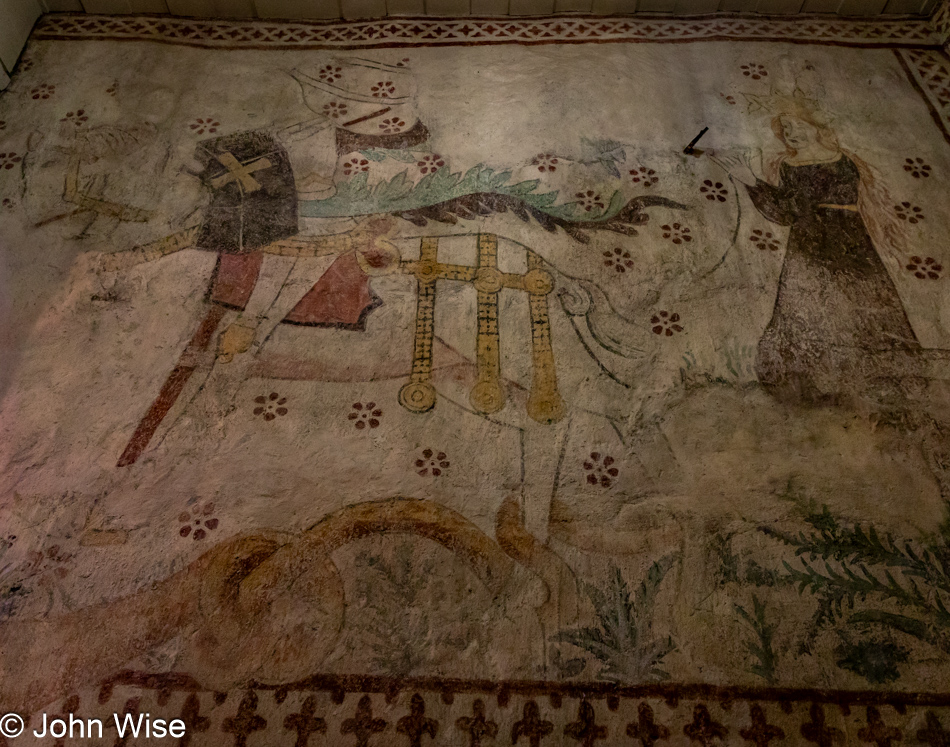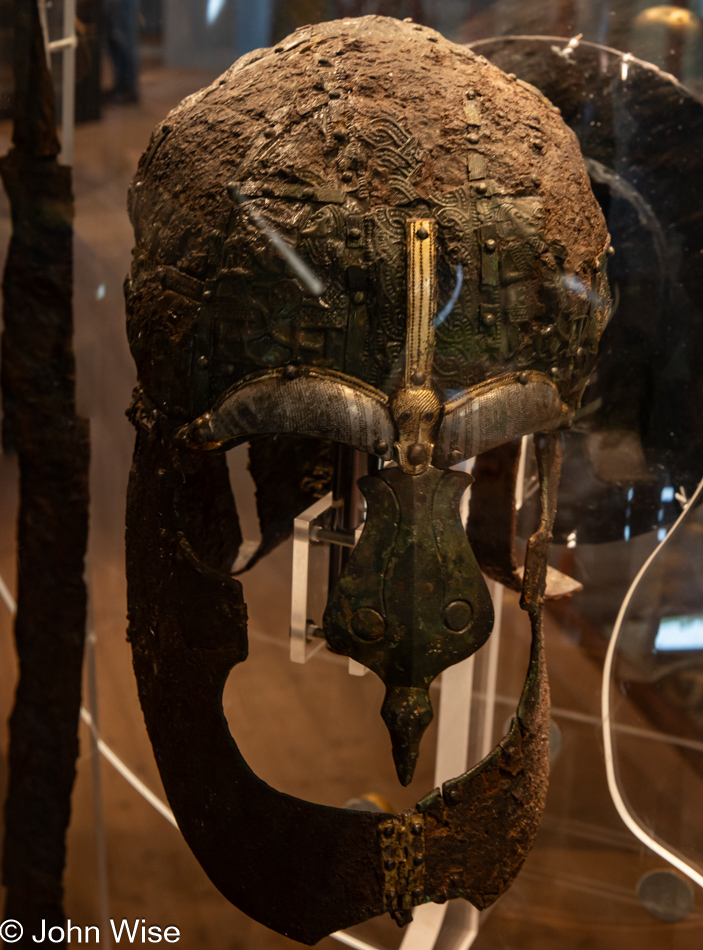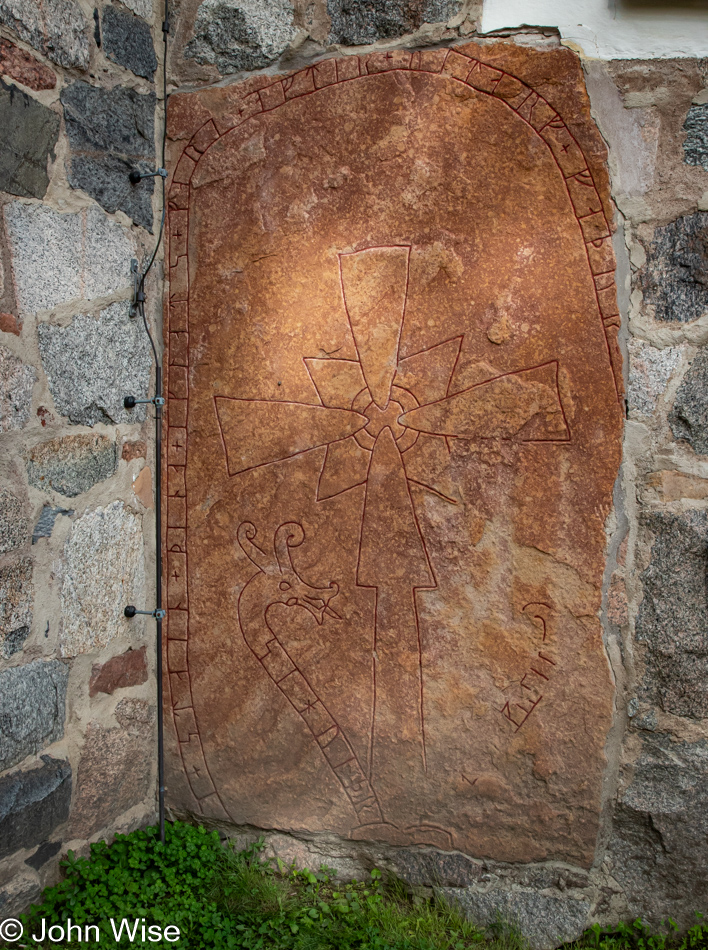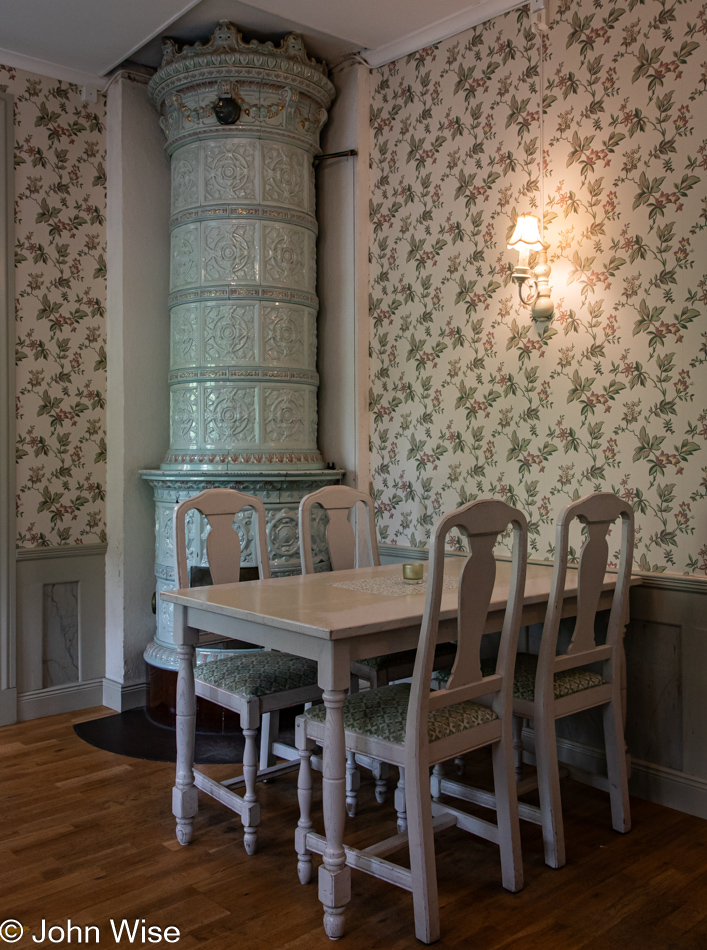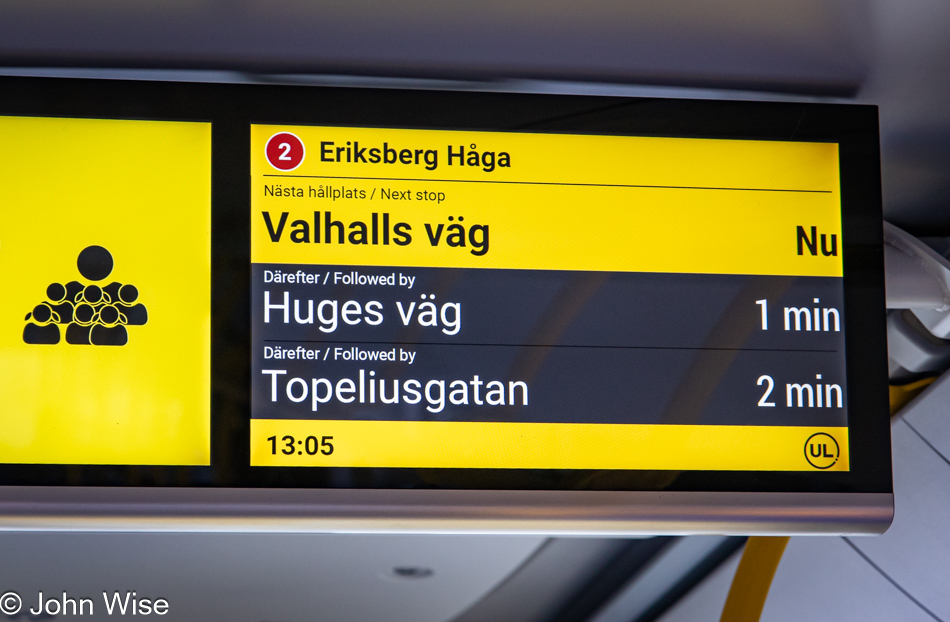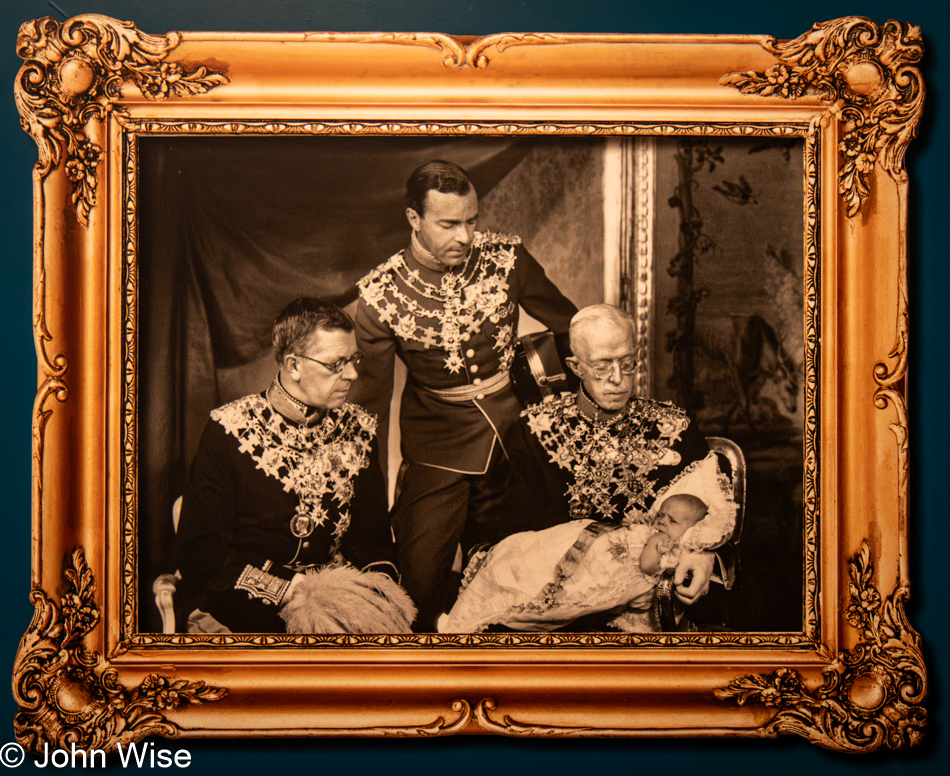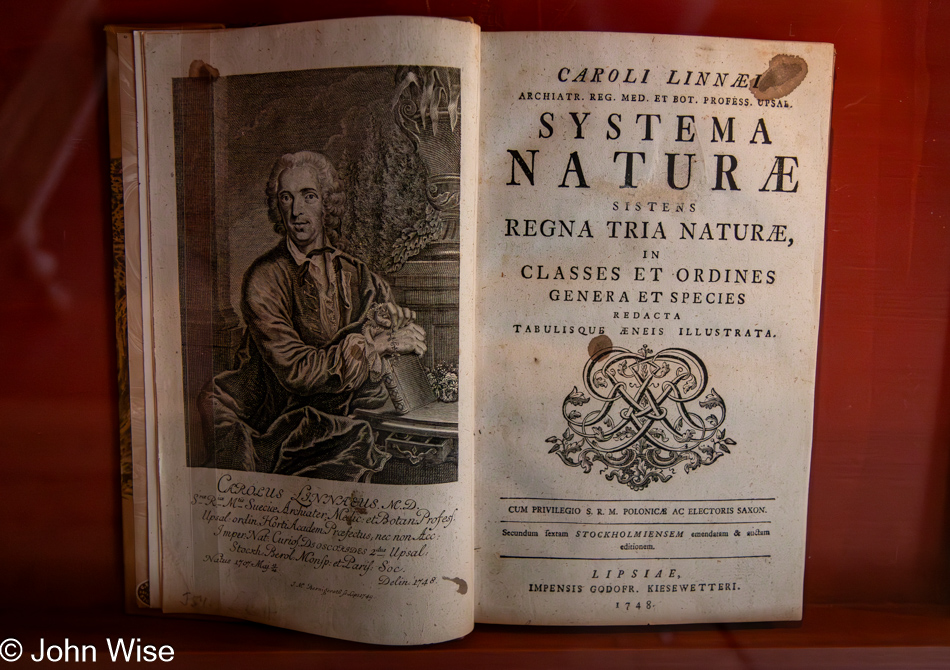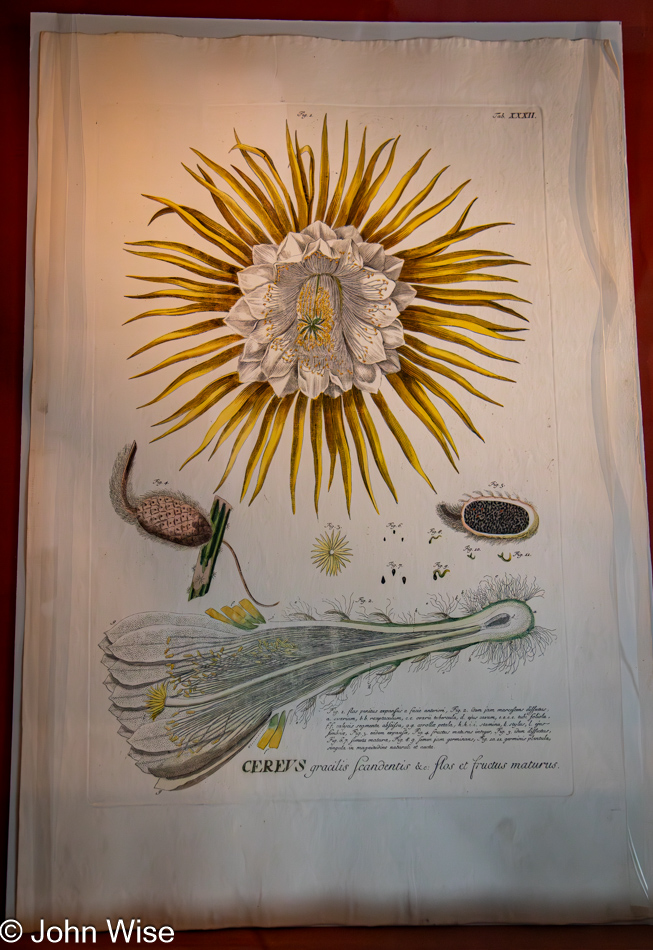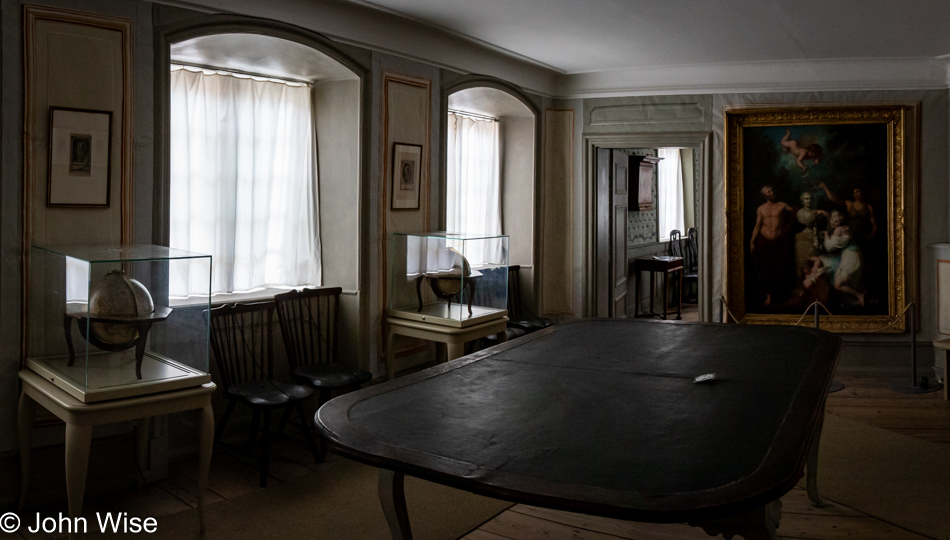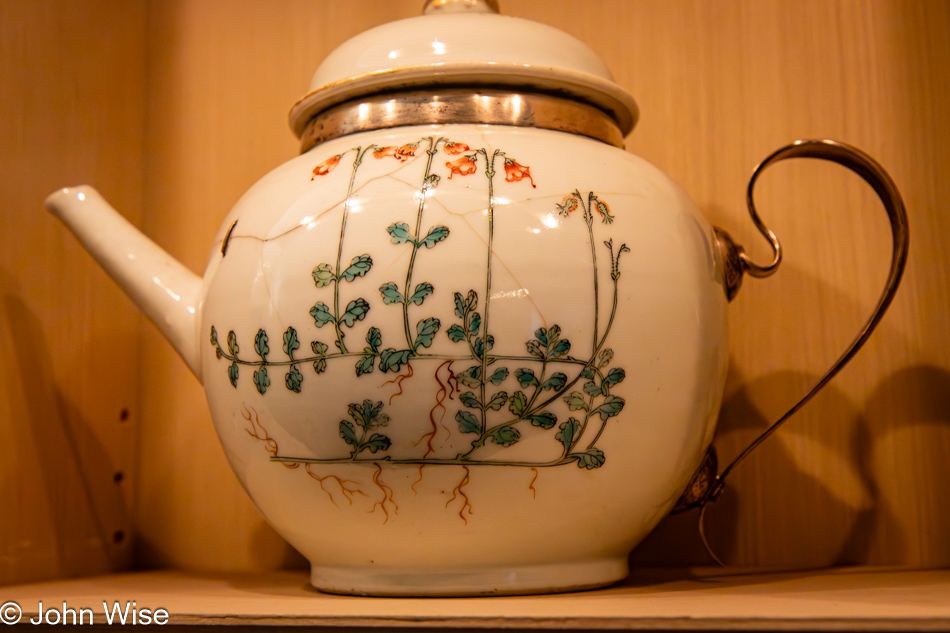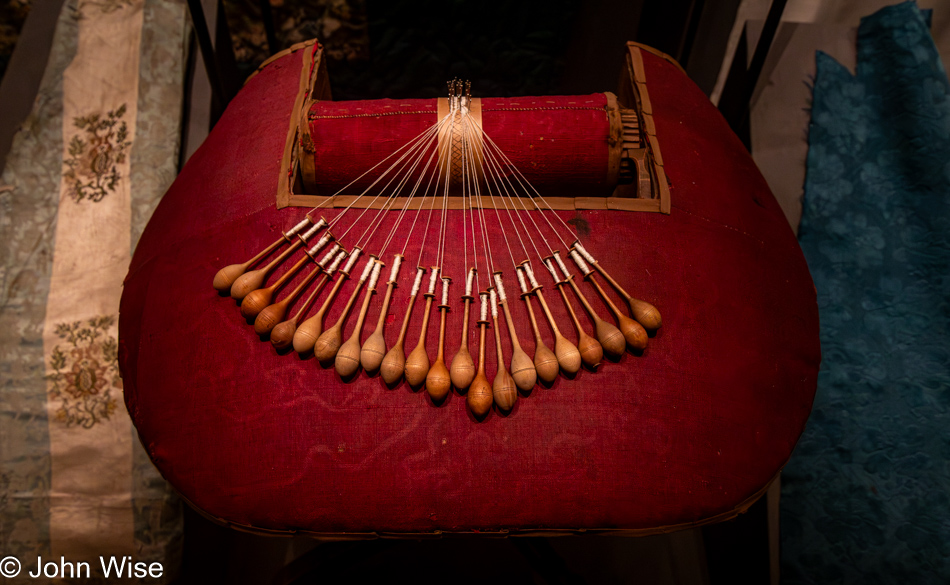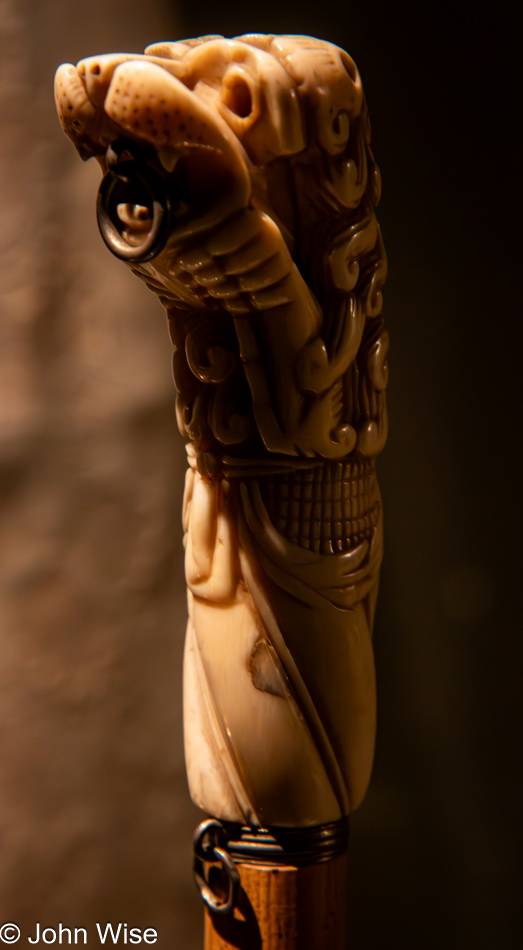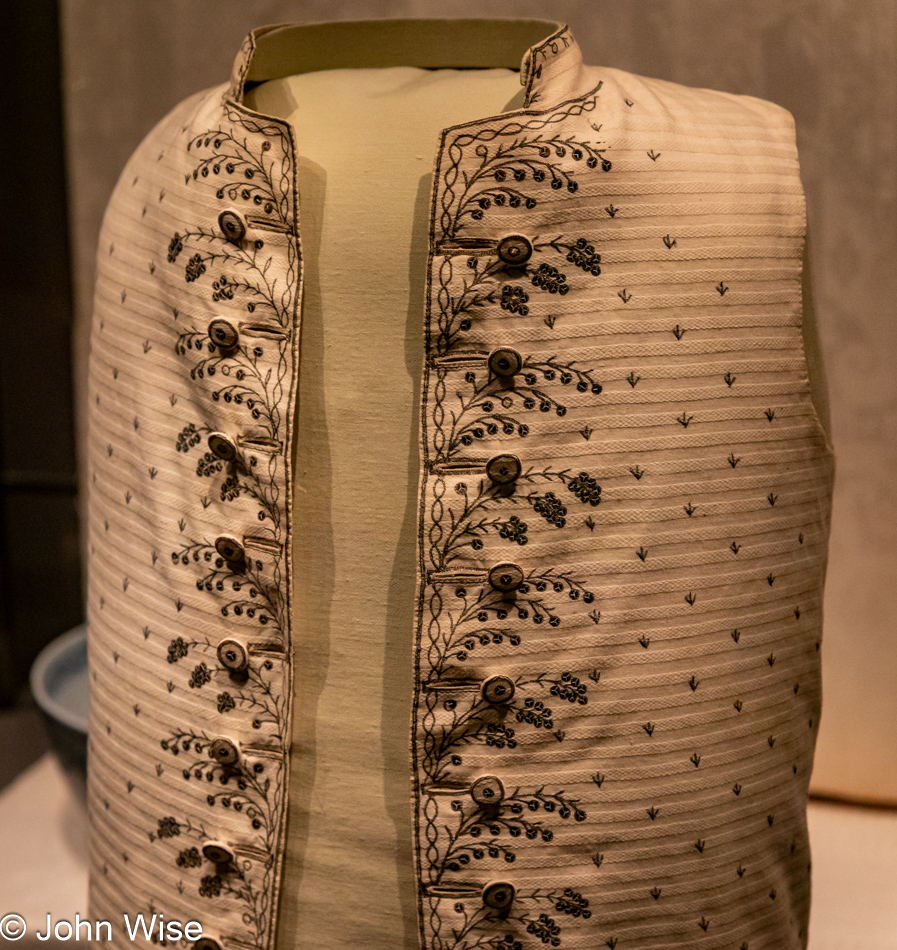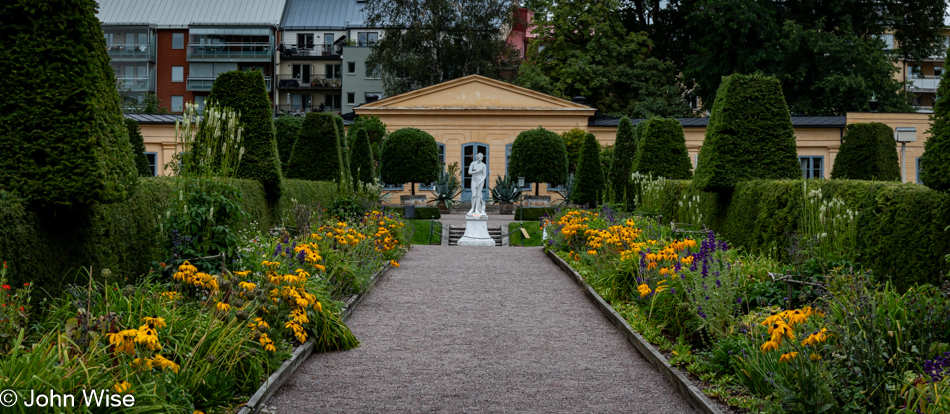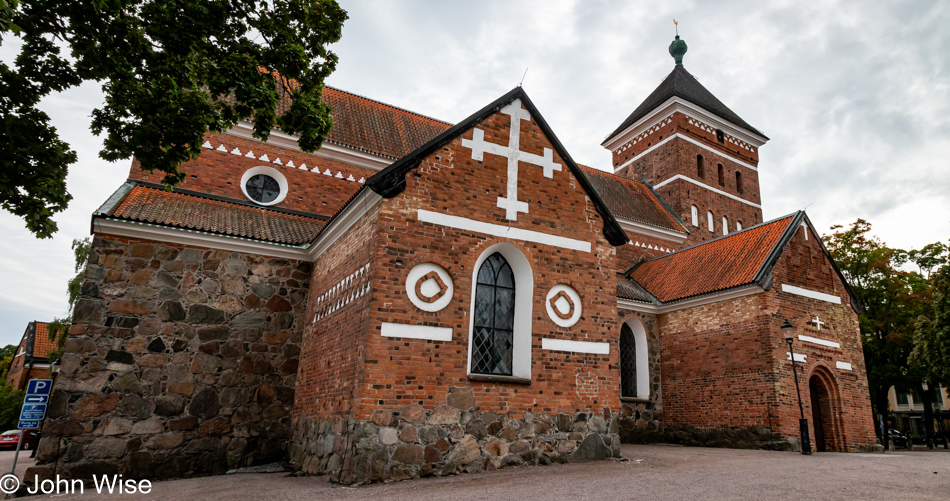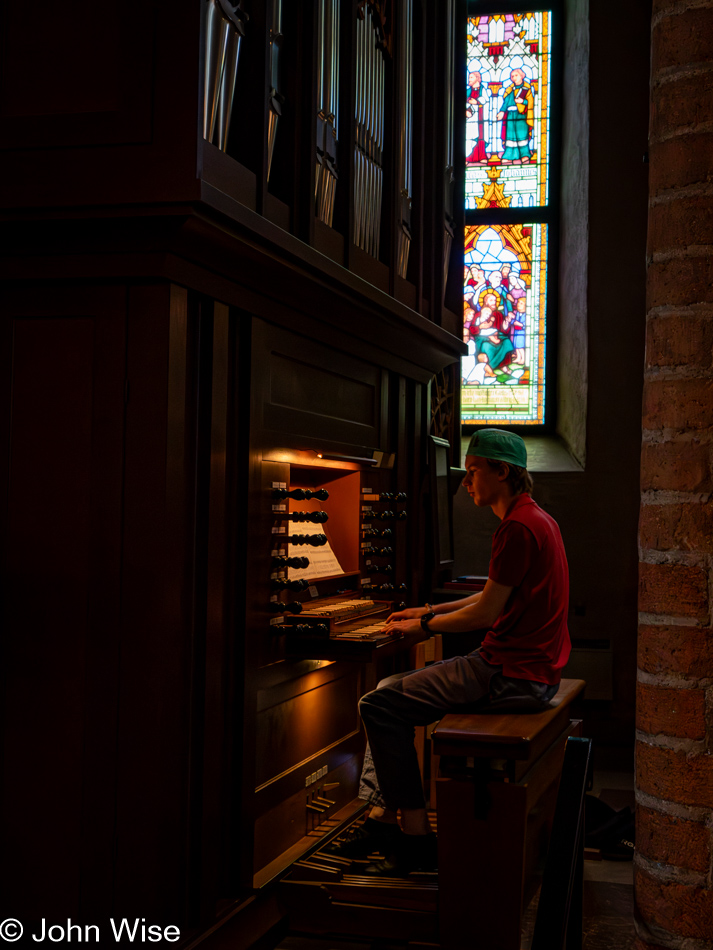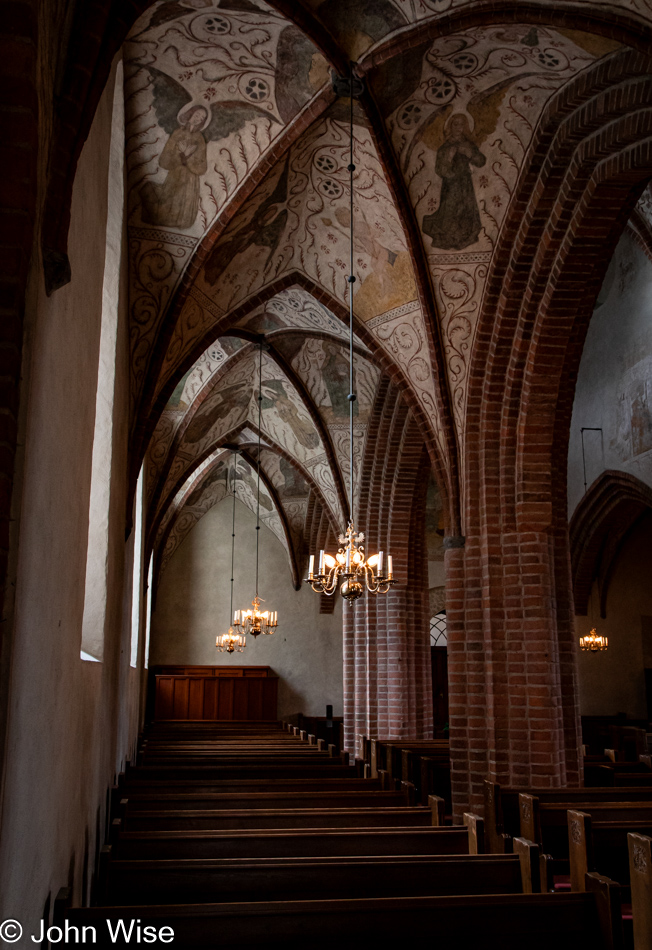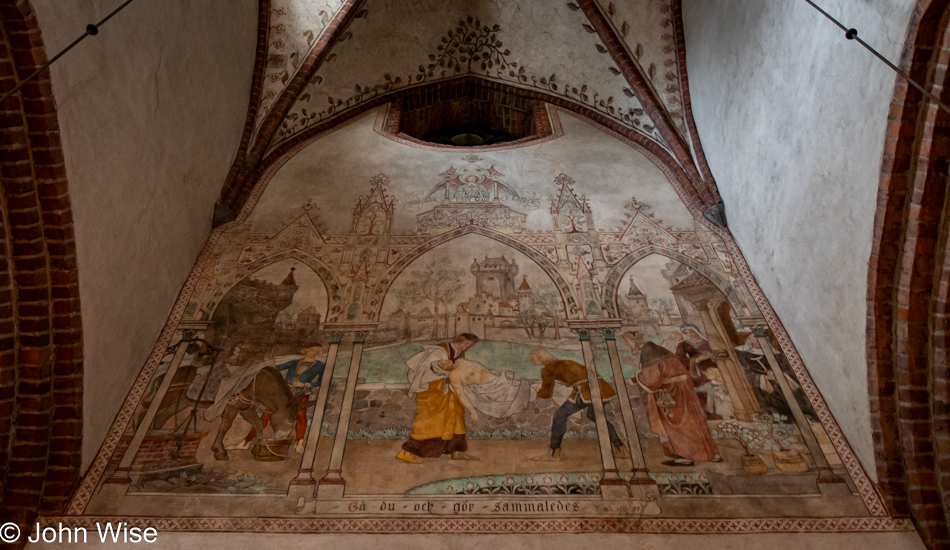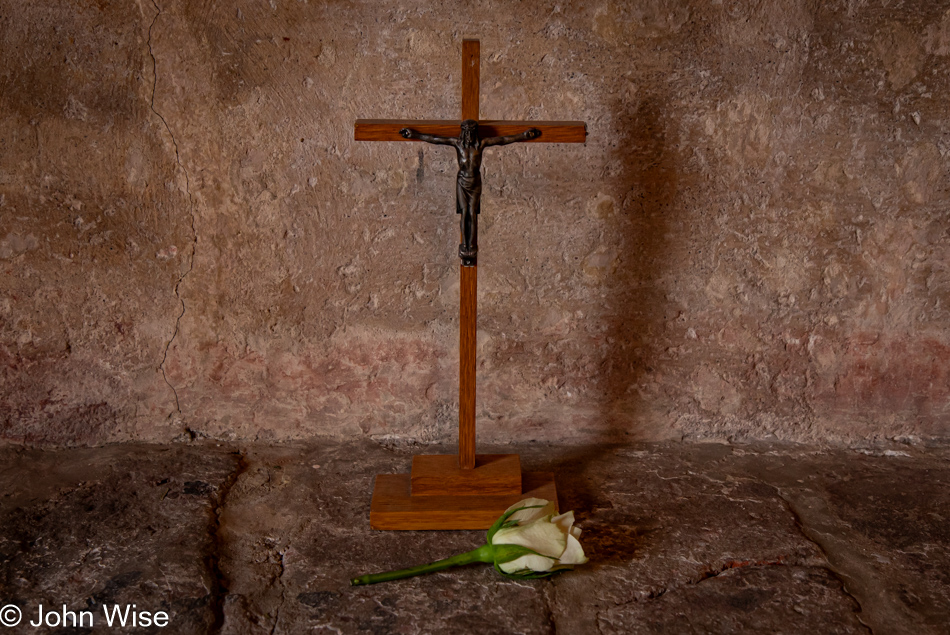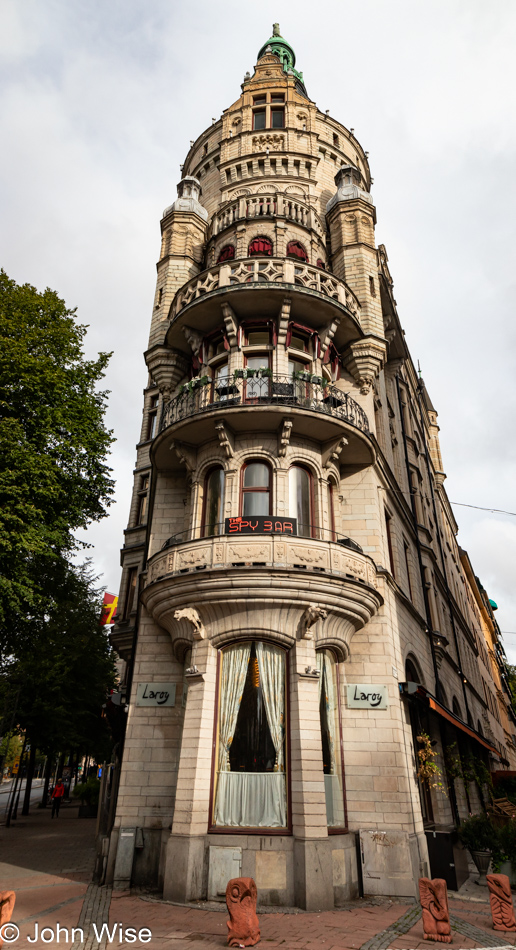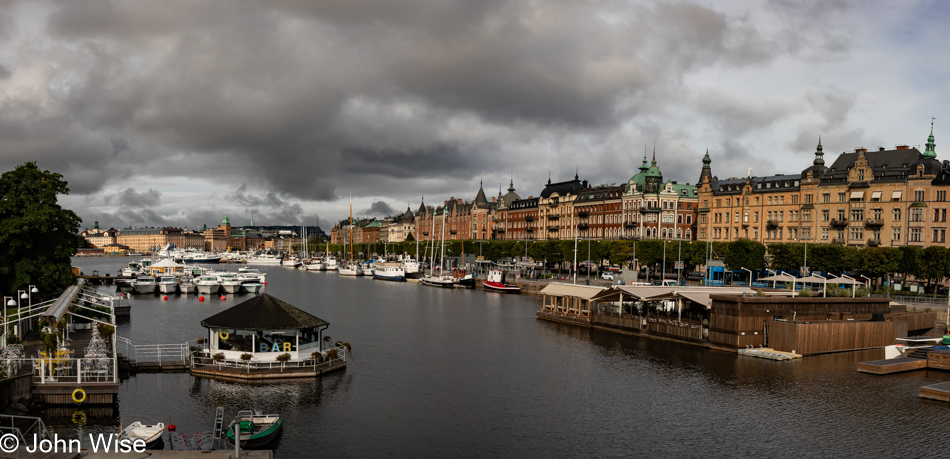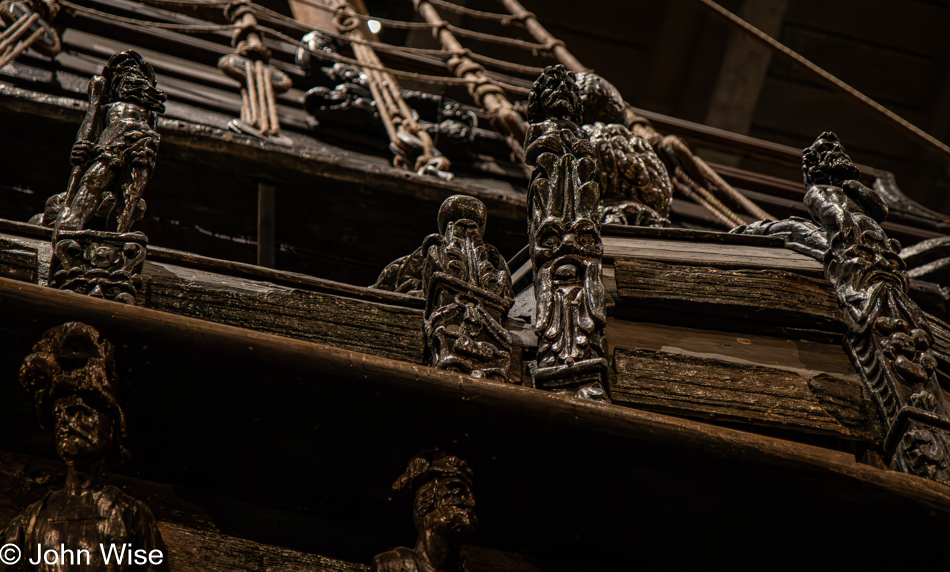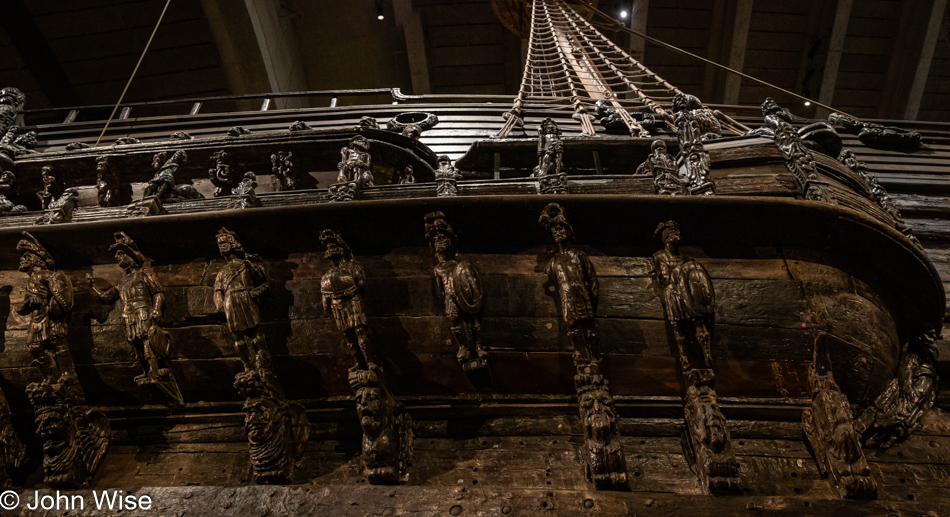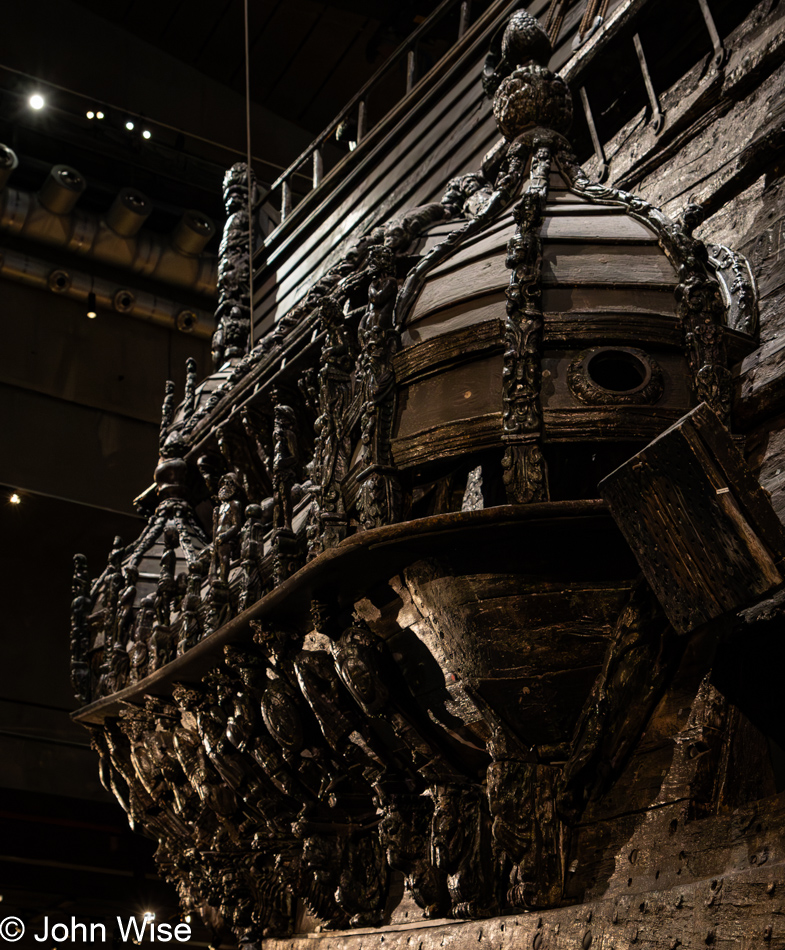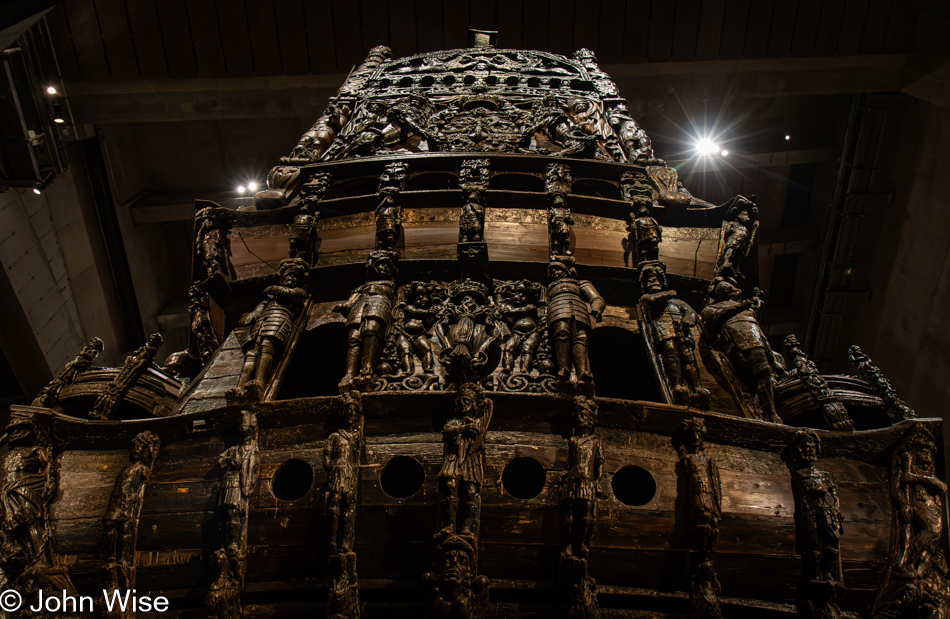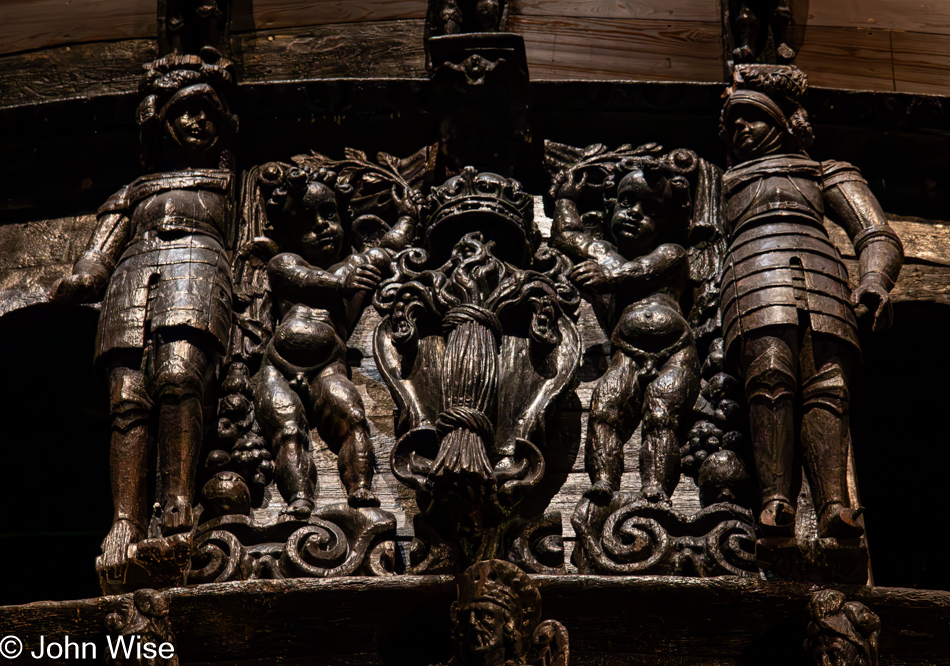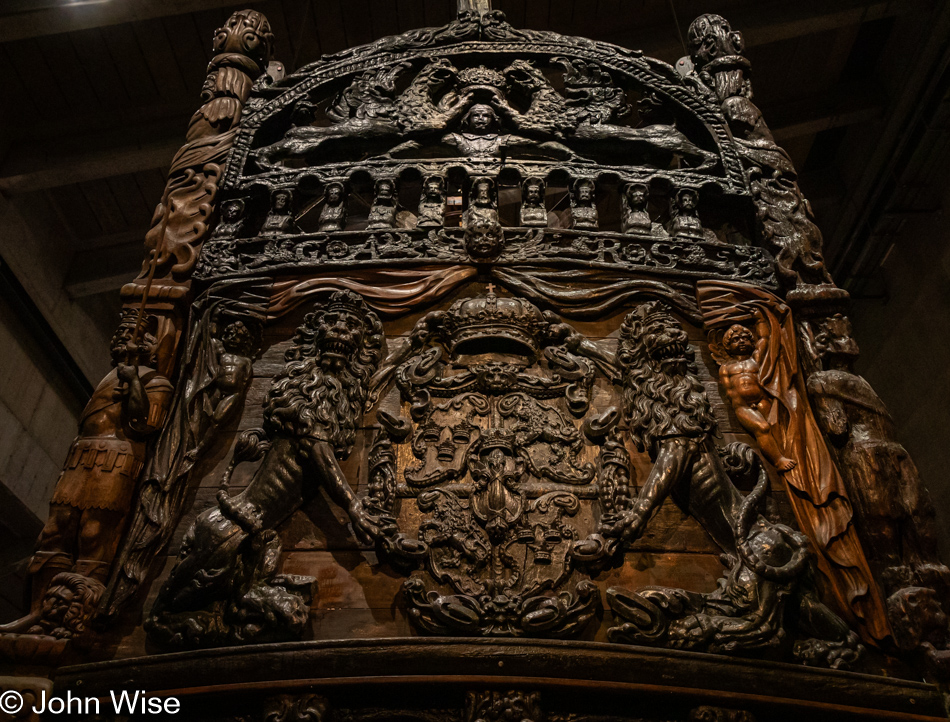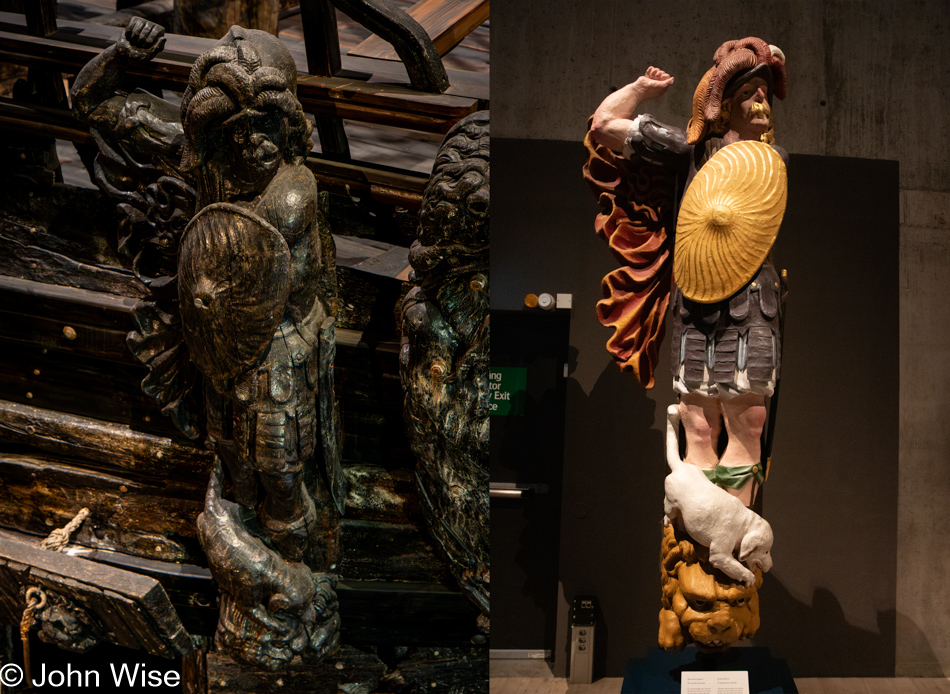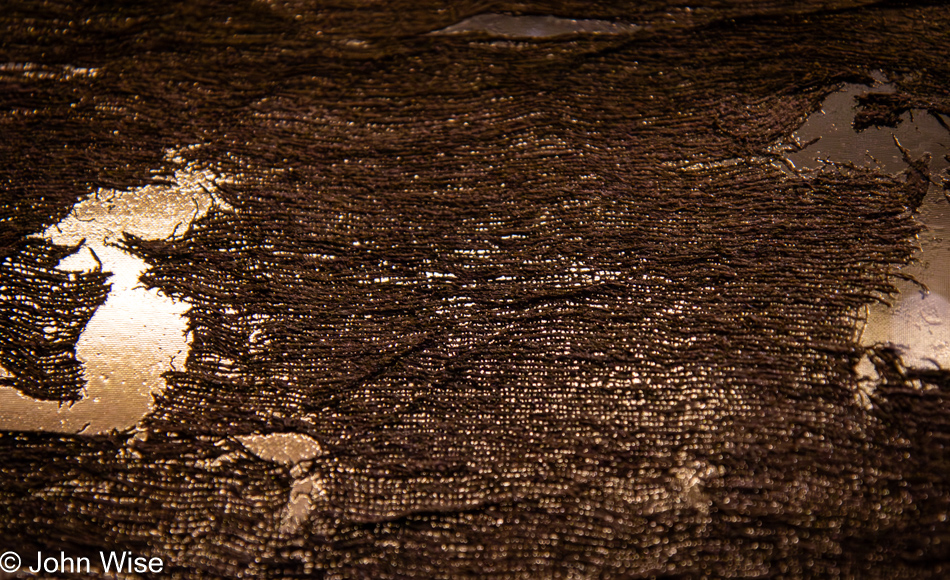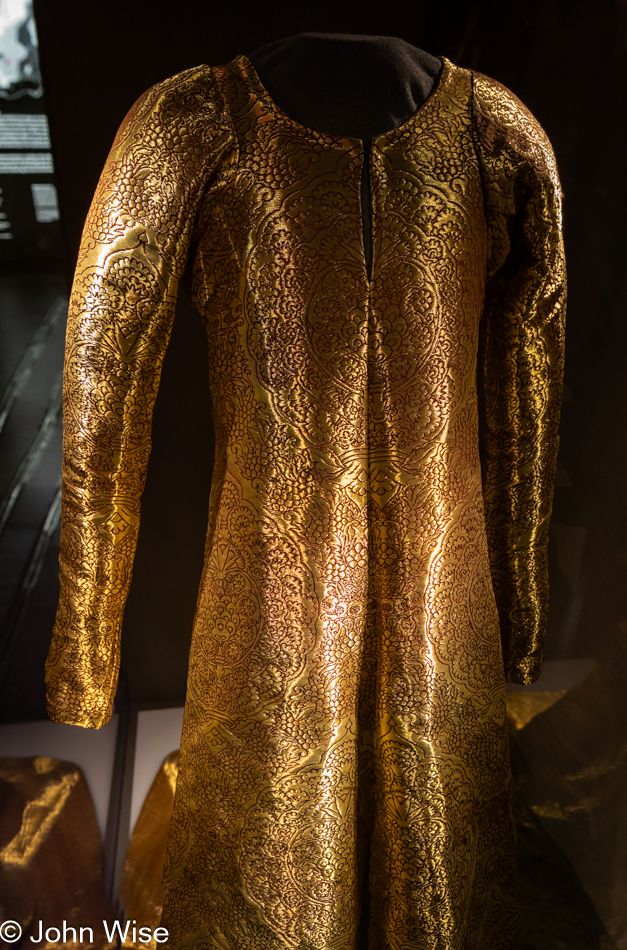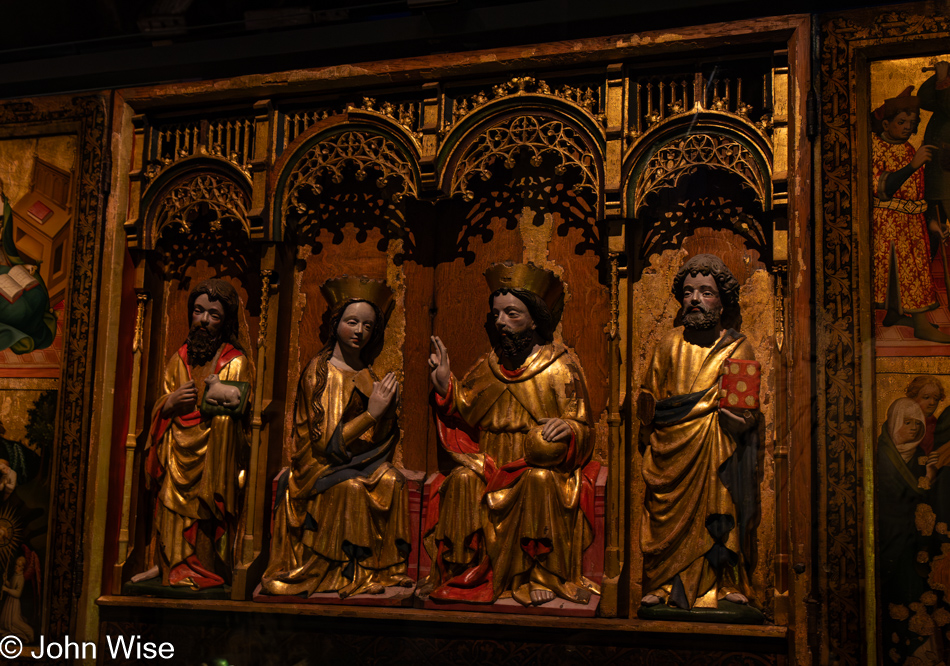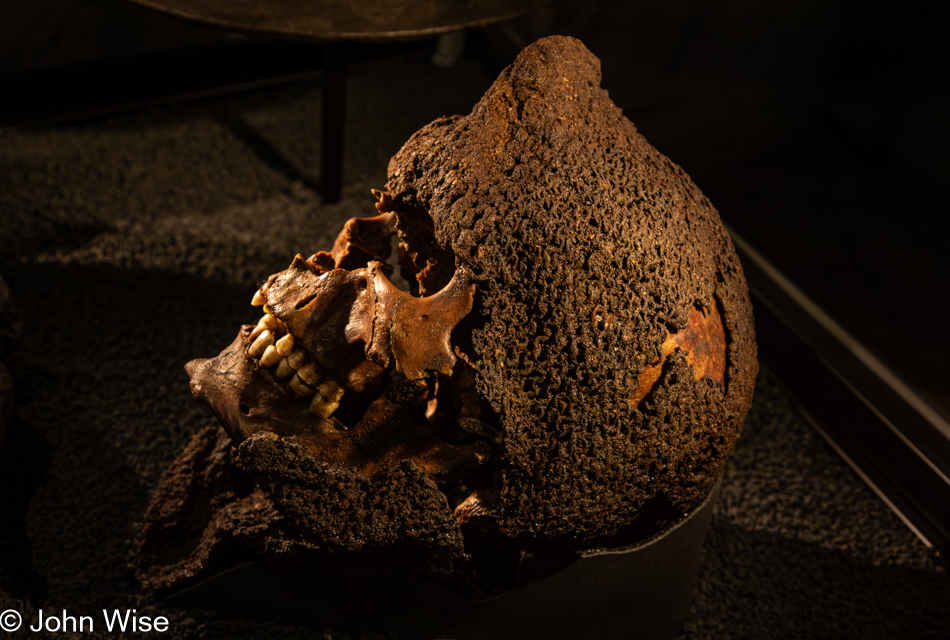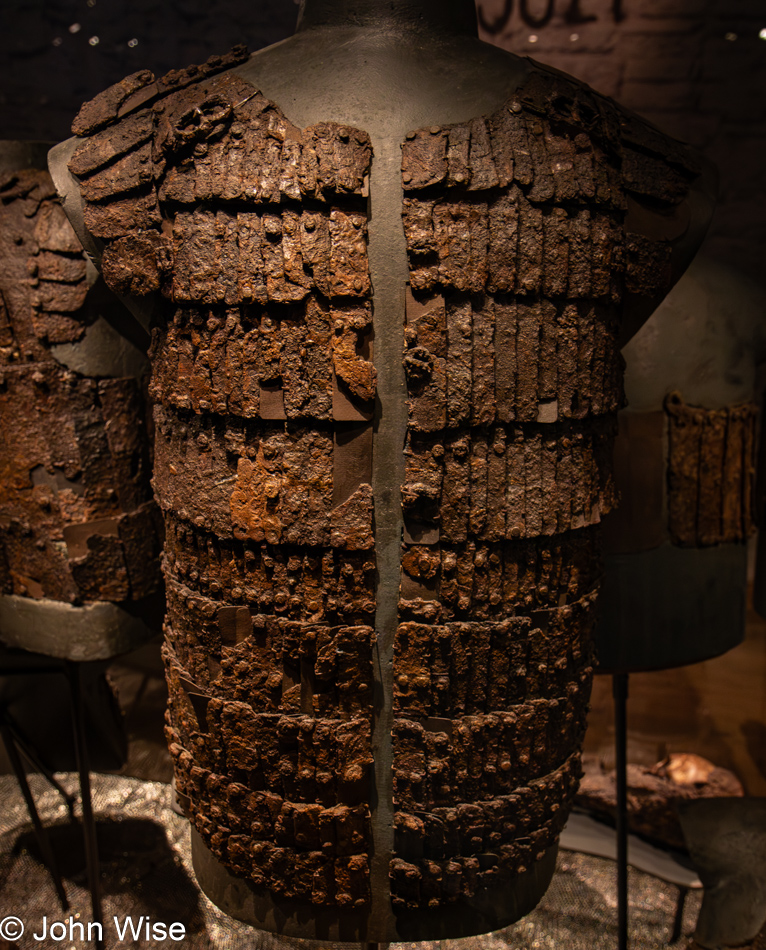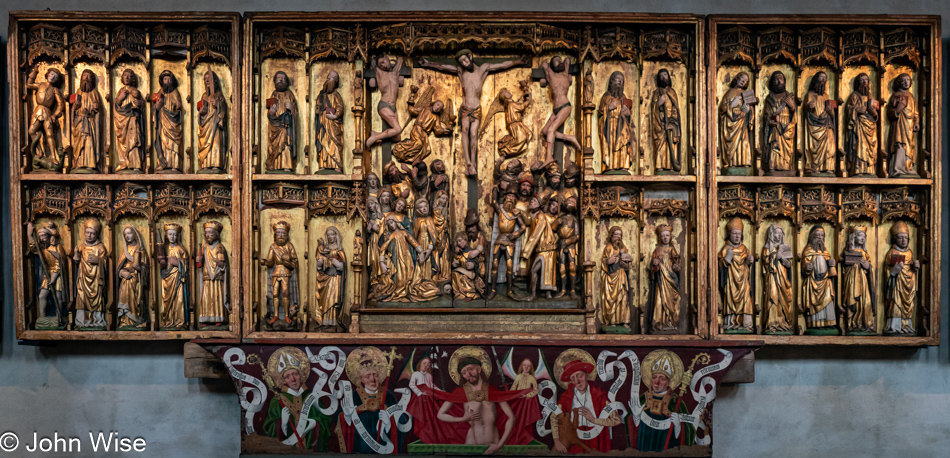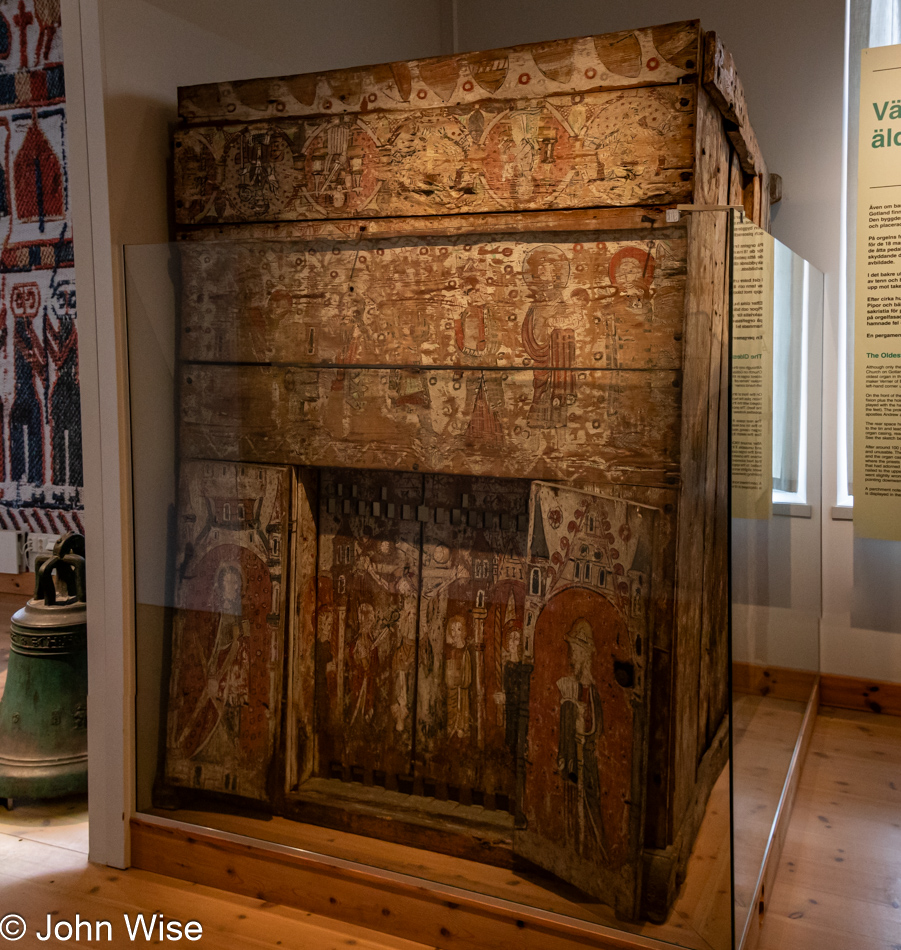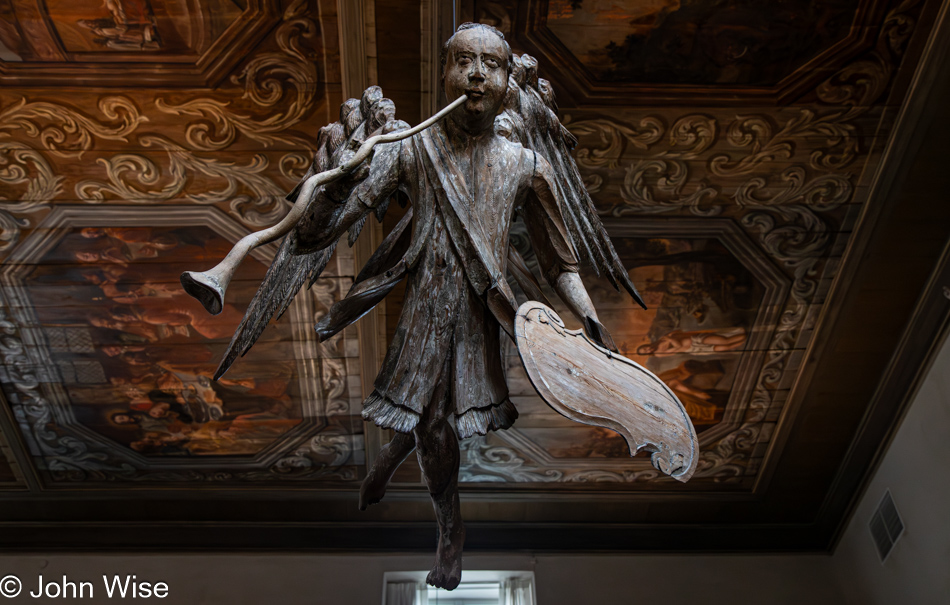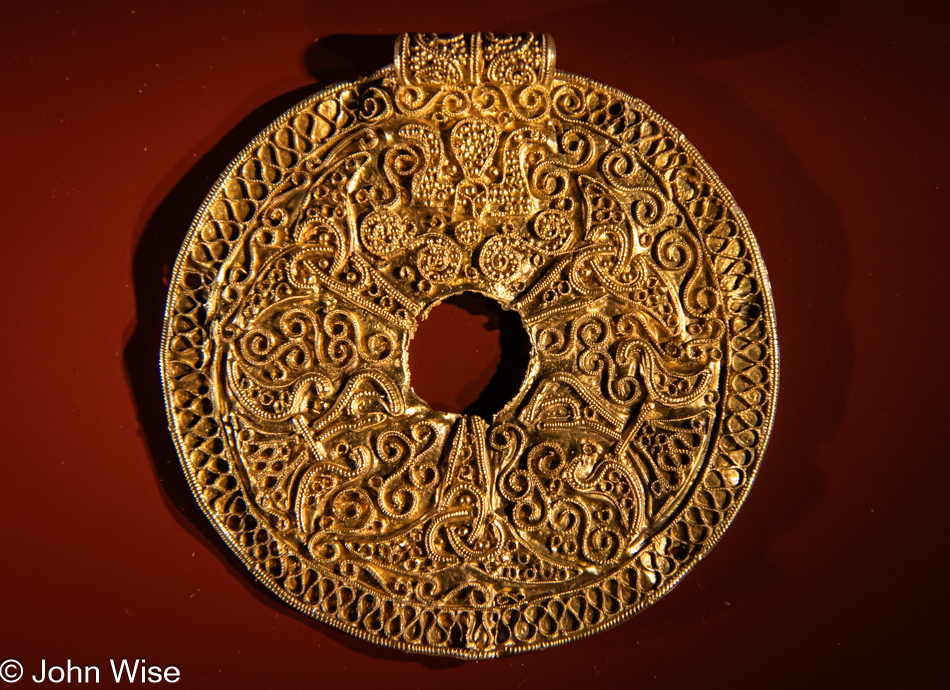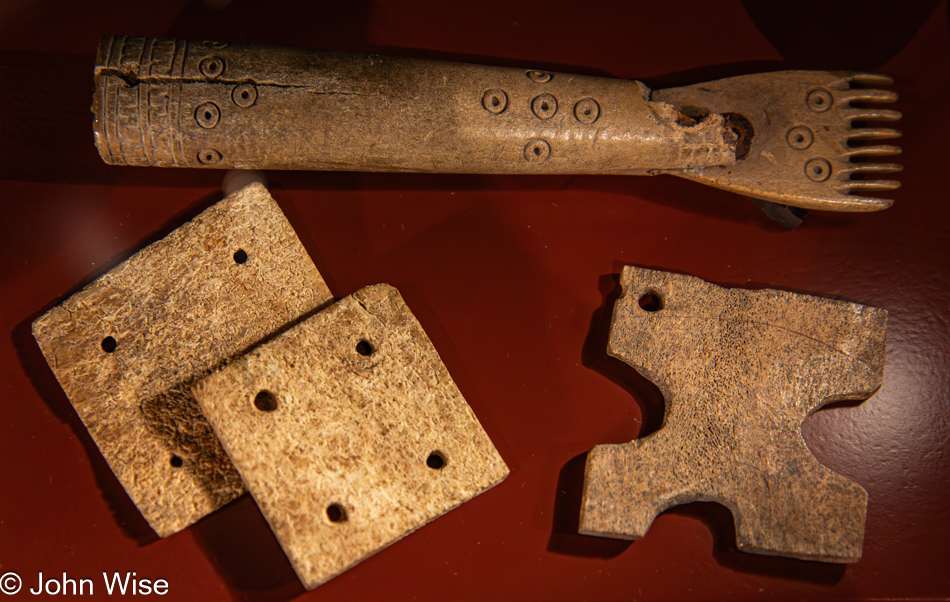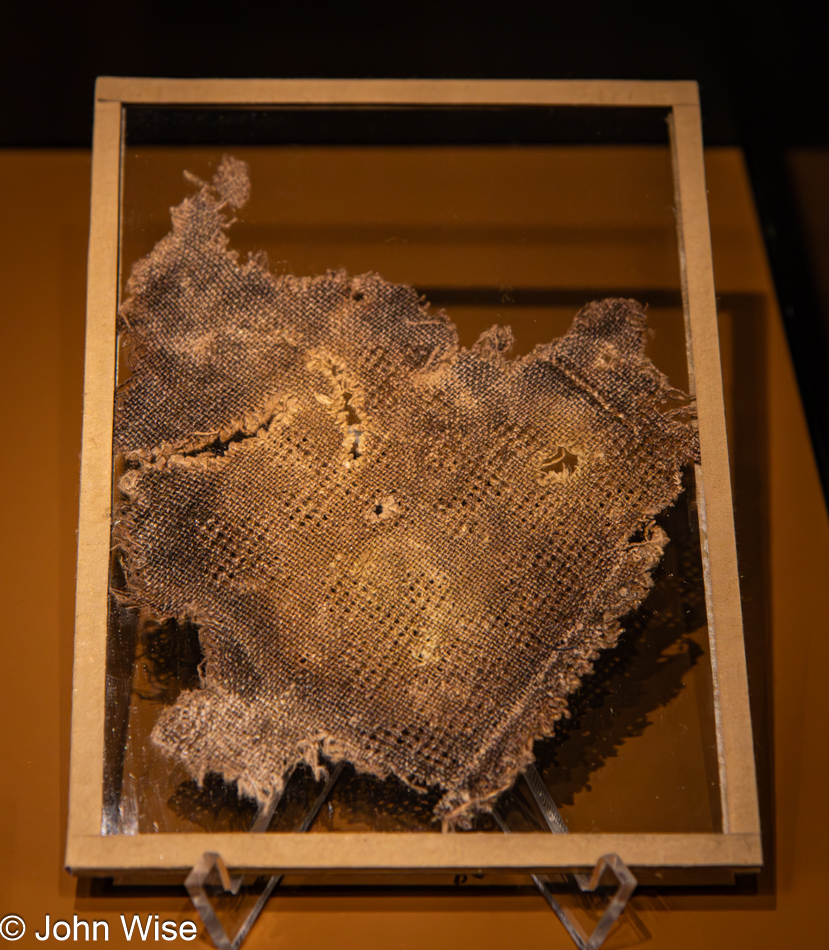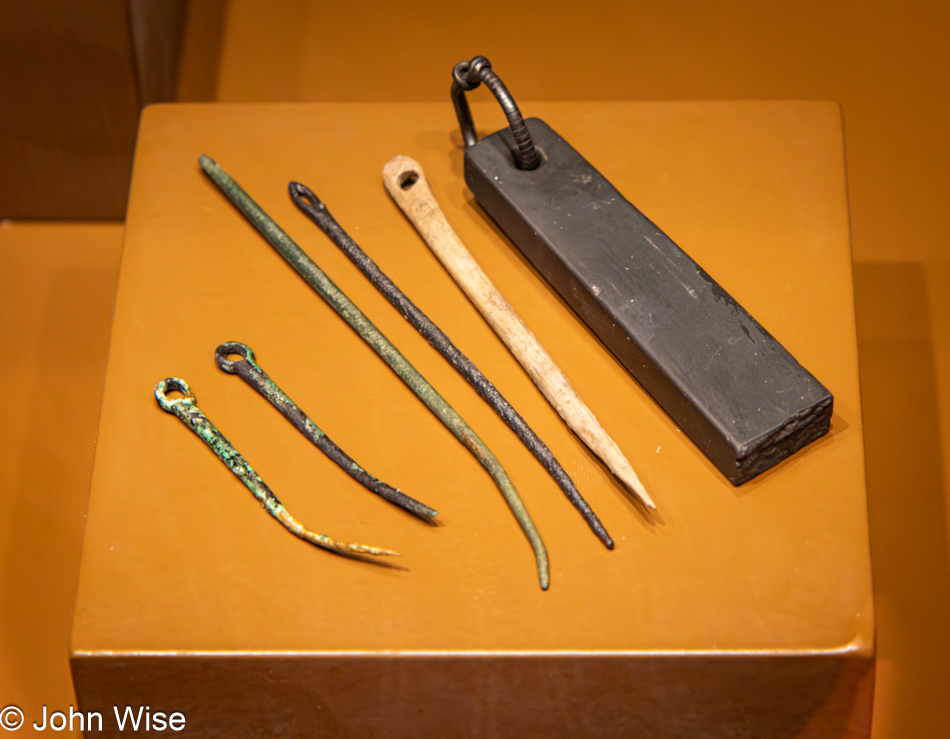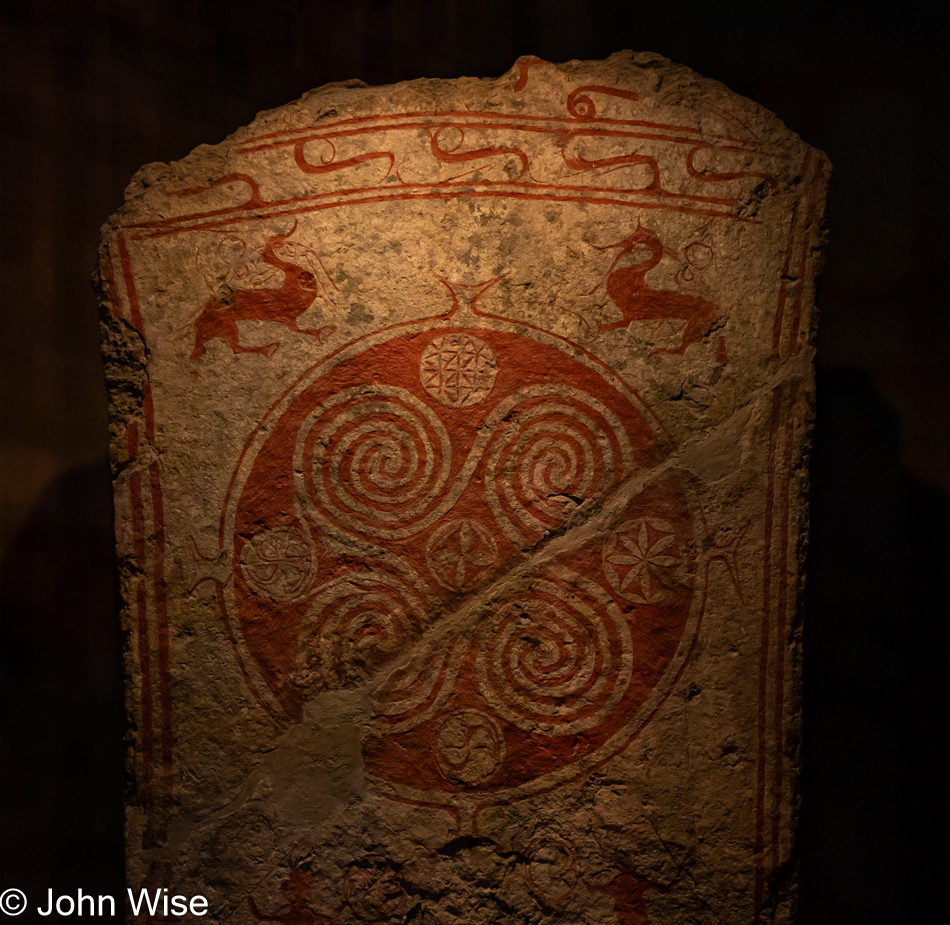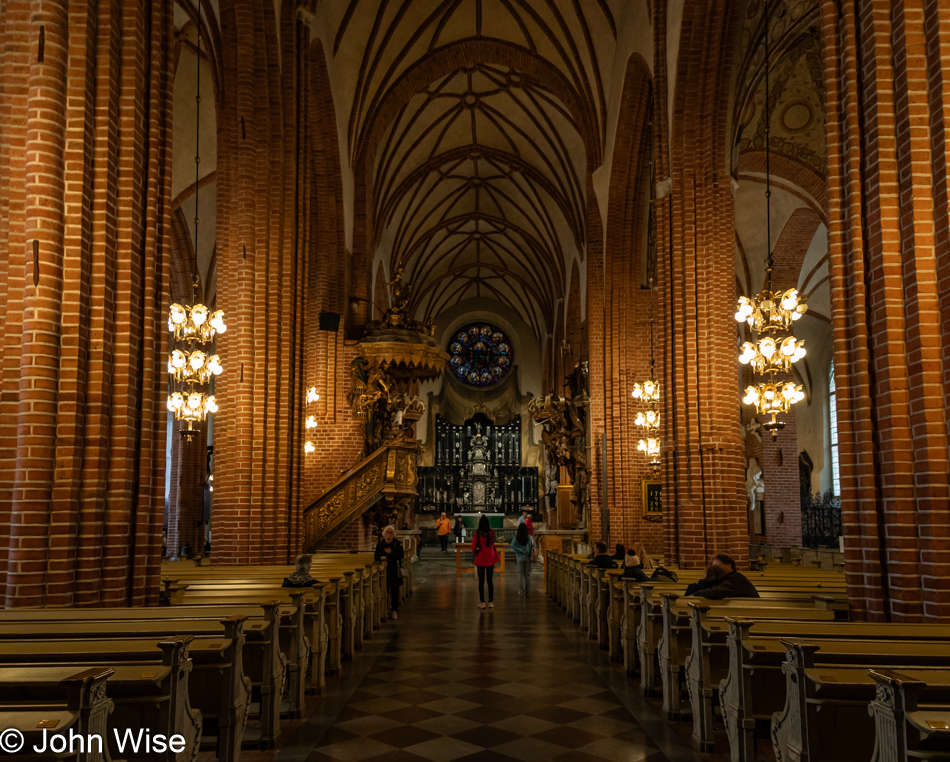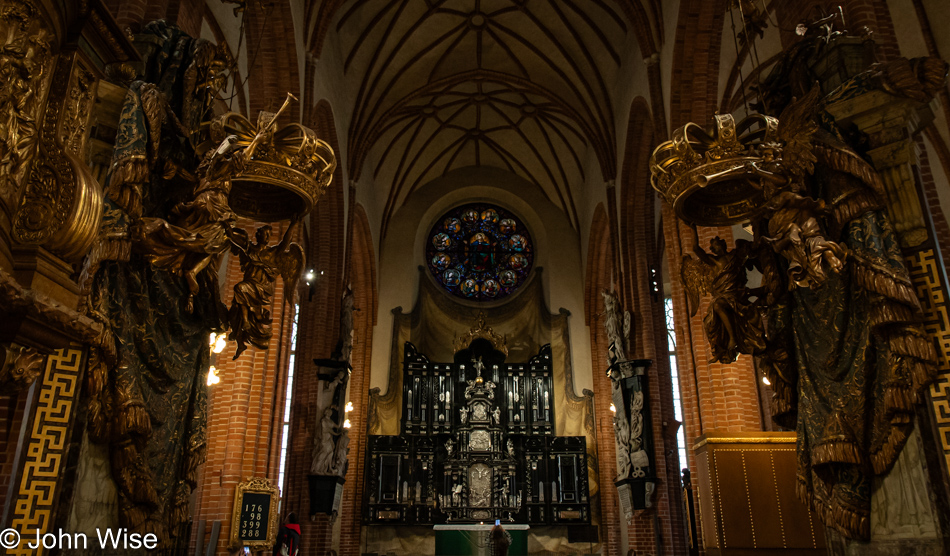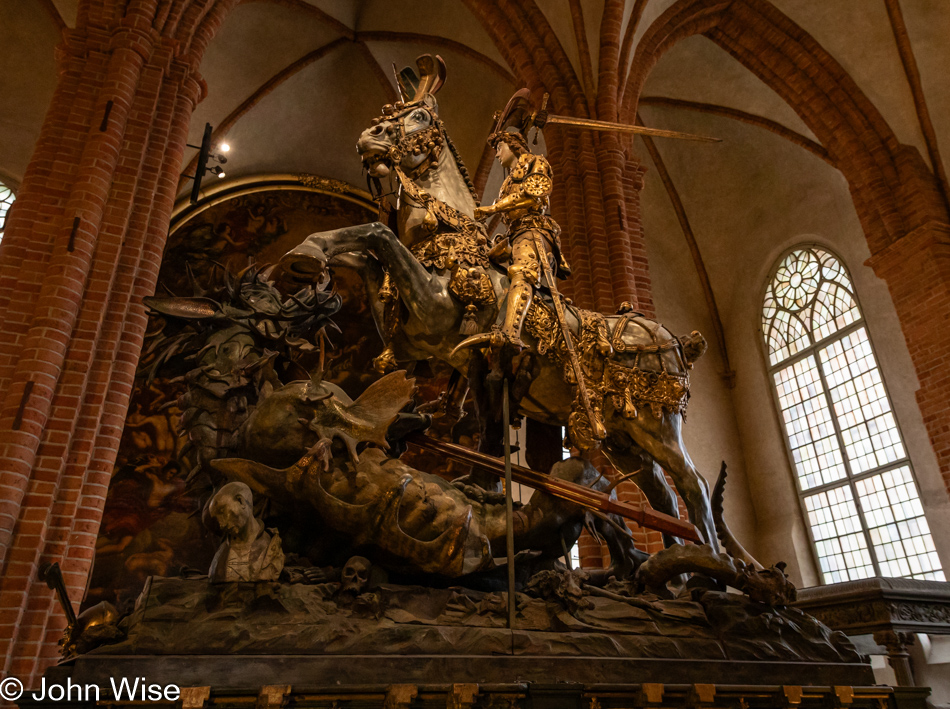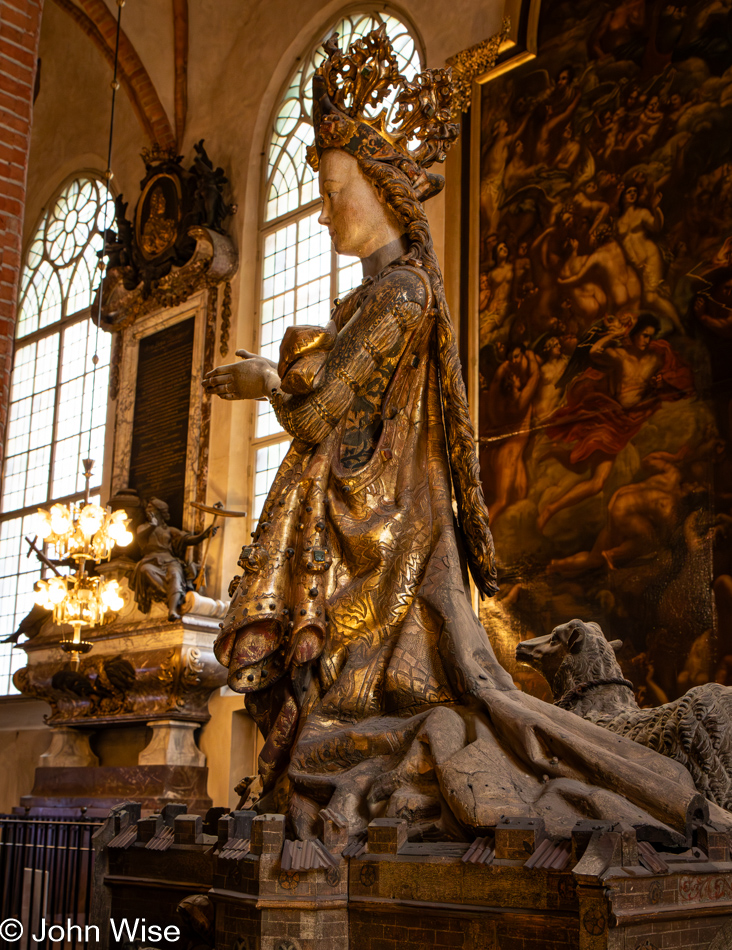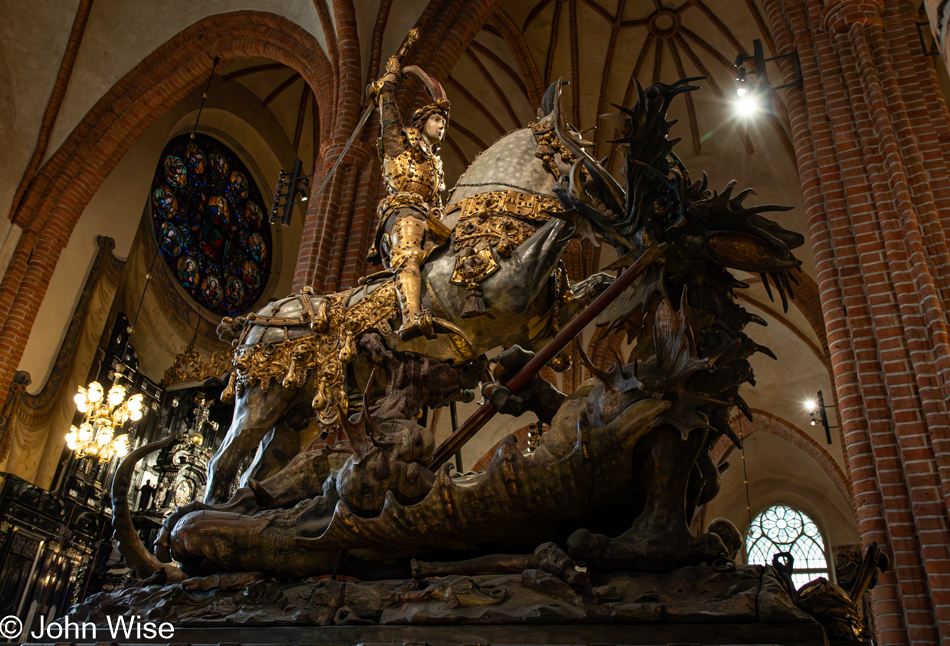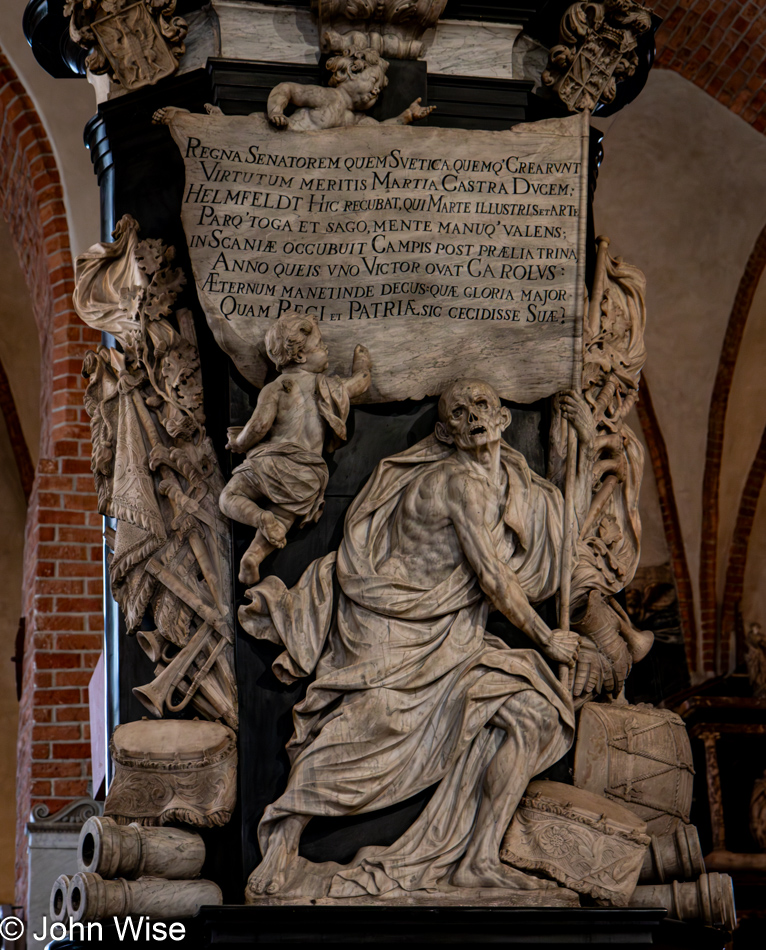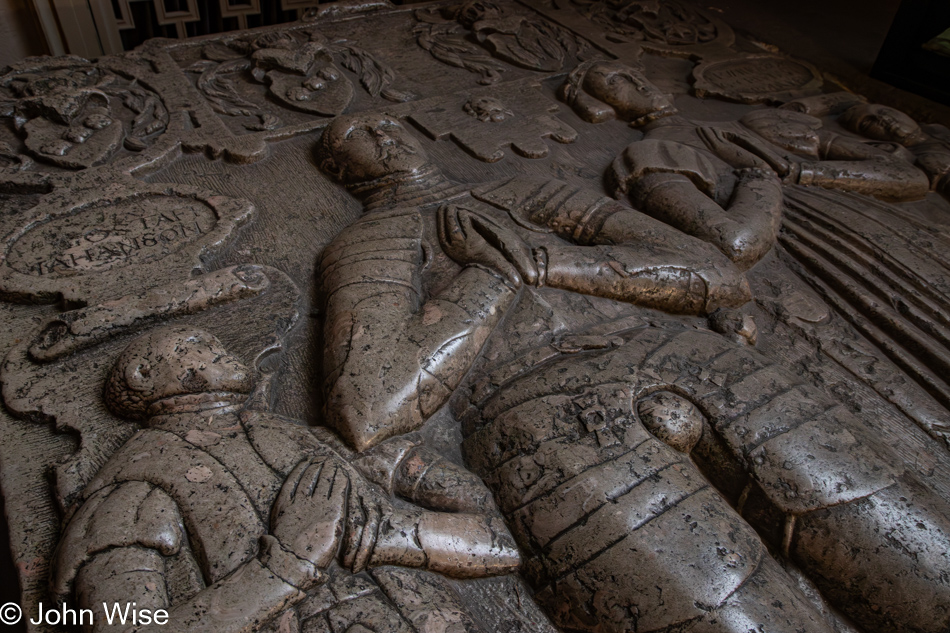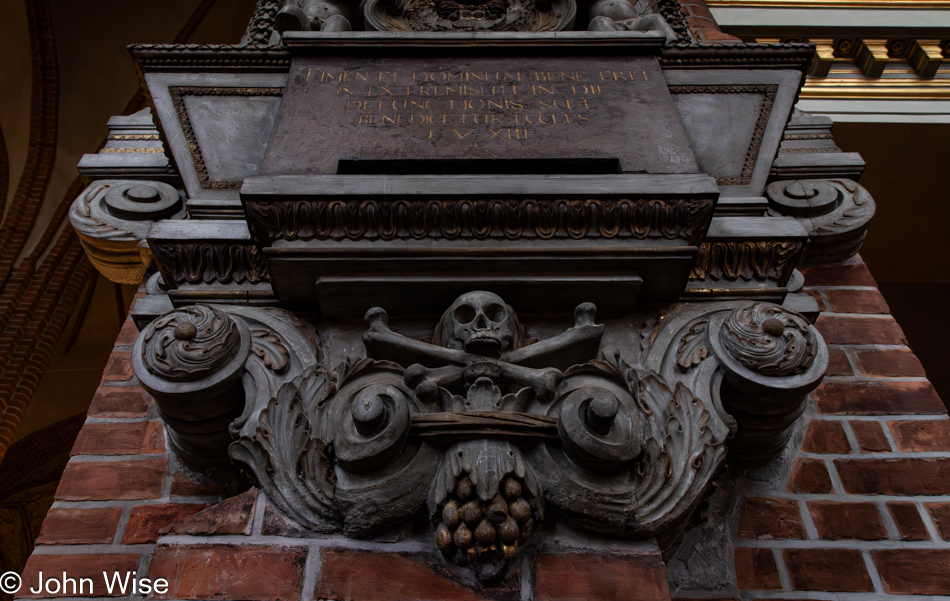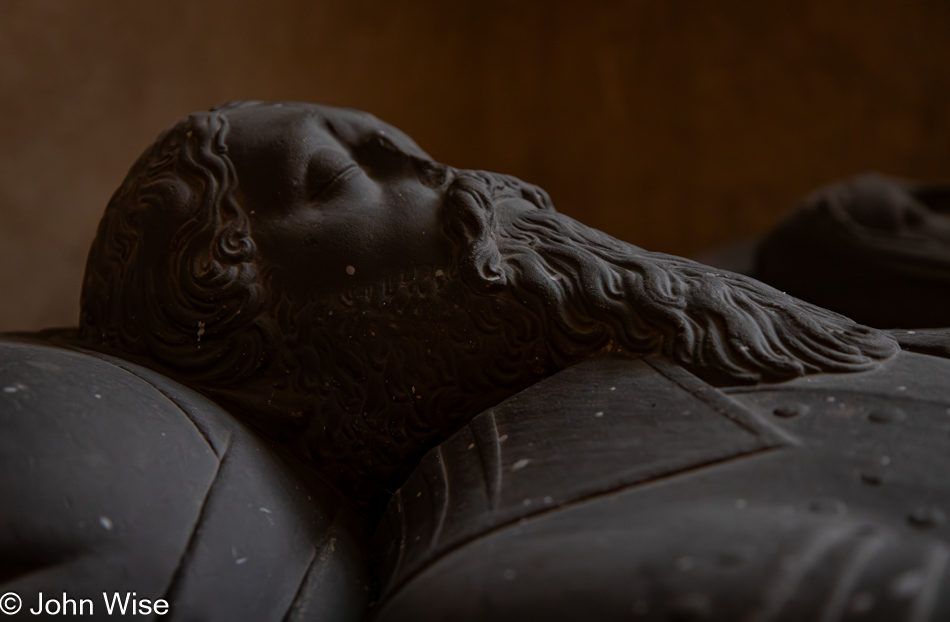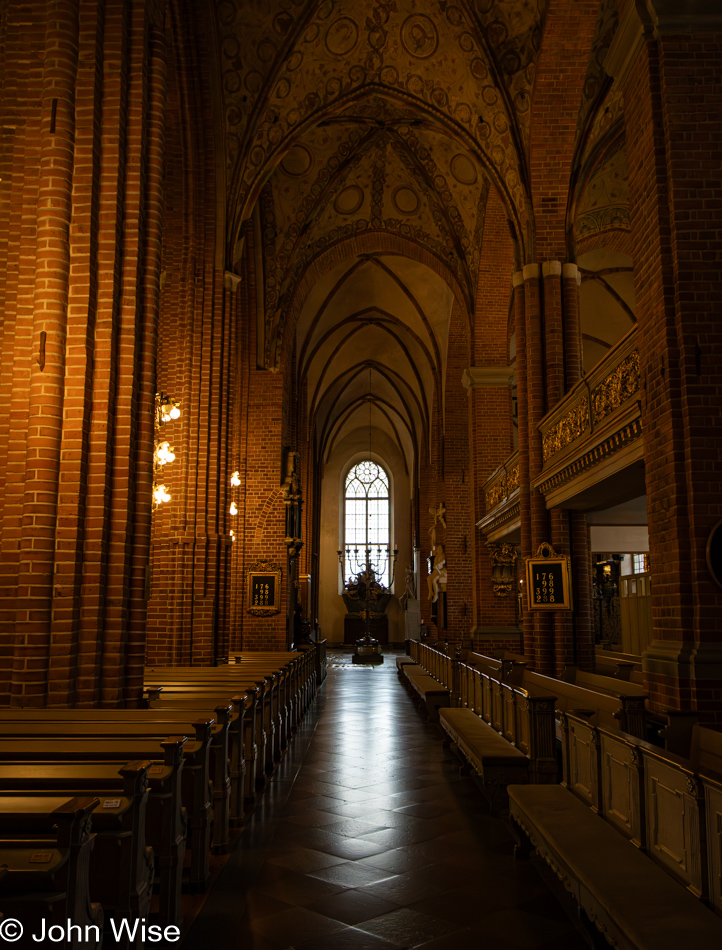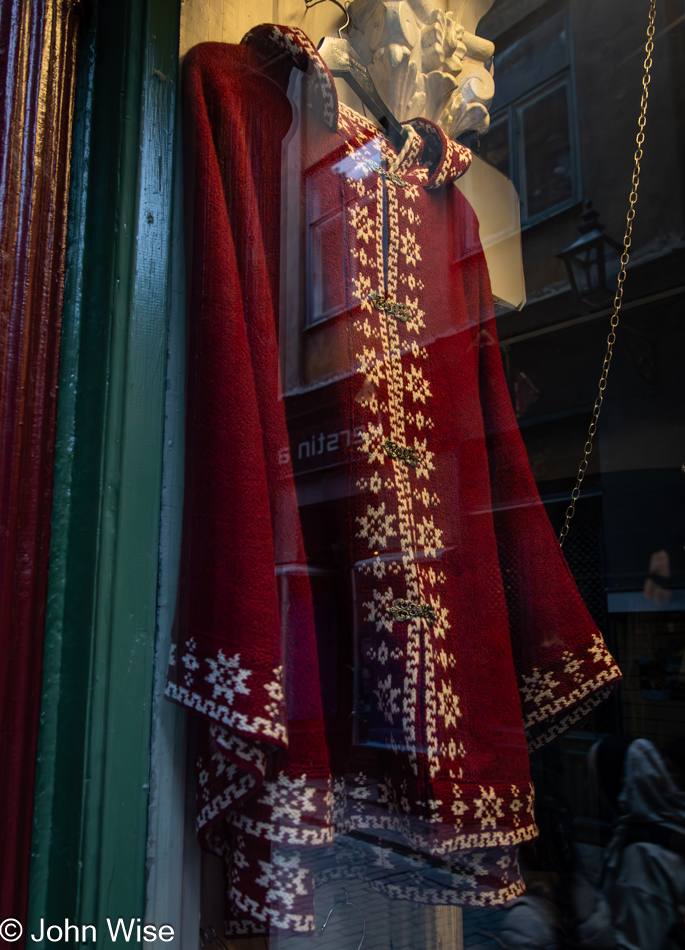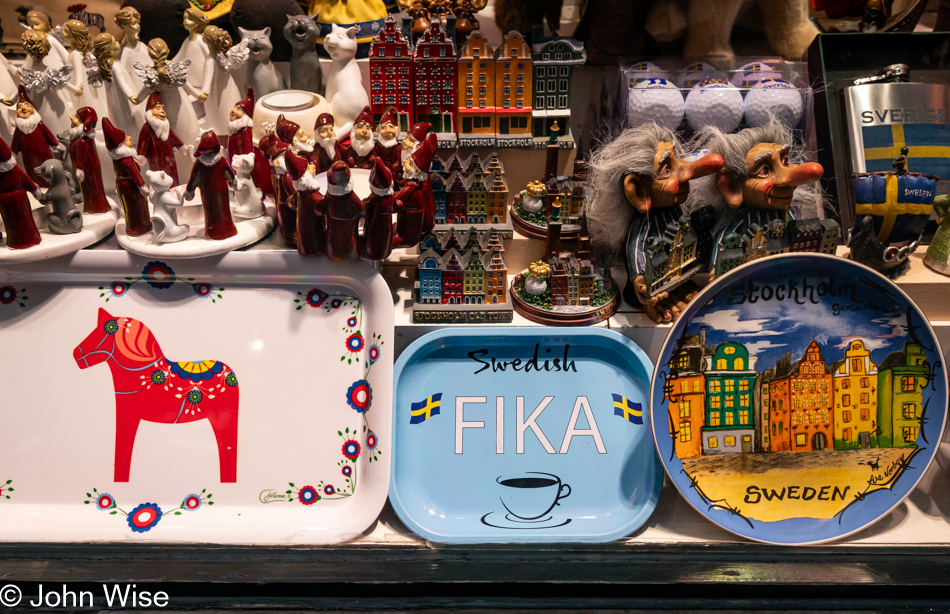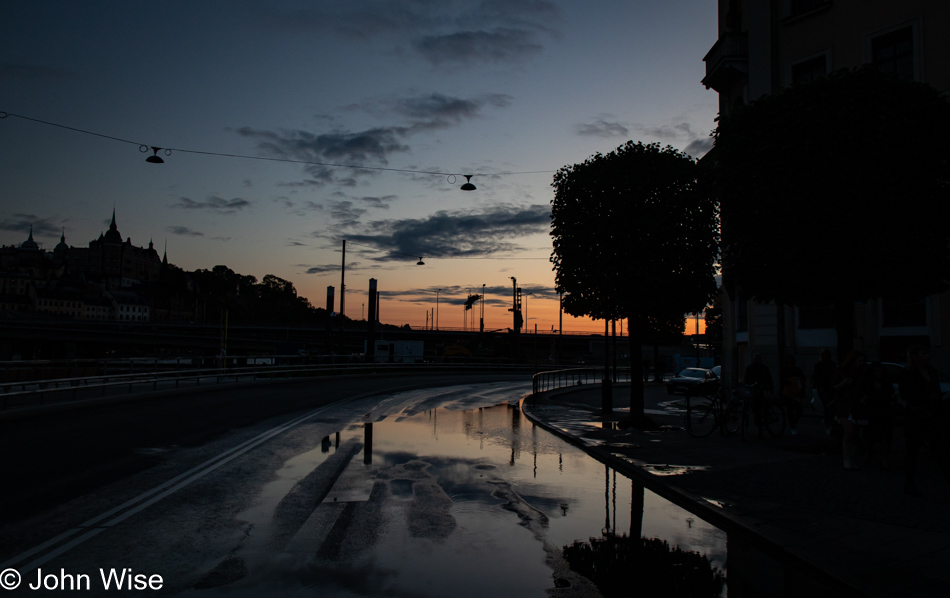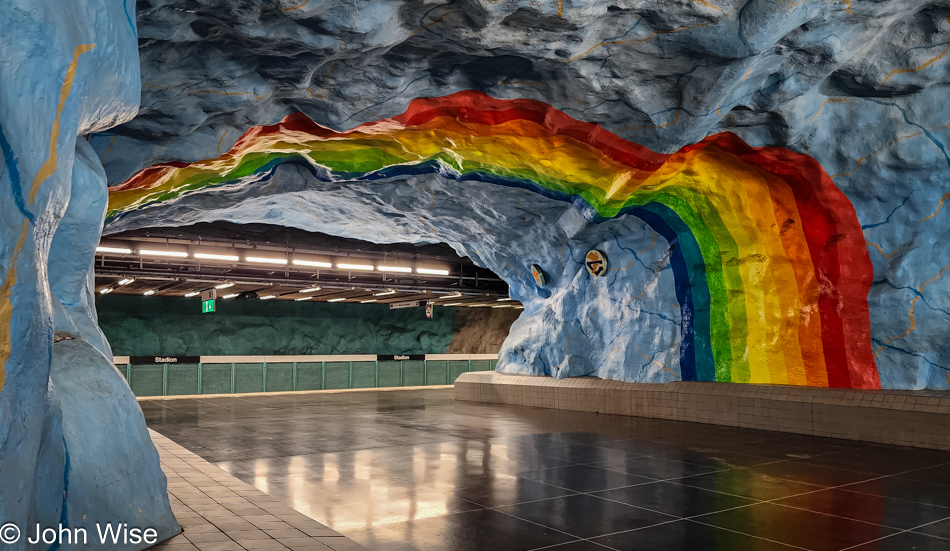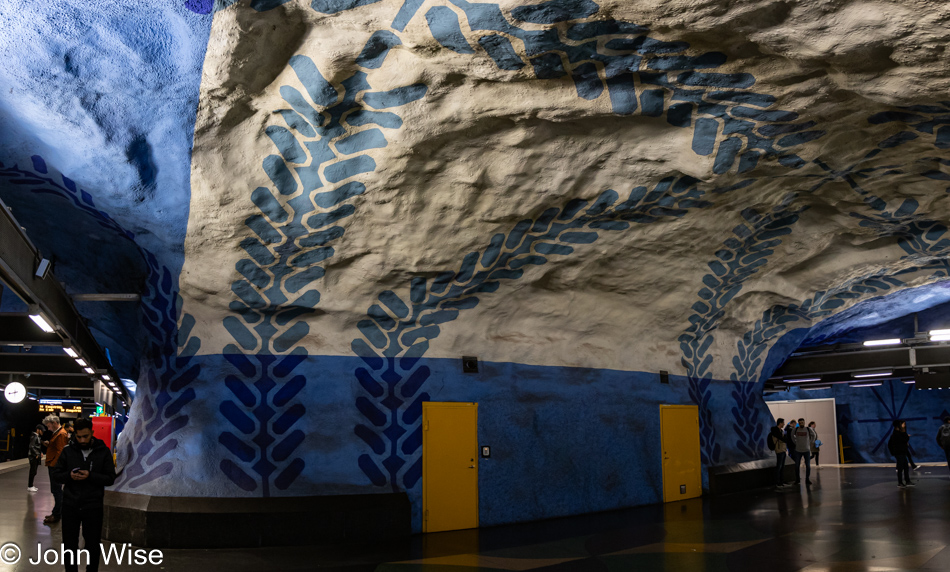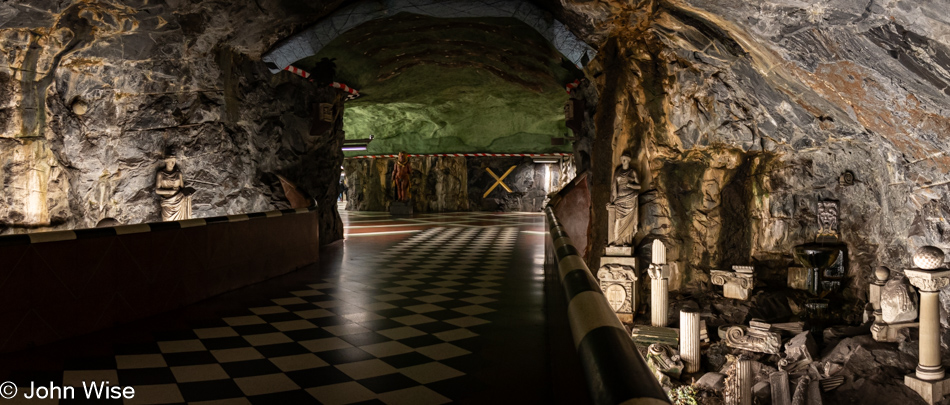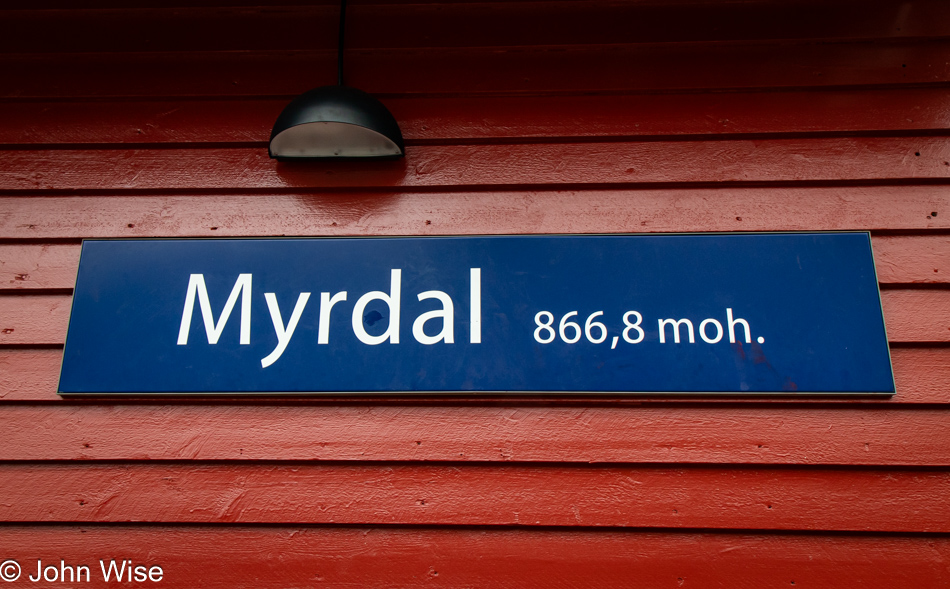
Nowhere to go from here but down. Our day began 2,843 feet below us with a great breakfast at our hotel that included all the bread, rolls, locally cured meats, cheese, fish, yogurt, granola, and, of course, beans, sausages, bacon and eggs for that part of the crowd who need what they know. The Flåmsbana that brought us out of the mountains yesterday is the same train taking us right back up, not for us to continue our journey on to Bergen as many others will be: we have a couple of bikes reserved, along with two box lunches for the trek straight back to where we just left. Later today, we will have traversed this slice of Norway with three different perspectives: train down on a sunny day, train up on a cloudy morning, and a walk/bike ride down on a day transitioning to a mix of clouds and sun. Essentially, we got it all.
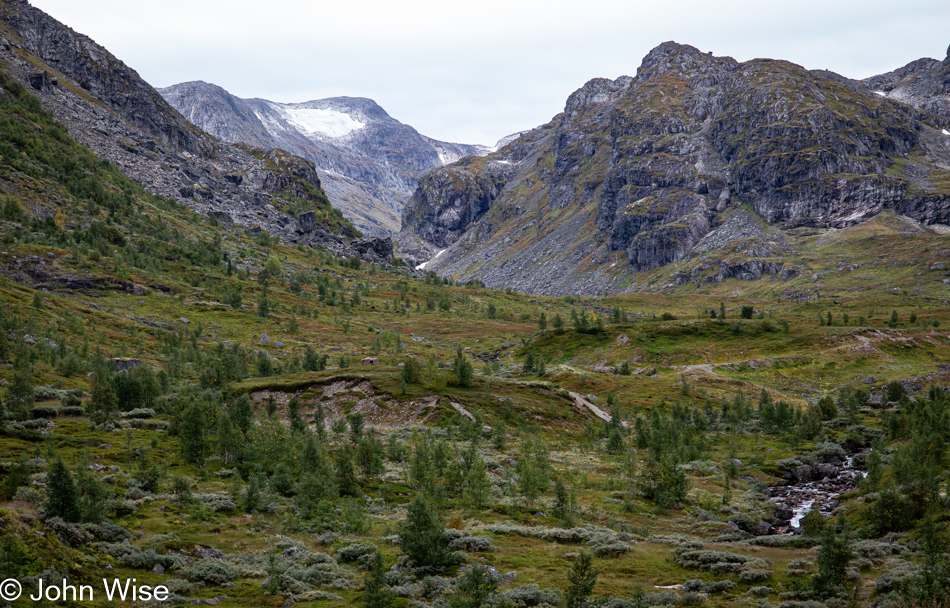
On the Flåmsbana up to Myrdal, I was a bit distracted from taking photos by our conversation with a couple from Australia. She was 75, and her husband was approaching 80. They were at the end of a five-week vacation that took them from Down Under to New York City to board a ship that would take them over the Atlantic to Greenland, a circumnavigation of Iceland, all the way up to Svalbard before traveling down the coast of Norway that was now complete. After the ride to Myrdal, they would continue by train to Oslo, where they would start their long flights home. The lady shared that she and her husband agreed that after this 5-week-long adventure, they might only have one more intense journey left in them as they were contending with the difficulties that their bodies weren’t cooperating with them and their expectations. The lesson is obvious: we never know when our ability to exert ourselves is passing and when or where we’ll encounter that moment of disappointment when the realization sets in that pushing against our limits is over.
We hadn’t quite moved 50 feet down the trail before I was already stopping in need of taking an establishing shot of nature to better demonstrate where this bike ride was beginning. You could say that we were happy with the gloomy, overcast sky because the weather forecast called for a 66% chance of rain out here today. However, other than a couple of very minor sprinkles, we did not get rain of any appreciable amount. Good thing, too, since we inadvertently had left the ponchos back at the hotel, subconsciously understanding that if they were with us, we’d have needed them.
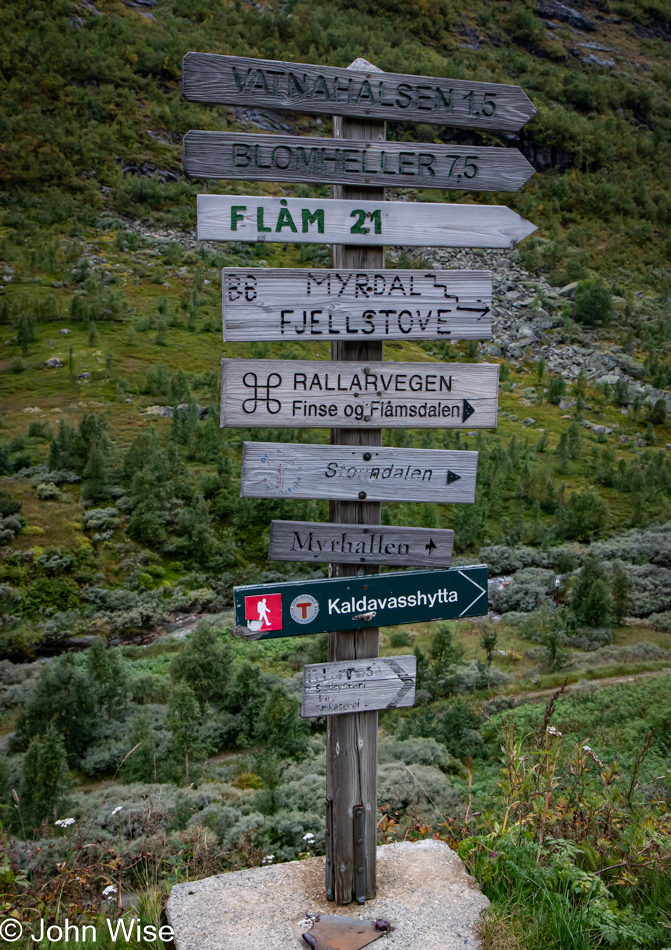
Twenty-one kilometers (13 miles) are still ahead of us, but that’s okay; we’re just starting out, and it’s still early.
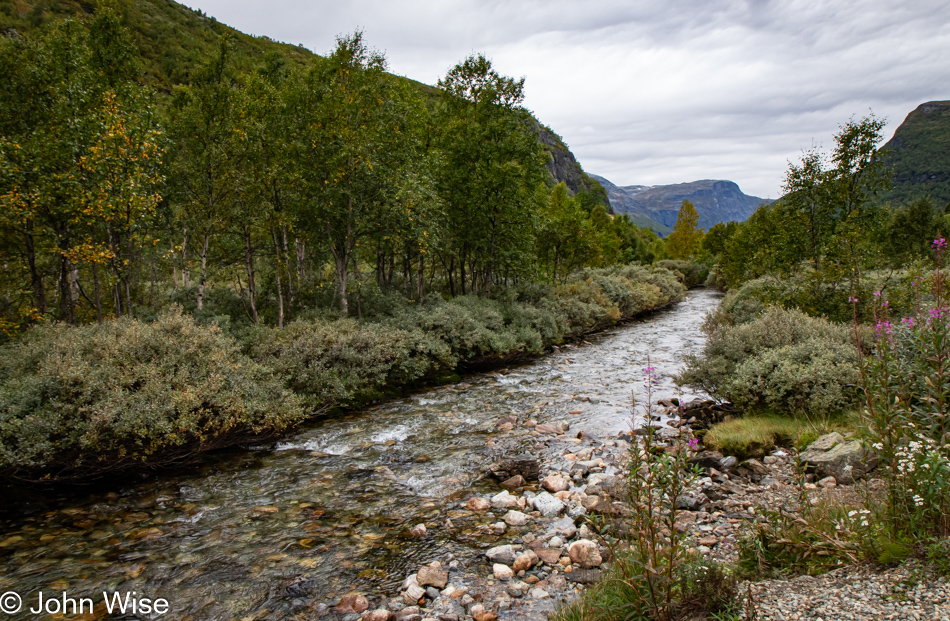
No, seriously, Caroline, we’ll get going as soon as I grab this shot because if it’s raining later and we don’t have any photos, we’ll be remiss that earlier, when we could have captured these mediocre sights, we passed them by.

I know that I said just that photo, but give me a break. You obviously didn’t see the flowers on the right and if we miss these, we could go the entire day without seeing a splash of vibrancy, considering the dullness of the sky that is working hard to ruin our attitude. As a photographer, I demand proper sun, so the vibrancy of our images always conveys that our life is perfect every day.
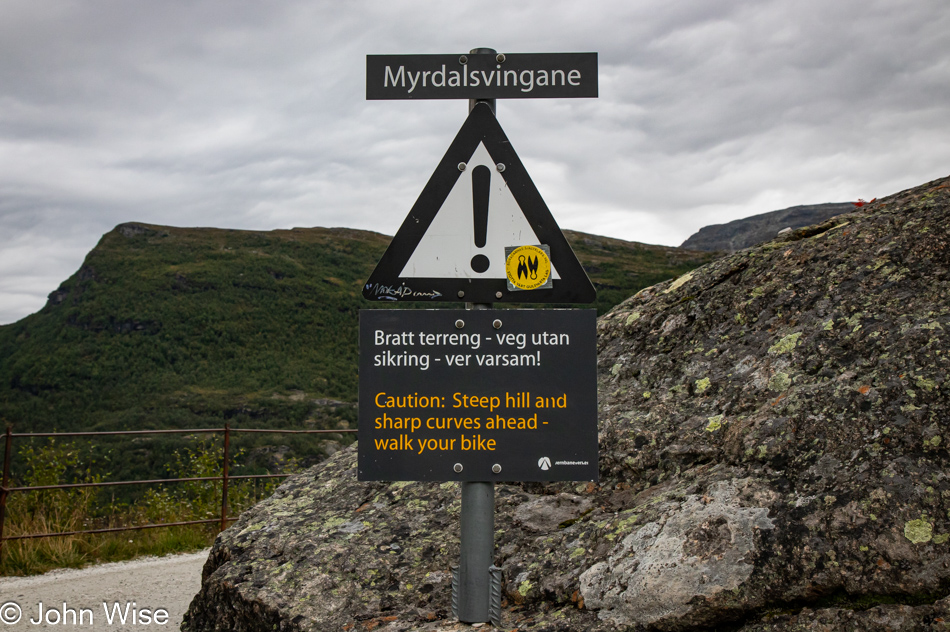
Knowing beforehand that the first part of our trail is rather steep, with hairpin turns in which a miscalculation in time and space could launch us into injury or worse, and since death at this time in our lives is the least preferred next step, we dismounted our bikes and were ready for the walk down.
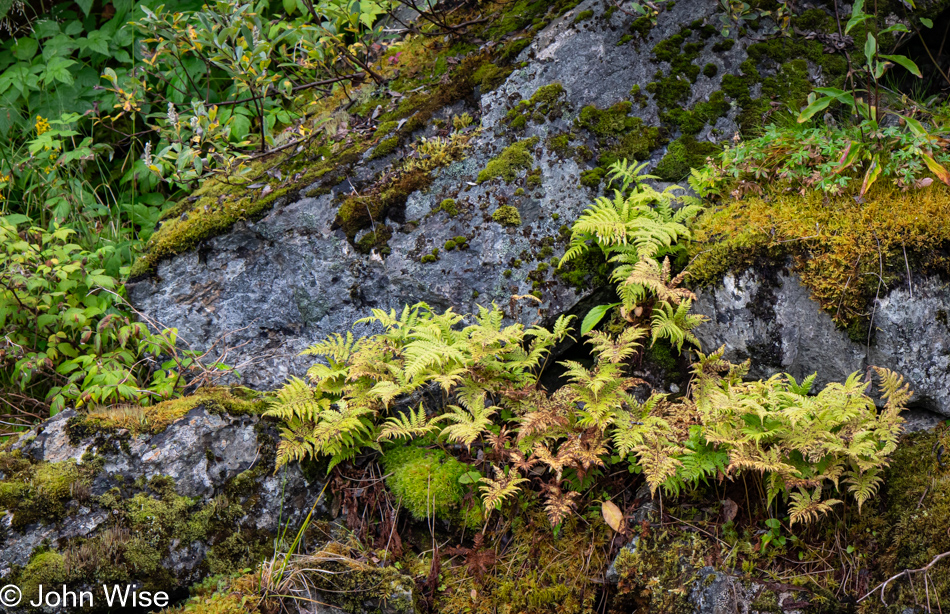
The truth is that we’d have preferred not to have rented bikes at all and that we’d be walking the entire 21 kilometers between Myrdal and Flåm, but at 5:30 p.m., we have a reservation for something we’d never want to miss. As a bike ride, this route is supposed to take about an hour, but we were well-prepared to break that record in the opposite direction, and the only question was, how long we could stretch out the time in order to arrive back in town as close to our appointment as possible.
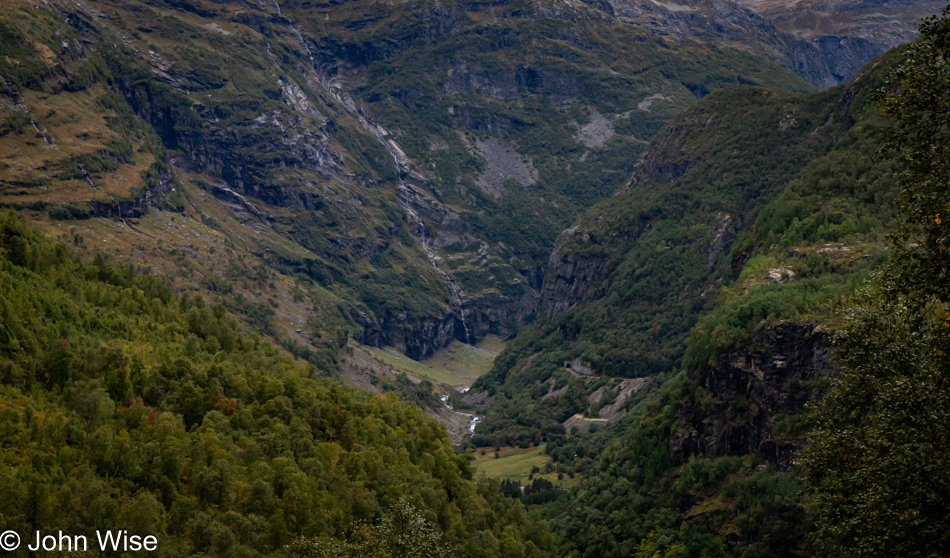
Maybe I could have taken more photos from the train yesterday when the sun and blue sky contributed so much to the landscape that finding enchantment in the journey overwhelmed the sense of trying to capture it better than I did. To lament what might be missing visually, though, would miss the point of being out here: to simply experience a long, slow moment of feeling, smelling, touching, and being in this rarified place few of us will ever travel through, especially at a pace that allows the senses to linger in the expanse and simultaneous intimacy.
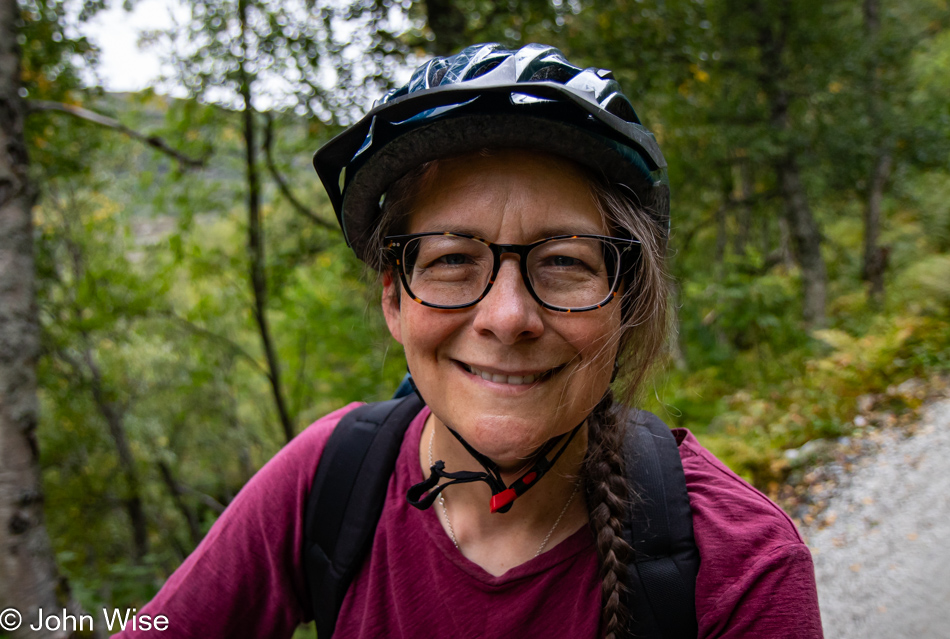
Are you happy, Caroline? “I’m infinitely happy on spectrums of that feeling that even this smile will never convey. Only someone who’s known me for 30 years or more might have an inkling of what this means to me, maybe somebody like you, John.”
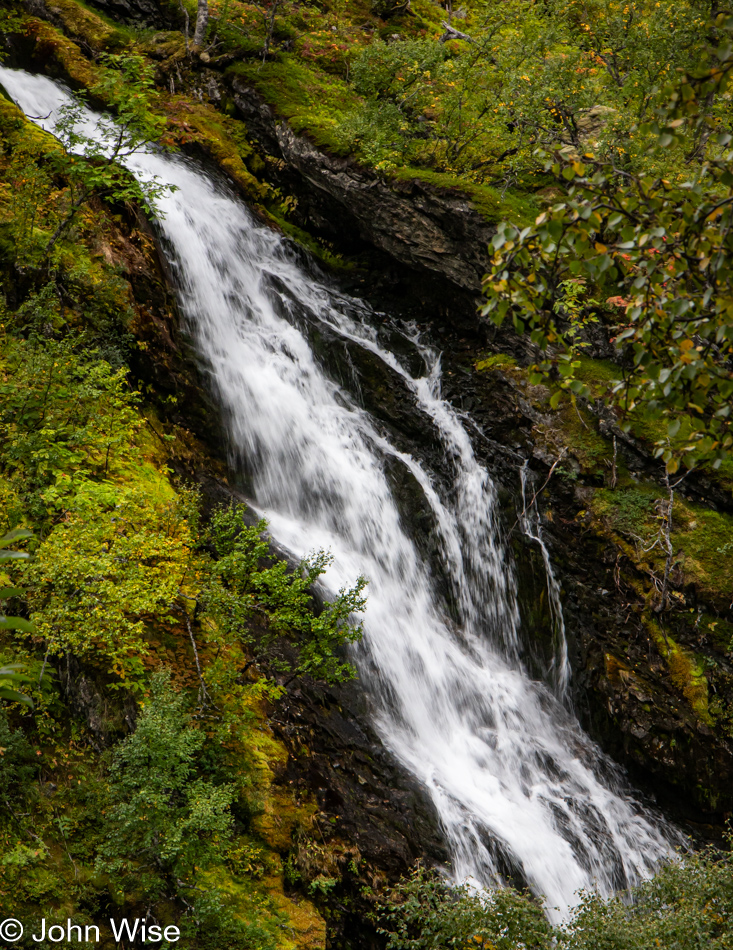
“Do you love me, John?” That sense of togetherness that draws us closer is like this waterfall, where the water molecules are inextricably linked, becoming the very definition of what this fluid is and how it flows through nature. We are that love that flows with one another through the nature of our lives as though this were the only way our existence is allowed to be present during our lifetimes.
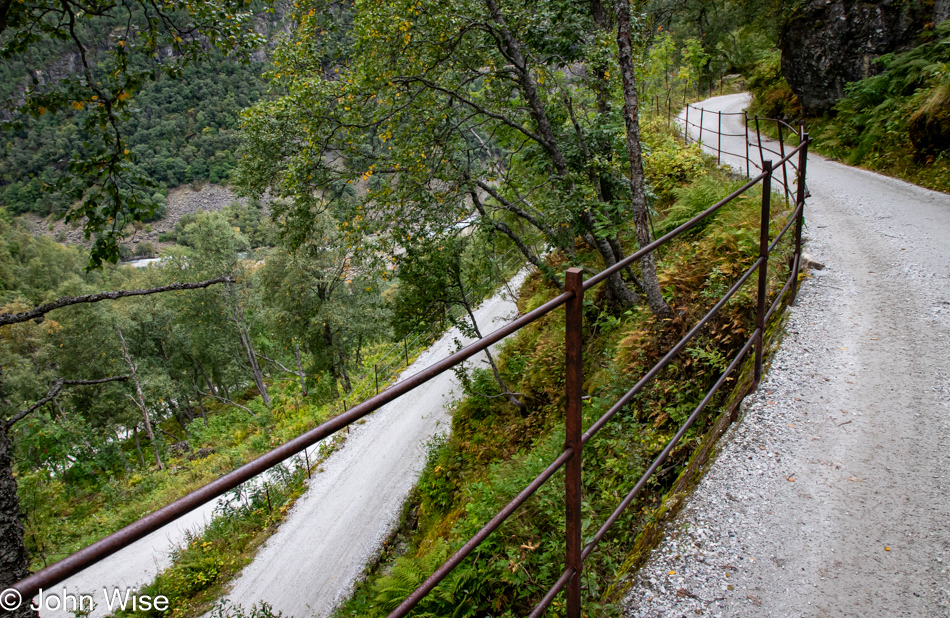
“Are you tired of letting this heavy bicycle drag us along?” The two of us had already smiled at one another countless times before we reached this point on the trail. Had we been riding along, our attention would have been focused on remaining safe instead. The concentration required to negotiate these tight curves would have deprived us of reveling in the moments where we were able to exclaim the love that powers our smiles and draws us closer to reaching out and touching the other in order to verify that all of this is real.
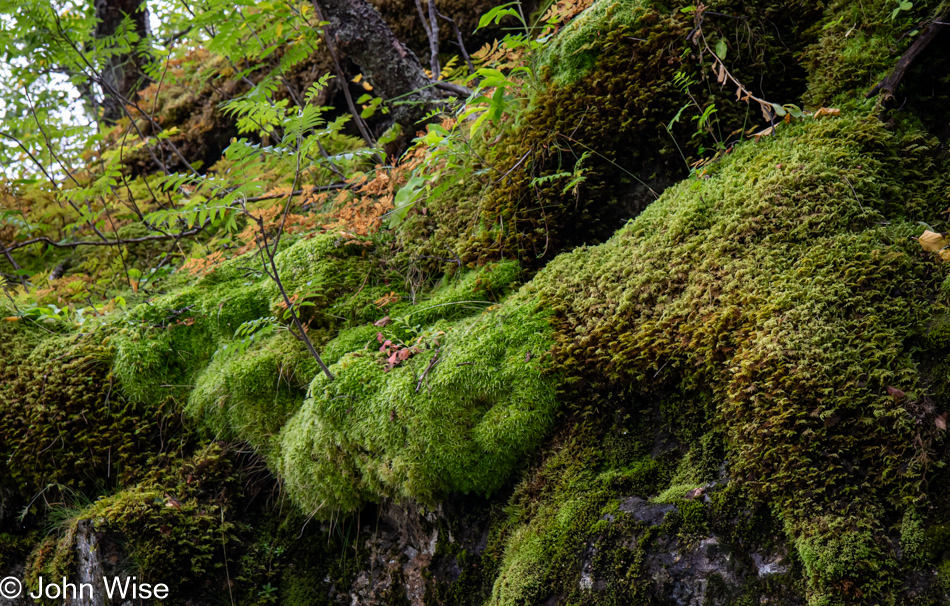
Real it is and nearly as solid, luscious, soft, and gorgeous as the moss that grows on rocks locked in the symbiotic relationship that is inescapable to these two elements next to the trail and the two people on it.
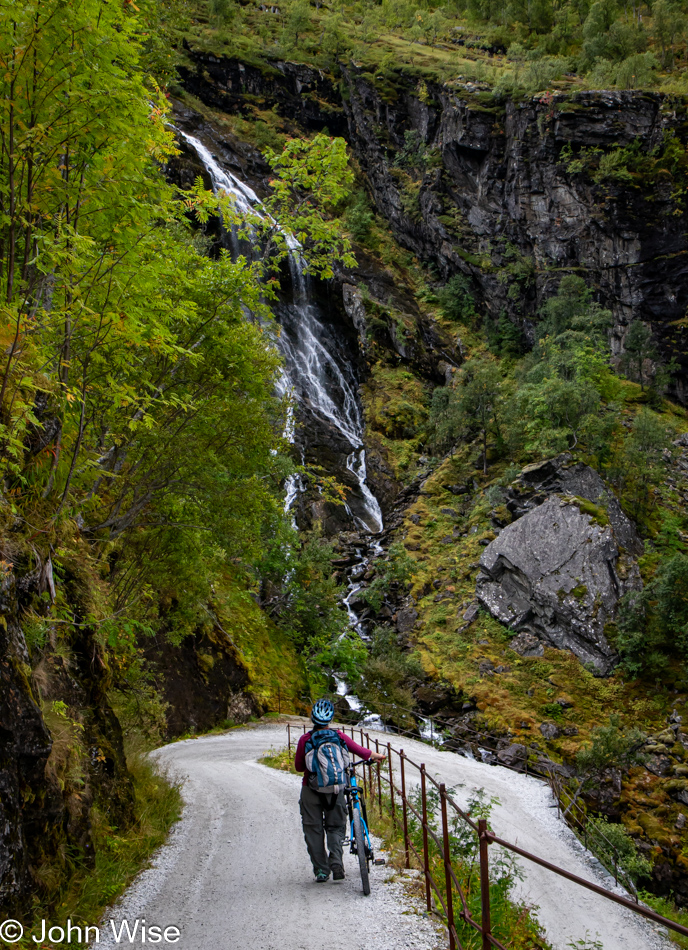
“John, let me ask you, do you think all of this might have been created for us and that the people who race past us fail to absorb the little things that create bigger things? Or do they speed through only knowing they did a thing?” Well, Caroline, we not only possess the ability to move glacially, allowing the carving of deep impressions out of our experience in places such as this, but the interpretations that we share with each other of what might have been overlooked will create a situation where we’ll understand we didn’t just do a thing but that we are creating a new universe from the one that’s been crafted for us. I have to wonder if there are others whose sensitivities demand that without intense, slow scrutiny of the world, they, too, question the reality of it all.

Are these iterations of the same thing we’ve been examining, or are our shifts in perspective granting us special observational powers to see more?

Funny how the same thing doesn’t appear the same when mere inches are added to or removed from the vantage point.
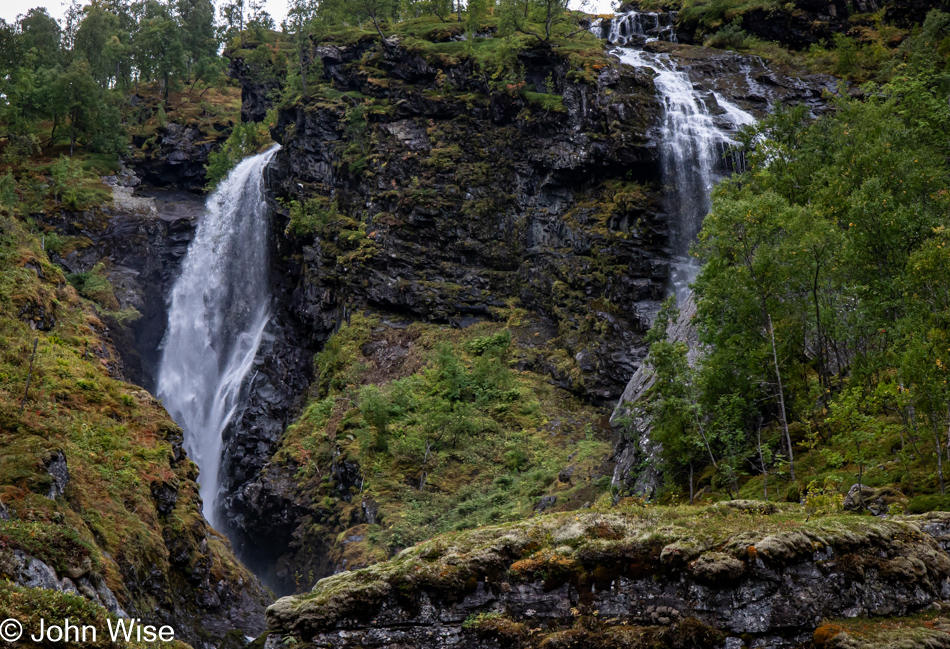
As scenic as the views are from the Flåmsbana train on its perch high up on the canyon wall and with its relative breakneck speed of about 27 km/h (17 mph), the granular details available to those who can travel by foot at a speed of barely 2 km/h (1.25 mph) open scenic views in ways unimaginable on that railed rocketship.

To paraphrase Bruce Lee: Be like water making its way through cracks…adjust to the object…and allow yourself to flow.
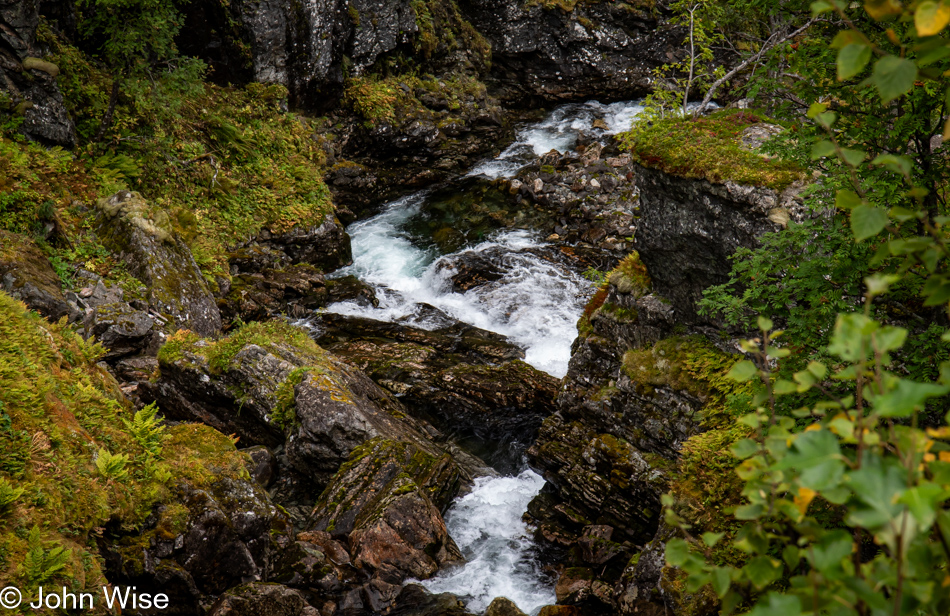
The majority of these images fail to convey what we actually saw and experienced, but they are the only visual representation I have to approximate any semblance of all of the sights. As for these words, they feel like hackneyed and trite platitudes that scramble to convey something meaningful about the intensity of our experiences but mostly fall short. I am left to feel like a charlatan drowning in imposter syndrome, but I don’t know what else to do or say that will illuminate our memories should they grow weak.

Not only did we eat these wild raspberries, but we also ate all the other ripe ones we could find, and let me tell you, there were many. They were obviously all for us since nobody else stopped. I don’t even believe the other cyclists could have seen these little red treasures of good fortune as they flew by in a blur. Yummy trail delicacies picked by the person who loves you can only be enhanced by them delicately placing one between your lips while laughing at those on bikes who don’t even have the curiosity to ask what we are doing.

Ah, now I better understand the relationship between the train and what we are witnessing. They are way over there, and we are all the way over here where all the really amazing stuff is. If the passengers only knew what they were missing for the sake of convenience.
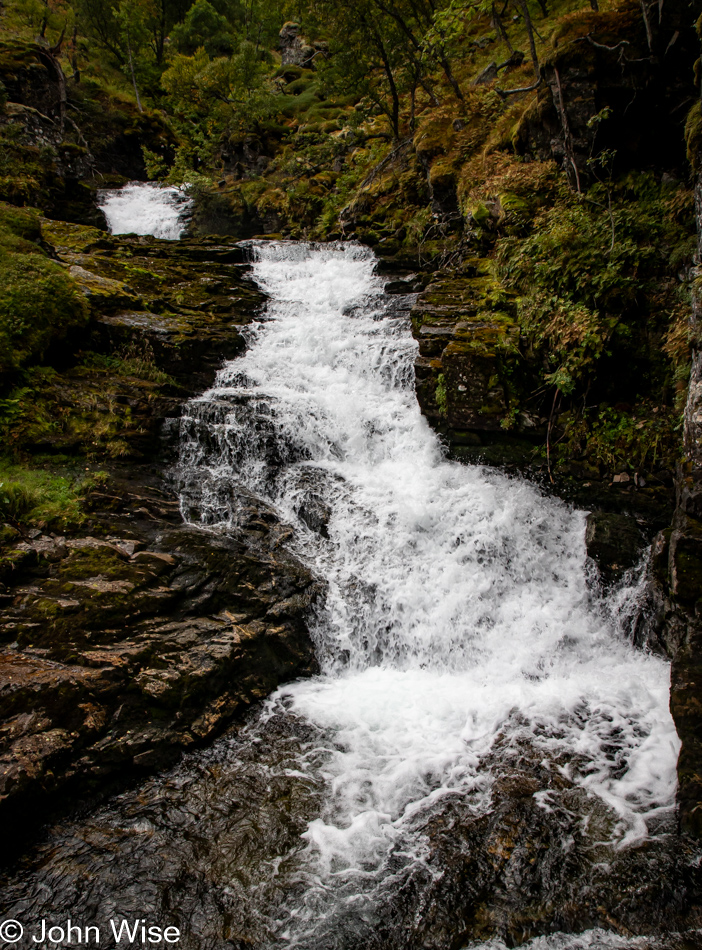
Wait a second, are we going in the wrong direction? Haven’t we already passed this cascade?
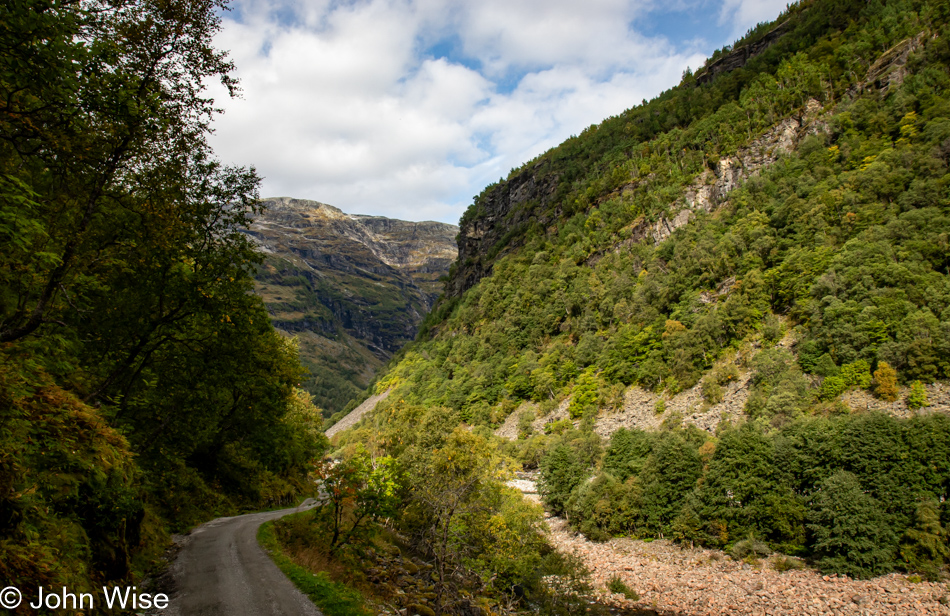
That’s right; your eyes are not deceiving you. We will be eating raspberries under the sun next to cascades, waterfalls, and streams while wildflowers sing and dance for the trolls hidden in places we cannot find. This is Norway, after all.

Listen to their song as they perform for the Huldra, too.

It might be difficult to make out, but this is a village for trolls camouflaged as a bunch of mossy rocks; I know this to be fact, as a forest spirit told me so.
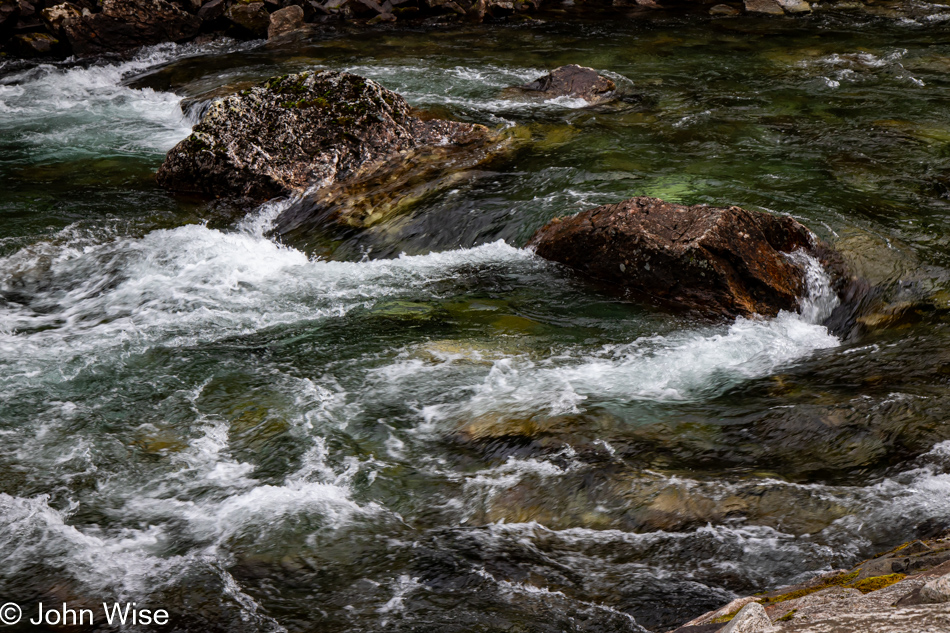
Whoa, this is a first in the history of Earth! NOBODY has previously witnessed this exact configuration of water flowing around these rocks, but we were here and saw it with our own eyes, even capturing the moment of uniqueness to share with others.
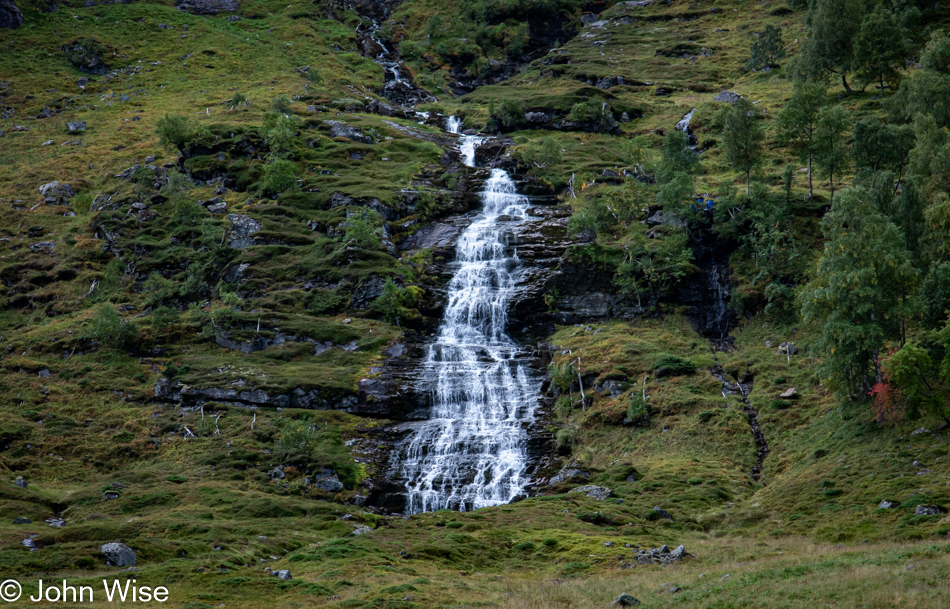
We are no longer walking the bikes as we are well past the switchbacks of death but are stopping frequently because taking photos while riding bumpy gravel paths doesn’t work out very well.
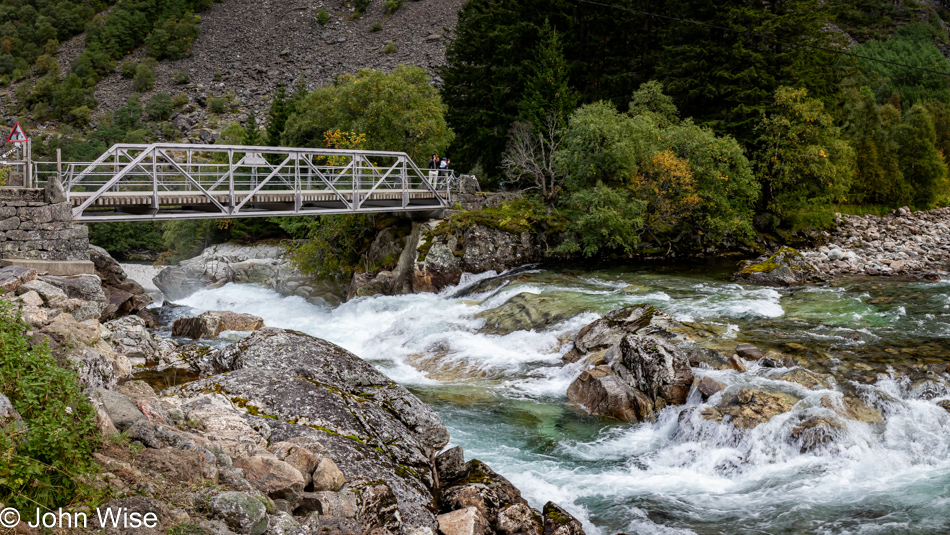
I hope that sharing so many images of this small section of the Rallarvegen would convince you that something like this would be strenuous and outside your comfort zone, so if we should ever be so lucky to visit again, we would be out here by ourselves once again, able to eat all the raspberries and listen to the rushing water all by our lonesomes.
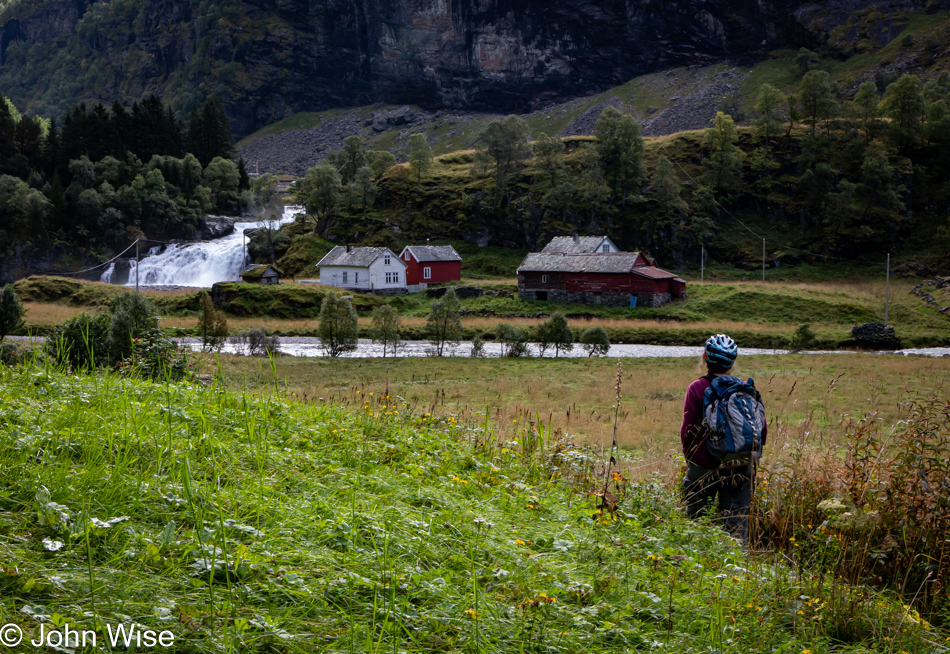
Caroline asked me to inform you that she is not taking a pee; she’s a woman, after all, and must squat. So what is she doing over there? My wife sometimes gets these weird ideas that there’s this perfect spot to get the optimal view of something that essentially looks the same from my perspective 10 feet away. I should admit that there are times when I get these really cute shots of her rear end (ihr Po) due to this arrangement, but I don’t share them here, they are only posted on her OnlyFans site she doesn’t know about.
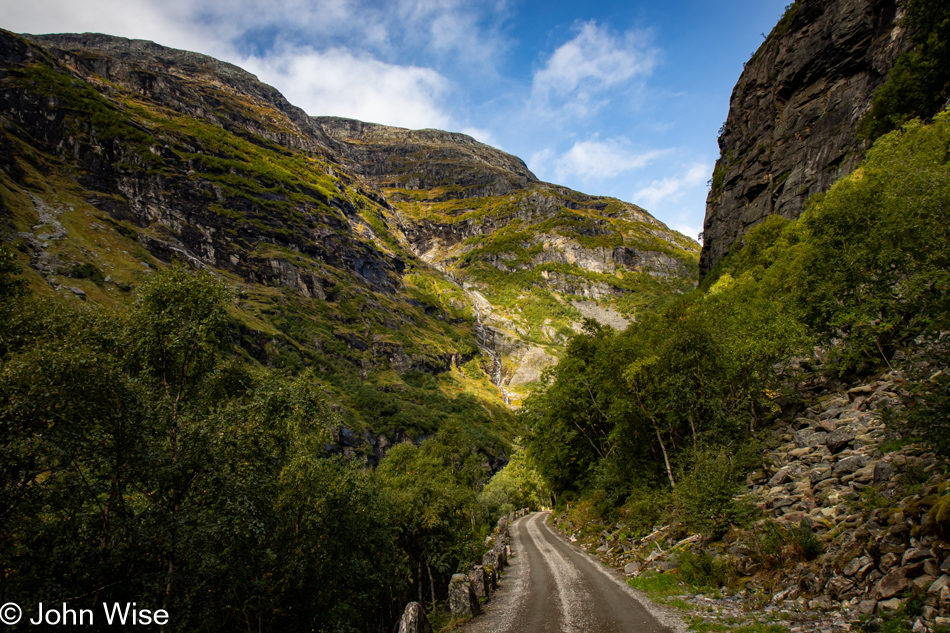
I often hear from people seeing the photos that accompany these writings that they are surprised by how nice they look, meaning that they are picking up something or other from what inspired me at the time to capture the scene. They arrive at our photos from a perspective of unfamiliarity with what I’m sharing with them, so they don’t pick up on the emotional context, sense of friendship, love, and sharing that Caroline and I felt when these memories were made. After picking the photos that speak best to what lingers in our mind’s eye, I embark on an attempt to write something that will offer the reader a sense of what we experienced by moving through such a journey of impressions.
And then there’s the phenomenon that these specific images when viewed on a future blog visit, will replay something from deep within our heads in a nearly pixel-perfect reflection of our most distant memories. Glancing at an old photo, we feel a familiarity with the particular light, color, warmth, and framing that is missing in other images of the same scenery that we didn’t capture, meaning if I see images of the exact location, they do not speak to me as much as my own. Combine those visual perceptions with what I try to find in writing, and you might start to understand my wish is to create a kind of multi-sensorial capsule that adds some small amount of context from the time when we were making these experiences so we can relive our greatest hits again and again.

We’ve christened this the Tunnel of Love because we kissed in a dark corner, out of view of the crowds trying to witness our affection.
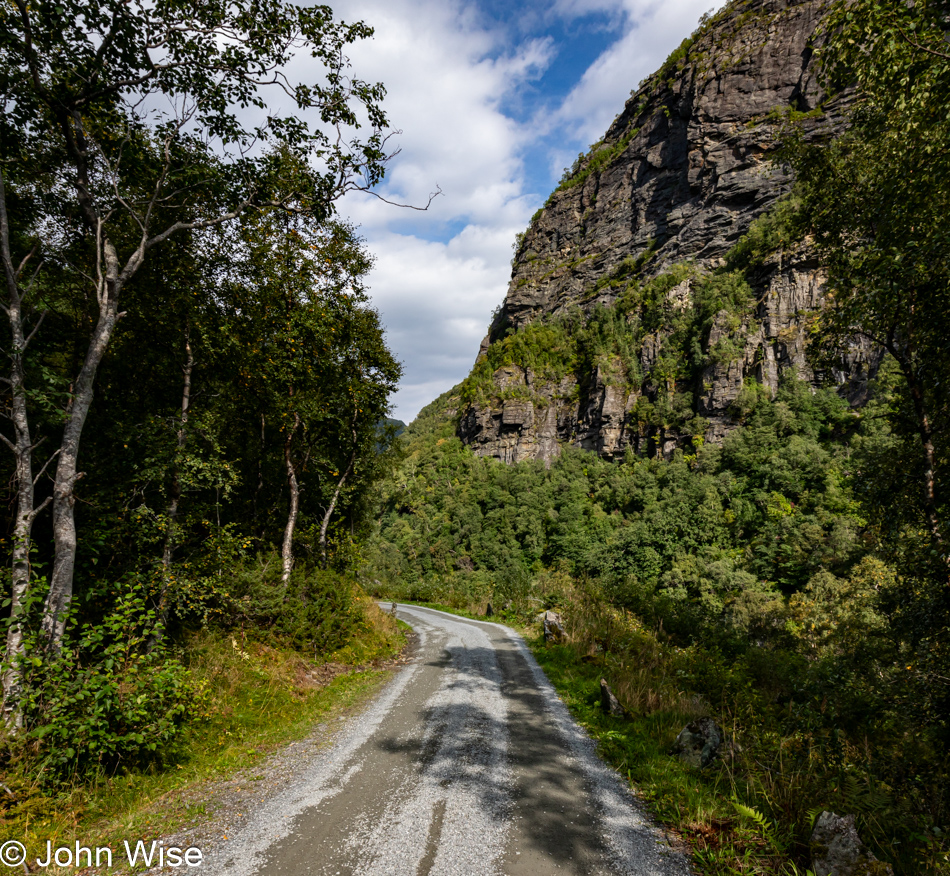
What has anything you’ve ever seen meant to you? Was it so meaningful that you never wanted to part with the memory? I write about rocks, trees, water, birds, insects, fish, animals, people, my wife, the sky, trails, oceans, food, music, thoughts, caves, snow, Europe, America, idiots, inspirations, and random moments, because it seems to be that life, in general, is meaningful. To those of you buying homes, amazing cars, big TVs, having children, and going on once-in-a-lifetime vacations, how is it that you don’t have even an hour, a week, or a month to share your success story with the world to inspire others? Instagram and TikTok are not avenues for stories that include the soul of feelings, though there are some funny clips and inspirational images.
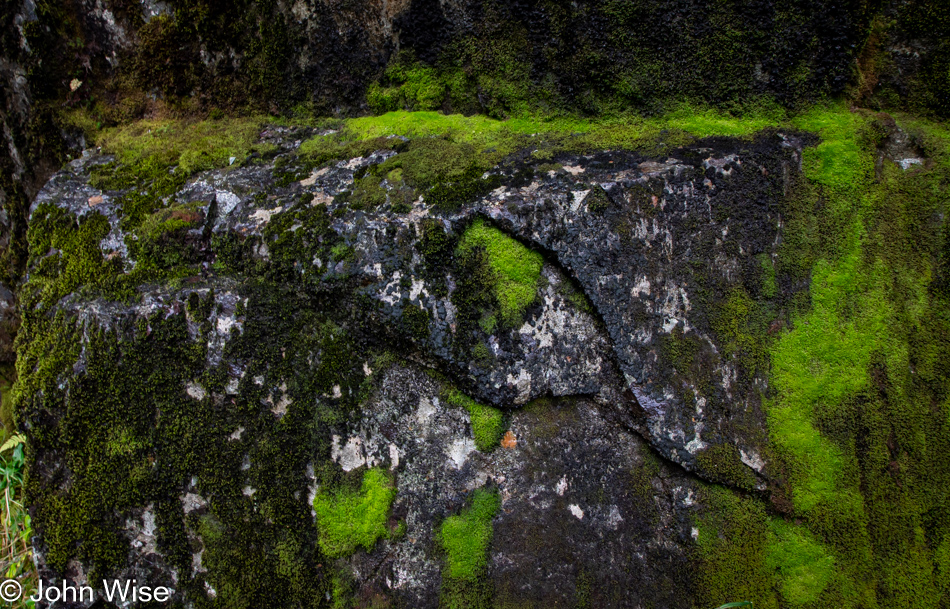
But who am I to talk? I’m like this moss here: my thoughts take a long time to accumulate; you’ll have to look at it a long time and study it if are to see and understand everything that’s going on here and who in their right mind would consider moss and granite to be a sexy thing one could be quickly influenced by? I thus fail as an influencer on so many levels. I’m not handsome (except to Caroline), I’m not built of the right proportions, meaning I’m obese (including in the eyes of Caroline), I wear none of the accouterments of cool such as piercings, gauges, tattoos, sunglasses, fashionable hair or clothes, on-brand sports gear, hats with the proper loyalty advert, or drive a car anyone would envy. I’m like the rhizoids that anchor moss to the earth, but instead of providing water and minerals to the leaves and stems, I’m providing a record of the connections that anchored people to their imaginations and gave them reasons to venture further in their journey.
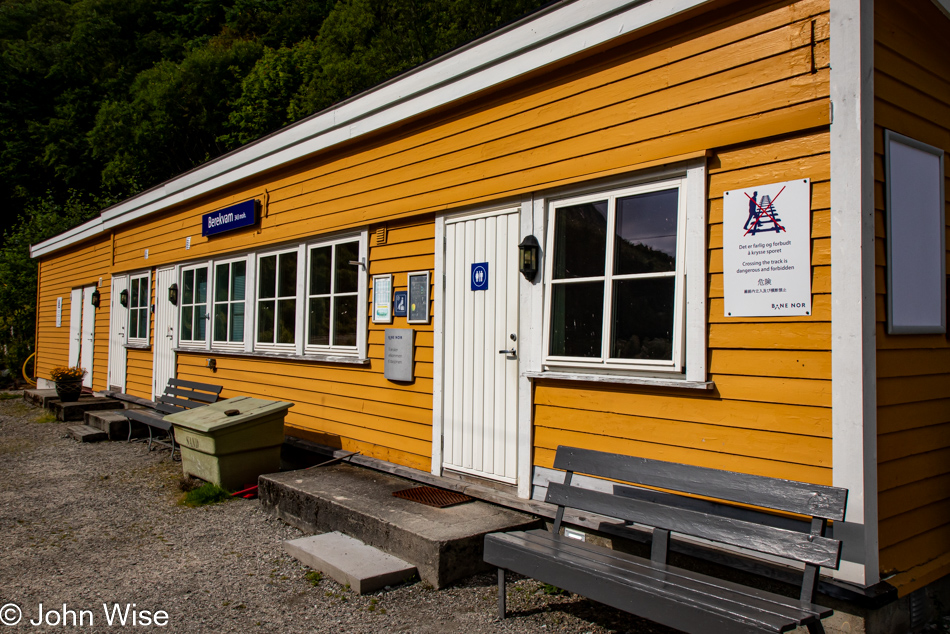
Time for a break from this long journey out of the mountains, through the forest, and down to the sea. We are stopping at Berekvam Station on the Flåmsbana rail line to sit down and have lunch.

A few days ago, while in Oslo, I shared a photo of a sign for the Freia Company and hinted that the company would play a part in our vacation; this is it. Those red, yellow, and green packages that read, “Kvikk Lunsj” are KitKat-like, only better, treats that would have been the sunshine of our day had the actual sun not come out to brighten these lands. By capturing this photographic still life at the picnic table next to the rail stop while riding down a mountain to a fjord, I captured a moment that helps define our day. While this image alone could easily bring parts of the journey back, I’m still happy that there are 3,165 other posts and thousands of photos before this one that exist, leaving the two primary readers of this blog smiling at our big adventures that also include simple things.
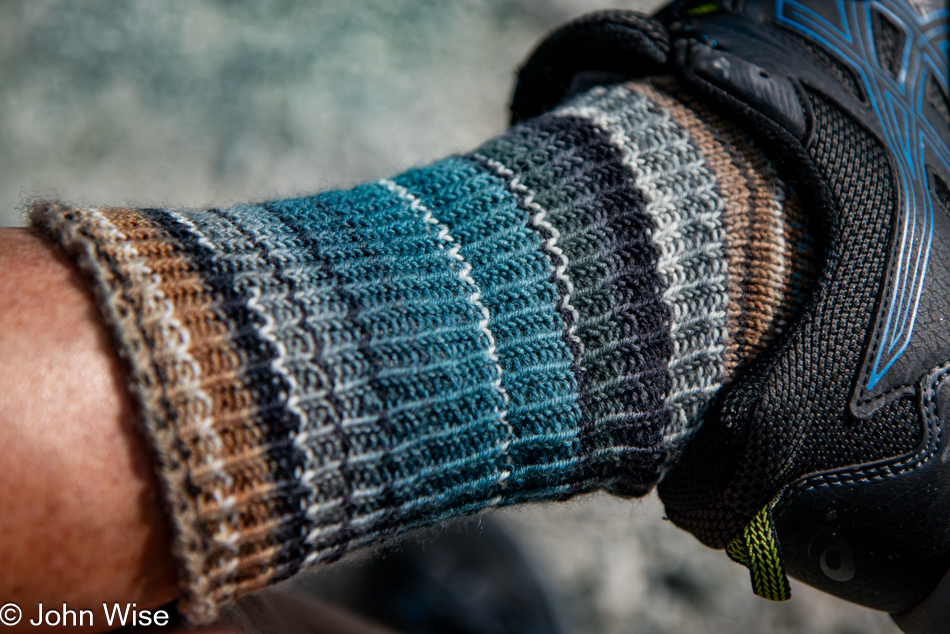
Speaking of things that exist and come into existence, this is the first day I’m wearing my newest pair of handmade socks. The yarn likely was purchased in Oregon, to the best of Caroline’s recollection. I shared a photo a week ago while we were on the train from Lund to Gothenburg, Sweden, that shows her working on this very pair, just finishing the heel, and it was well on its way to joining the other couple of dozen of Love Socks that have been knitted exclusively for me.
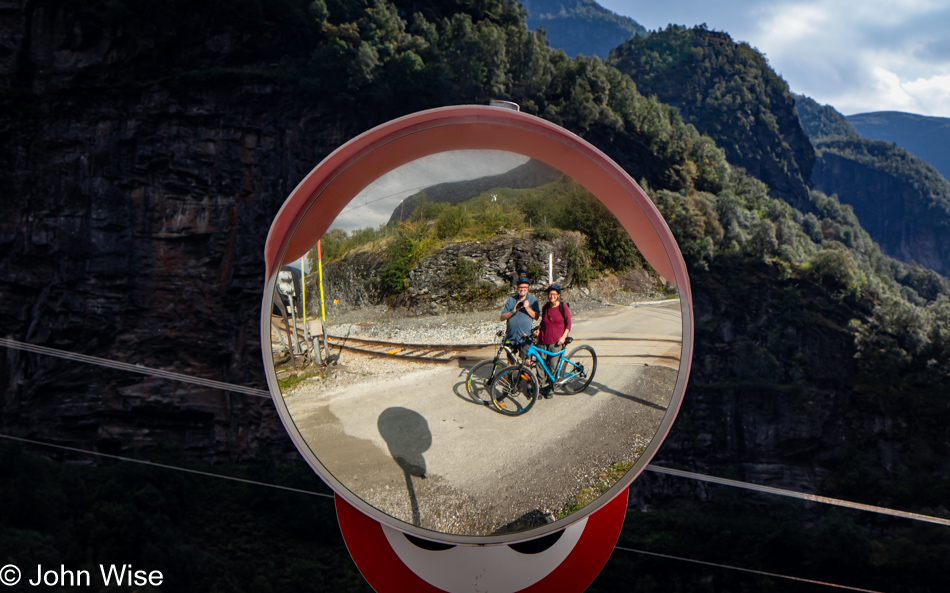
It’s not every day we get to take a selfie at a rail crossing with bikes, but when we do take such a photo, it’s only ever been in Norway.
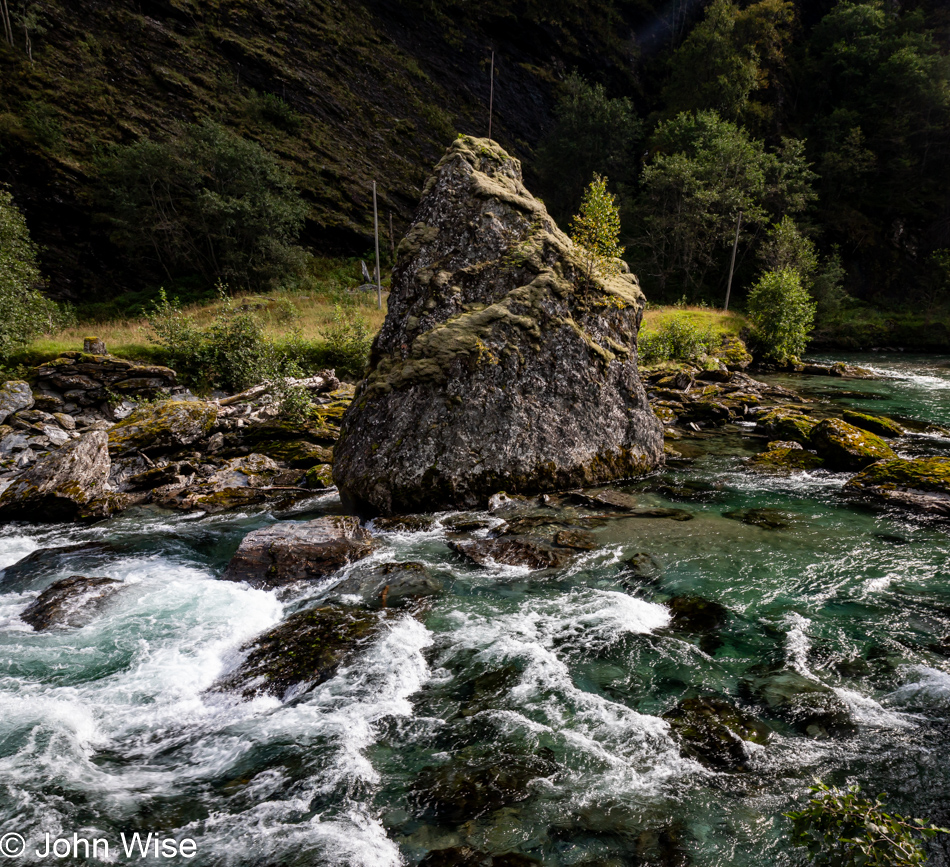
How long has this monolith stood in the flow of the river? How much bigger was it a couple of thousand years ago when people were wandering through the area? While out here, we’ve not seen a sign of wildlife, nor was anyone fishing these waters, but knowing that agriculture came later to Norway, starting at the bottom of the country and traveling north over centuries, the hunter-gatherers in this area obviously had to be to sustain themselves but on what? Is the area depleted of those resources? Had only someone been keeping a blog back in 15 A.D., we might have answers. Heck, what’s wrong with the current residents not offering us a detailed overview of the flora and fauna and how it’s evolving?

Hello Ms. Goat, resting by the trail, might you have some tasty children for us to sample? If you think I’m making some oblique reference to a Norwegian folk tale, you’d be wrong, as little did I know when taking this photo that in less than two hours, Caroline and I would be chomping on a kid.
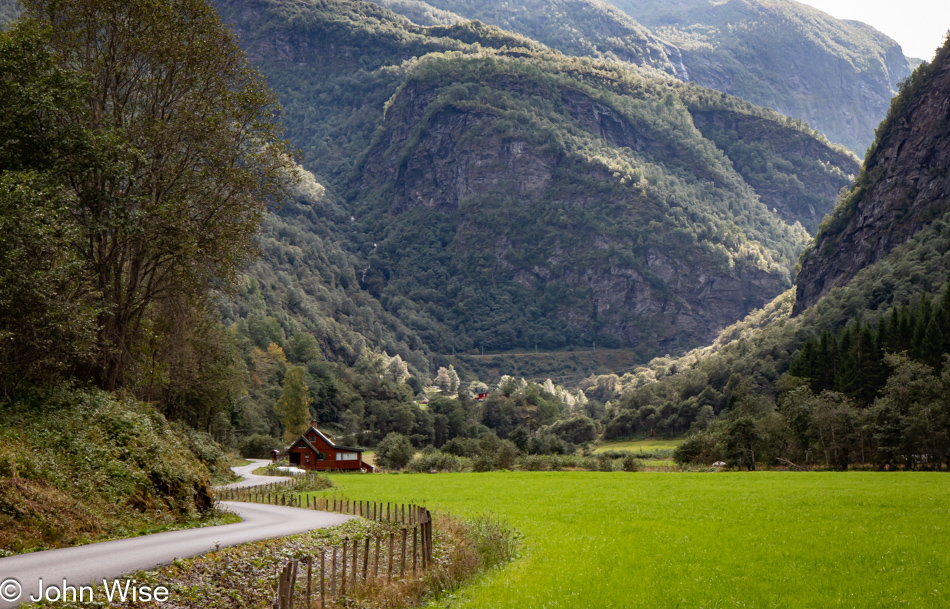
Upon arriving in the Flåmsdalen Valley, the Aurlandsfjord might already be within sight if we were drones flying down from Myrdal, but being humans utilizing bicycles to propel us, we’ll just have to wait to see the fjord. Plus, we are not in a hurry for this awesome long walk/ride to come to an end.
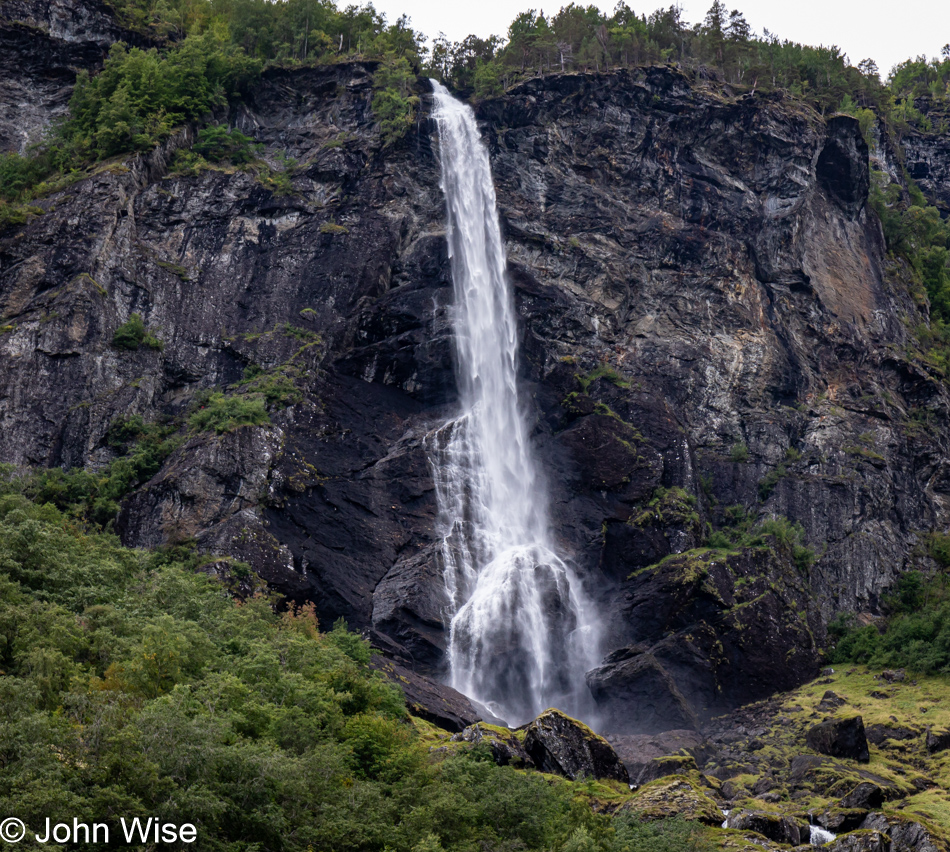
This is the Rjoandefossen (Rjoande Waterfall), which I believe is the second closest waterfall to the village of Flåm, about 5 kilometers (3 miles) away. For a sense of scale, this section of the waterfall is 140 meters (460 feet) tall. The closest waterfall is the Brekkefossen only 2.5 kilometers (1.5 miles) away.
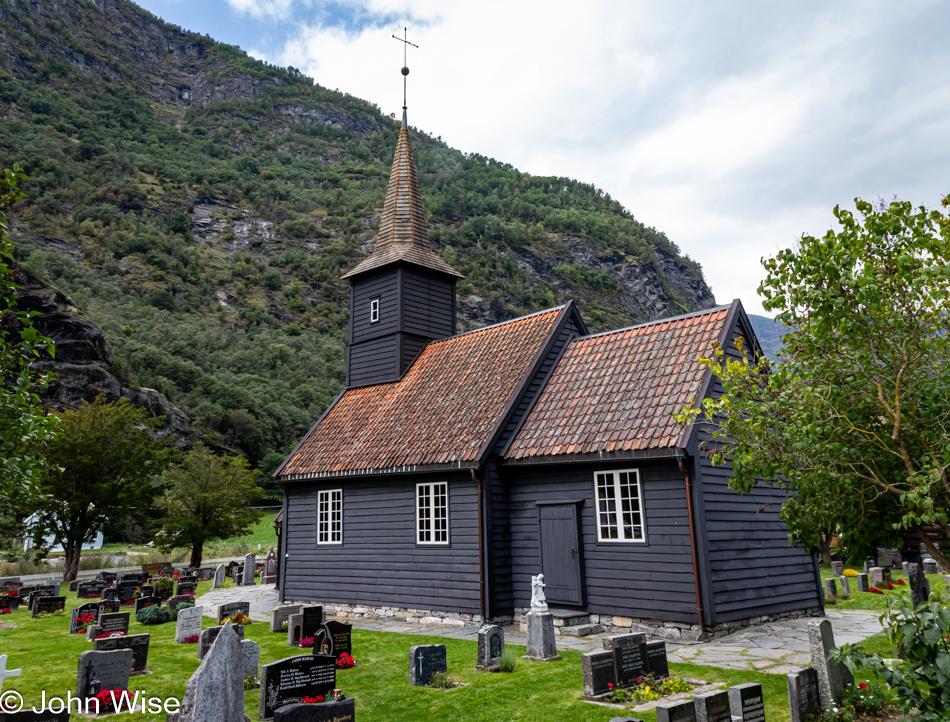
Flåm Kyrka closed today for a funeral. At one time, there was a stave church here, but by 1670, it was long gone, replaced by this church.

What will we do now that we’ve missed visiting the interior of this historic church during what was likely a once-in-a-lifetime opportunity?
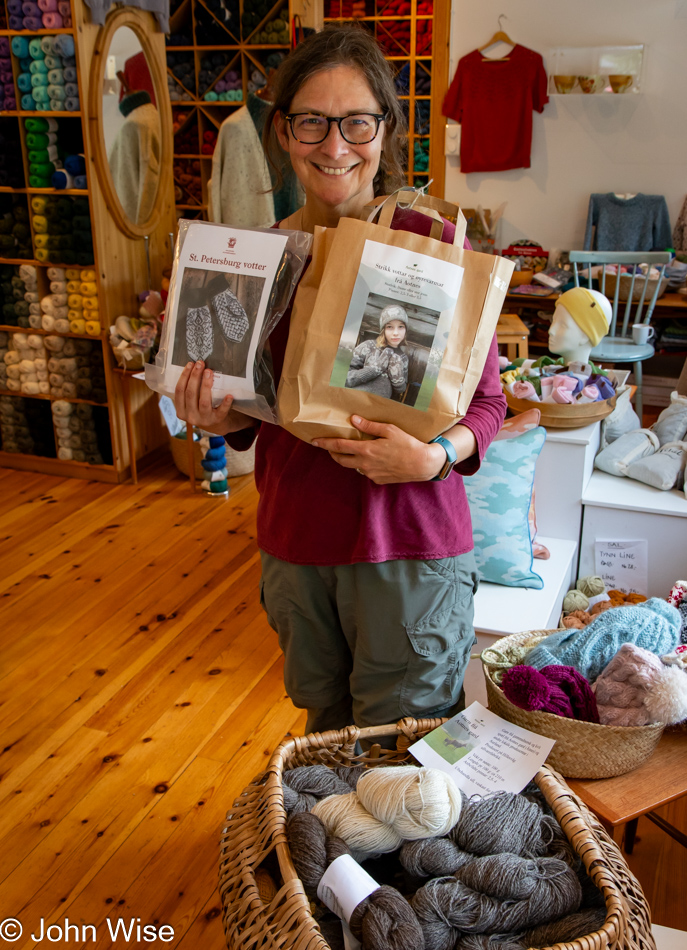
The answer is yarn shopping, of course. Caroline thought this was a gift shop. I don’t know how she missed that on the sign by the door that it is a yarn store, but I caught it. Not in 152 years would we have guessed it were possible that something like this could exist in a village of 350 but here it is, Huldra Husflid og Kunsthandverk. It might as well have been the work of the Huldra (Forest Spirit) that materialized this little miracle here as gratitude for the people who tried to take time to understand, contemplate, and feel the environment we traveled through today. The yarn in the bags were kits that included wool, as seen in front of Caroline, that comes from Otternes Farm, which we visited yesterday. Life is magic.

For only $18 a burger, you, too, can eat a kid, as we did. Of course, we shared one because spending a gazillion dollars on local yarn limited our pleasure budget. Not only that, but the next big adventure pre-drained the bank account upon making the reservation.
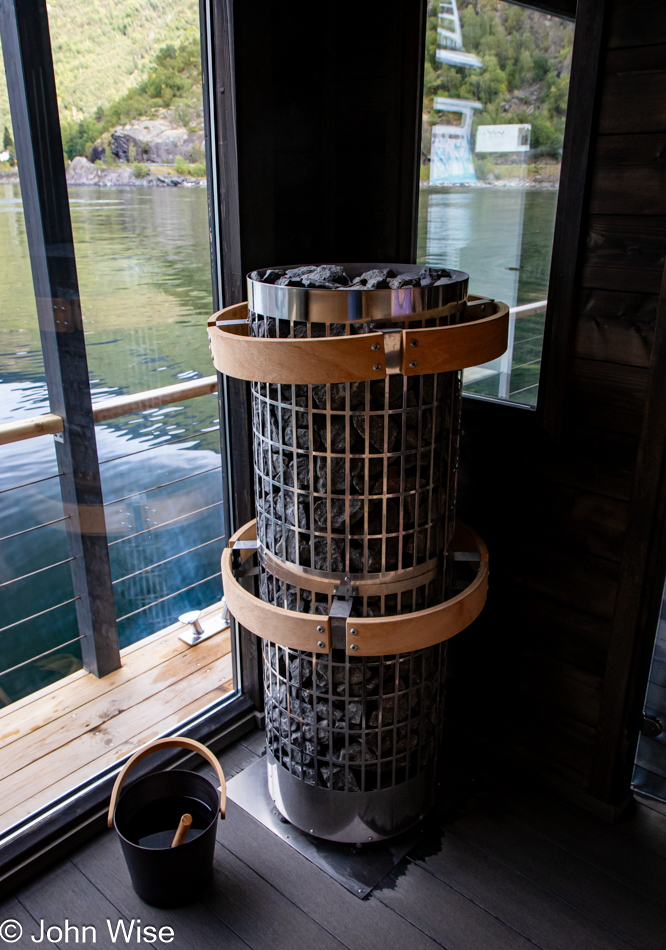
After a coffee at the hotel, we mosied on over to the right side of the fjord, where a couple of floating saunas are moored. I had meant this to be a big surprise for Caroline, but I couldn’t help but share that I’d made the reservation while we were still in Arizona because I was just too excited to sit on that. Regarding my comment about the bank account, I opted for the private sauna session so we wouldn’t embarrass ourselves with our total lack of knowledge about sauna etiquette; we are shy that way. Should one be interested in a shared sauna experience, it’s only about $35 for a 90-minute session. For the Fjordsauna to be yours alone, that will cost you about $240, but how many opportunities does one have to sauna at sunset on a fjord in a UNESCO World Heritage Site?
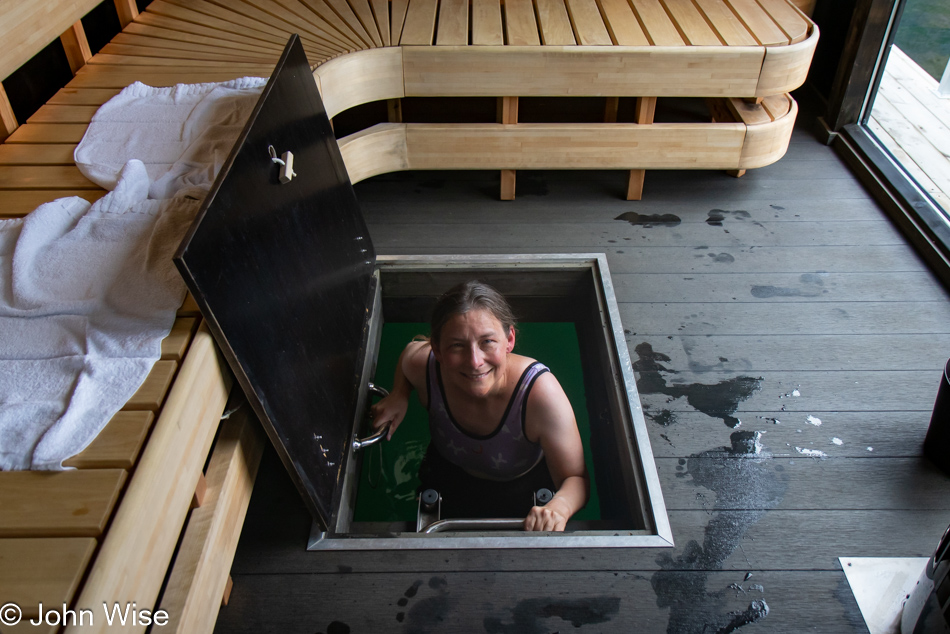
There’s a trapdoor and ladder that allows us to quickly dip into the fjord to cool off from the 70 Celsius (158 Fahrenheit) steamy eucalyptus-scented air in which we are sweating. I can’t explain just how, but this experience on the fjord is impressively different from our first sauna encounter in Oslo, and the whole thing is a dramatically better moment in the heat that kills our desert temperatures in Arizona. This method of familiarizing yourself with the 13 Celsius (55 Fahrenheit) temperature of the fjord in privacy is dignified because there were no witnesses to my whining about the ice water I was dipping into. Of course, this wasn’t an issue for my tough wife, who womaned up and just got in.

After our sauna in Oslo that was only 50 Celsius (122 Fahrenheit), I thought we’d be lucky to enjoy 30 minutes of saunaing, but after cooling off so quickly in the fjord, stepping back into the steam treatment was a pleasure. Caroline did not have to swim out from the trapdoor; we had a deck from which we could jump off or use a ladder to step in gingerly. Caroline opted for the latter, but she at least had the guts to swim out. My reaction to the cold was too debilitating for me to trust, letting go of a hold in case I should pass out or lock up in a shiver of panic. Not only did she take a couple of swims, but she had to effectively pose for me until I got the perfect photo.
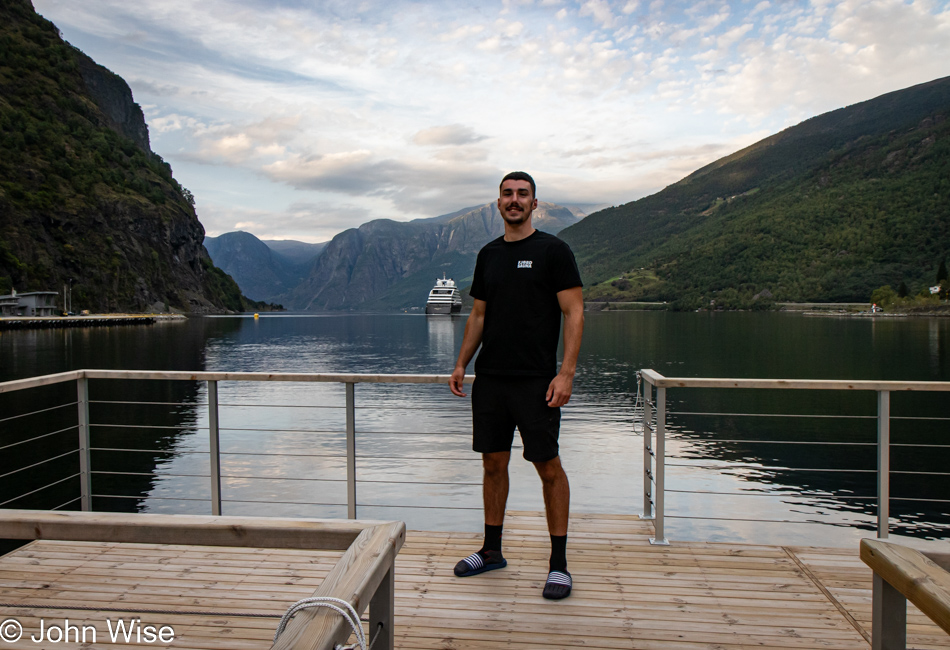
Meet Sauna Master Lukáš, the person who offered the instruction and encouragement that ensured that our 90 minutes in the sauna were nothing short of perfect. His coordination to deliver perfect conditions on the fjord, free of rain and wind, with just the right amount of blue skies filled with dramatic clouds, allowed us to find enchantment in the Norwegian sunset, the alignment of the stars. We are full of appreciation for this incredibly friendly guy who, with an excellent sense of hospitality, gave two strangers a world-class experience that will forever live in their hearts. Yep, it was Slovakian Sauna Master Lukáš Hajas who made dreams come true on this day, a giant among Sauna Masters. Thanks, Lukáš for being a mensch.
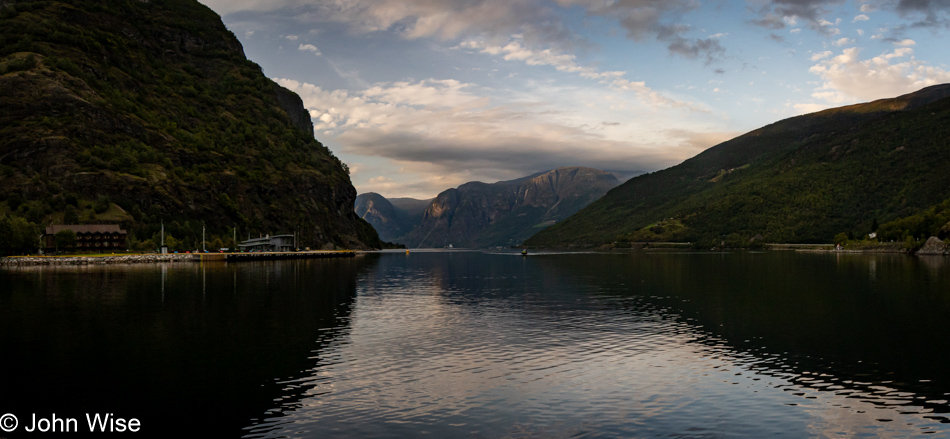
All of a sudden, the expense of the day became a bargain as the rarity of such an experience wasn’t lost on us. I don’t believe there was a thing I’d change to enhance a single second we experienced on this Thursday, but then again, the day wasn’t over yet. I nearly forgot to mention that Lukáš added emphasis on our good luck because back in July, visitors were being inundated by rain for 28 days in a row, which put a damper on summer activities. Yay, let’s celebrate beautiful skies, as not everyone gets them.
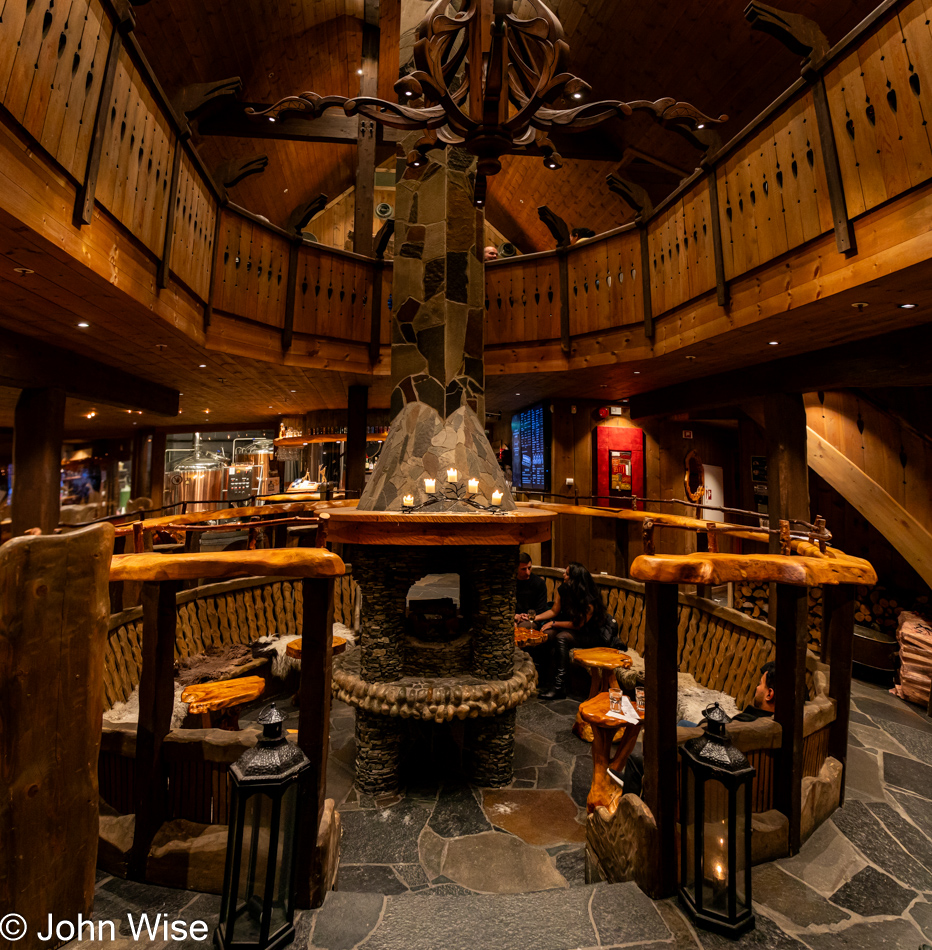
Before entering Ægir Bryggeri (Aegir Microbrewery), we dined next door at Flåmsbrygga Hotel. There was nothing extraordinary about dinner, but then came dessert and a nice conversation with our server, Jose from Chile. A brown goat cheese (you might remember the Brunost we had in Oslo) was the basis for a pannacotta topped with cloudberries, yum! Chatting with our server, we brought up the music and got to discussing Los Prisioneros, a famous Chilean band, and it turned out that this young guy loved them and put the track Tren Al Sur into the restaurant playlist. Dinner became nearly surreal here in Norway as we were listening to Los Prisioneros from Chile.
